Heterocyclic compound and organic light-emitting device including the same
Kim , et al. October 20, 2
U.S. patent number 10,807,984 [Application Number 15/870,310] was granted by the patent office on 2020-10-20 for heterocyclic compound and organic light-emitting device including the same. This patent grant is currently assigned to Samsung Display Co., Ltd., Seoul National University R&DB Foundation. The grantee listed for this patent is SAMSUNG DISPLAY CO., LTD., Seoul National University R&DB Foundation. Invention is credited to Illhun Cho, Hyein Jeong, Sehun Kim, Sooyoung Park, Chihyun Ryoo, Junghoon Yang.
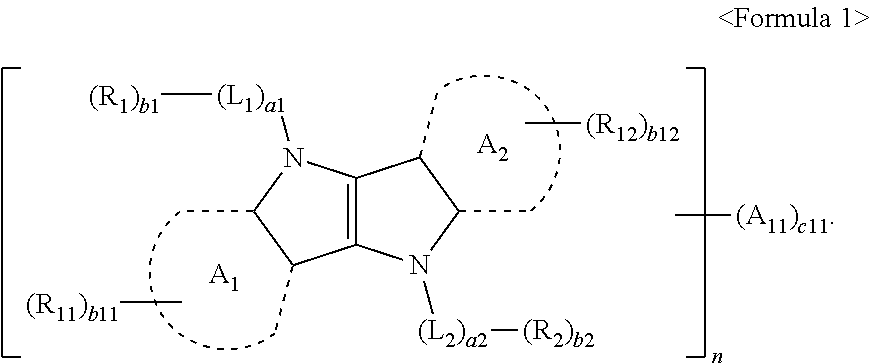
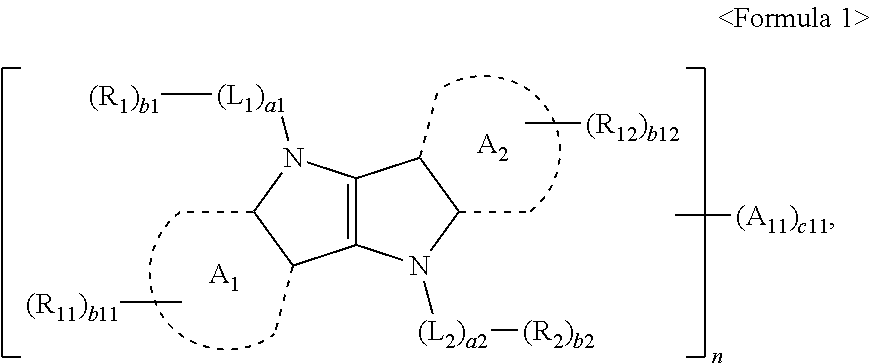
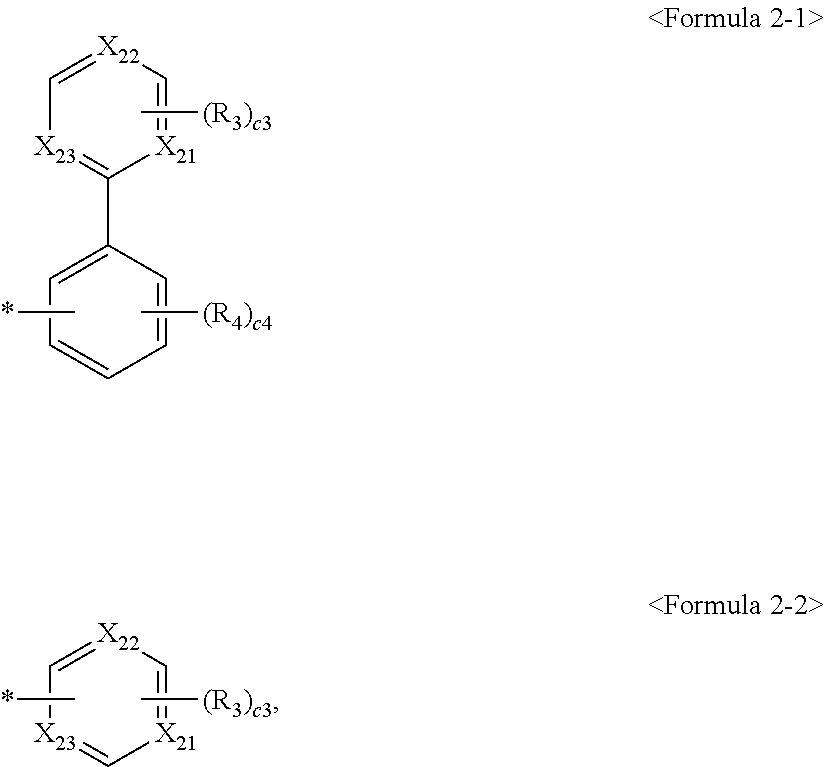
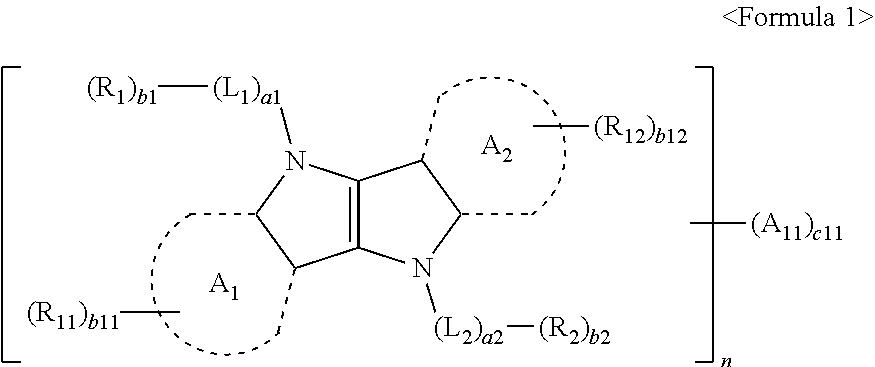






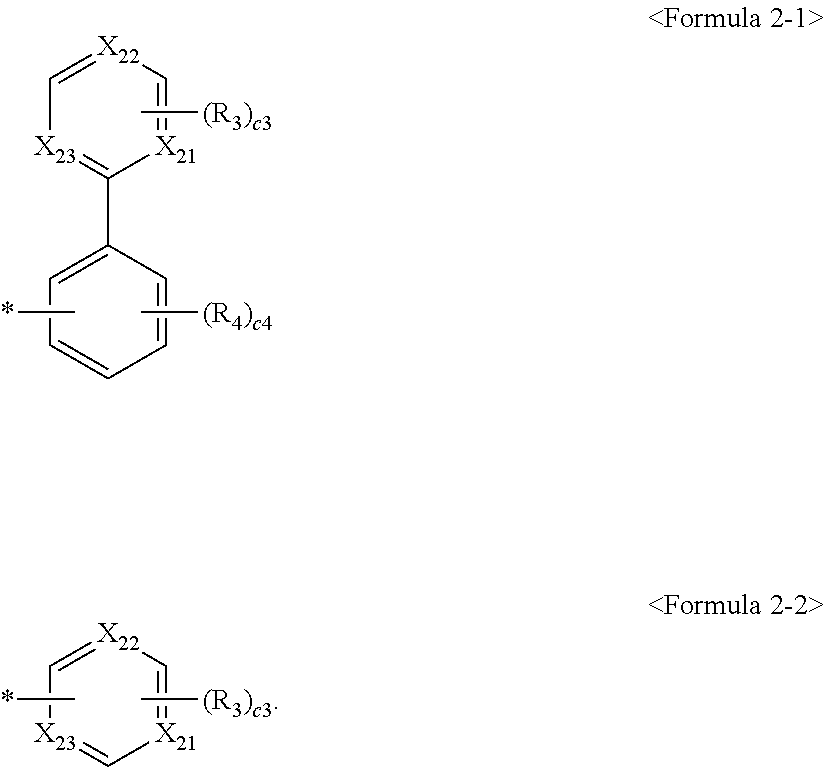

View All Diagrams
| United States Patent | 10,807,984 |
| Kim , et al. | October 20, 2020 |
Heterocyclic compound and organic light-emitting device including the same
Abstract
A heterocyclic compound and an organic light-emitting device including the heterocyclic compound, the heterocyclic compound being represented by Formula 1: ##STR00001##
| Inventors: | Kim; Sehun (Yongin-si, KR), Park; Sooyoung (Seoul, KR), Yang; Junghoon (Seoul, KR), Ryoo; Chihyun (Seoul, KR), Jeong; Hyein (Yongin-si, KR), Cho; Illhun (Yongin-si, KR) | ||||||||||
|---|---|---|---|---|---|---|---|---|---|---|---|
| Applicant: |
|
||||||||||
| Assignee: | Samsung Display Co., Ltd.
(Yongin-si, KR) Seoul National University R&DB Foundation (Seoul, KR) |
||||||||||
| Family ID: | 1000005125492 | ||||||||||
| Appl. No.: | 15/870,310 | ||||||||||
| Filed: | January 12, 2018 |
Prior Publication Data
| Document Identifier | Publication Date | |
|---|---|---|
| US 20180230156 A1 | Aug 16, 2018 | |
Foreign Application Priority Data
| Feb 10, 2017 [KR] | 10-2017-0018956 | |||
| Dec 6, 2017 [KR] | 10-2017-0166650 | |||
| Current U.S. Class: | 1/1 |
| Current CPC Class: | H01L 51/0067 (20130101); H01L 51/5004 (20130101); C09K 11/06 (20130101); H01L 51/0072 (20130101); C07D 487/04 (20130101); C07D 519/00 (20130101); C09K 2211/1059 (20130101); C09K 2211/1029 (20130101); H01L 51/506 (20130101); H01L 2251/552 (20130101); H01L 51/5012 (20130101) |
| Current International Class: | H01L 51/50 (20060101); C07D 487/04 (20060101); C07D 519/00 (20060101); C09K 11/06 (20060101); H01L 51/00 (20060101) |
References Cited [Referenced By]
U.S. Patent Documents
| 8766248 | July 2014 | Hotta et al. |
| 8766249 | July 2014 | Sawada et al. |
| 2013/0193429 | August 2013 | Sawada et al. |
| 2013/0200350 | August 2013 | Sawada et al. |
| 2016/0005979 | January 2016 | Kim |
| 2016/0072076 | March 2016 | Stoessel et al. |
| 10-2013-0107295 | Oct 2013 | KR | |||
| 10-2013-0139996 | Dec 2013 | KR | |||
| 10-2014-0000692 | Jan 2014 | KR | |||
| 10-2014-0038060 | Mar 2014 | KR | |||
| 10-2015-0132872 | Nov 2015 | KR | |||
| WO 2012/035853 | Mar 2012 | WO | |||
| WO 2014/046392 | Mar 2014 | WO | |||
Other References
|
C W. Tang, Electroluminescence of doped organic thin films, J Appl. Phys., 65, 3610 (1989); doi: 10.1063/1.343409. cited by applicant . Hiroki Uoyama, et al., Highly efficient organic light-emitting diodes from delayed fluorescence, Nature 11687, Dec. 12, 2012, pp. 234-240, vol. 492, doi:10.1038. cited by applicant. |
Primary Examiner: Clark; Gregory D
Attorney, Agent or Firm: Lewis Roca Rothgerber Christie LLP
Claims
What is claimed is:
1. An organic light-emitting device, comprising: a first electrode; a second electrode facing the first electrode; and an organic layer between the first electrode and the second electrode, the organic layer including an emission layer, wherein the emission layer comprises a host and a dopant, an amount of the dopant in the emission layer is in a range of about 0.01 parts to about 15 parts by weight based on 100 parts by weight of the host, and wherein the dopant includes a heterocyclic compound represented by Formula 1: ##STR00087## wherein, in Formula 1, ring A.sub.1 and ring A.sub.2 are each independently a C.sub.5-C.sub.60 carbocyclic group, L.sub.1 and L.sub.2 are each independently a substituted or unsubstituted C.sub.5-C.sub.60 carbocyclic group or a substituted or unsubstituted C.sub.1-C.sub.60 heterocyclic group, a.sub.1 and a.sub.2 are each independently an integer from 0 to 5, wherein, when a1 is 0, *-(L.sub.1).sub.a1-*' is a single bond, and when a.sub.2 is 0, *-(L.sub.2).sub.a2-*' is a single bond, n is 1, 2, or 3, c11 is an integer from 0 to 5, provided that, when n is 1, c11 is 0, A.sub.11 is selected from a substituted or unsubstituted C.sub.5-C.sub.60 carbocyclic group, a substituted or unsubstituted C.sub.1-C.sub.60 heterocyclic group, and *--C(.dbd.O)--*', R.sub.1, R.sub.2, R.sub.11, and R.sub.12 are each independently selected from a binding site to A.sub.11, hydrogen, deuterium, --F, --Cl, --Br, --I, a hydroxyl group, a cyano group, a nitro group, an amidino group, a hydrazino group, a hydrazono group, a substituted or unsubstituted C.sub.1-C.sub.60 alkyl group, a substituted or unsubstituted C.sub.2-C.sub.60 alkenyl group, a substituted or unsubstituted C.sub.2-C.sub.60 alkynyl group, a substituted or unsubstituted C.sub.1-C.sub.60 alkoxy group, a substituted or unsubstituted C.sub.3-C.sub.10 cycloalkyl group, a substituted or unsubstituted C.sub.1-C.sub.10 heterocycloalkyl group, a substituted or unsubstituted C.sub.3-C.sub.10 cycloalkenyl group, a substituted or unsubstituted C.sub.1-C.sub.10 heterocycloalkenyl group, a substituted or unsubstituted C.sub.6-C.sub.60 aryl group, a substituted or unsubstituted C.sub.6-C.sub.60 aryloxy group, a substituted or unsubstituted C.sub.6-C.sub.60 arylthio group, a substituted or unsubstituted C.sub.1-C.sub.60 heteroaryl group, a substituted or unsubstituted monovalent non-aromatic condensed polycyclic group, a substituted or unsubstituted monovalent non-aromatic condensed heteropolycyclic group, --Si(Q.sub.1)(Q.sub.2)(Q.sub.3), --N(Q.sub.1)(Q.sub.2), --B(Q.sub.1)(Q.sub.2), --C(.dbd.O)(Q.sub.1), --S(.dbd.O).sub.2(Q.sub.1), and --P(.dbd.O)(Q.sub.1)(Q.sub.2), b1, b2, b11, and b12 are each independently an integer from 1 to 4, 1) when n is 1, at least one of R.sub.1, R.sub.2, R.sub.11, and R.sub.12 is selected from hydrogen, a cyano group, --C(.dbd.O)(Q.sub.1), and a group represented by Formula 2-1, and 2) when n is 2 or 3, i) at least one of R.sub.1, R.sub.2, R.sub.11, and R.sub.12 is selected from a cyano group, --C(.dbd.O)(Q.sub.1), a group represented by Formula 2-1, and a group represented by Formula 2-2, ii) *-(A.sub.11).sub.c11-*' is substituted with at least one substituent selected from a cyano group, --C(.dbd.O)(C).sub.1), a group represented by Formula 2-1, and a group represented by Formula 2-2, or iii) at least one of A.sub.11 in the number of c11 is *--C(.dbd.O)--*': ##STR00088## wherein, in Formulae 2-1 and 2-2, X.sub.21 is N or C(R.sub.21), X.sub.22 is N or C(R.sub.22), X.sub.23 is N or C(R.sub.23), and at least one of X.sub.21 to X.sub.23 is N, R.sub.3, R.sub.4, and R.sub.21 to R.sub.23 are each independently selected from hydrogen, deuterium, --F, --Cl, --Br, --I, a hydroxyl group, a cyano group, a nitro group, an amidino group, a hydrazino group, a hydrazono group, a substituted or unsubstituted C.sub.1-C.sub.60 alkyl group, a substituted or unsubstituted C.sub.2-C.sub.60 alkenyl group, a substituted or unsubstituted C.sub.2-C.sub.60 alkynyl group, a substituted or unsubstituted C.sub.1-C.sub.60 alkoxy group, a substituted or unsubstituted C.sub.3-C.sub.10 cycloalkyl group, a substituted or unsubstituted C.sub.1-C.sub.10 heterocycloalkyl group, a substituted or unsubstituted C.sub.3-C.sub.10 cycloalkenyl group, a substituted or unsubstituted C.sub.1-C.sub.10 heterocycloalkenyl group, a substituted or unsubstituted C.sub.6-C.sub.60 aryl group, a substituted or unsubstituted C.sub.6-C.sub.60 aryloxy group, a substituted or unsubstituted C.sub.6-C.sub.60 arylthio group, a substituted or unsubstituted C.sub.1-C.sub.60 heteroaryl group, a substituted or unsubstituted monovalent non-aromatic condensed polycyclic group, a substituted or unsubstituted monovalent non-aromatic condensed heteropolycyclic group, --Si(Q.sub.1)(Q.sub.2)(Q.sub.3), --N(Q.sub.1)(Q.sub.2), --B(Q.sub.1)(Q.sub.2), --C(.dbd.O)(Q.sub.1), --S(.dbd.O).sub.2(Q.sub.1), and --P(.dbd.O)(Q.sub.1)(Q.sub.2), c3 is an integer from 0 to 2, and c4 is an integer from 0 to 3, at least one substituent of the substituted C.sub.5-C.sub.60 carbocyclic group, the substituted C.sub.1-C.sub.60 heterocyclic group, the substituted C.sub.1-C.sub.60 alkyl group, the substituted C.sub.2-C.sub.60 alkenyl group, the substituted C.sub.2-C.sub.60 alkynyl group, the substituted C.sub.1-C.sub.60 alkoxy group, the substituted C.sub.3-C.sub.10 cycloalkyl group, the substituted C.sub.1-C.sub.10 heterocycloalkyl group, the substituted C.sub.3-C.sub.10 cycloalkenyl group, the substituted C.sub.1-C.sub.10 heterocycloalkenyl group, the substituted C.sub.6-C.sub.60 aryl group, the substituted C.sub.6-C.sub.60 aryloxy group, the substituted C.sub.6-C.sub.60 arylthio group, the substituted C.sub.1-C.sub.60 heteroaryl group, the substituted monovalent non-aromatic condensed polycyclic group, and the substituted monovalent non-aromatic condensed heteropolycyclic group is selected from: deuterium, --F, --Cl, --Br, --I, a hydroxyl group, a cyano group, a nitro group, an amidino group, a hydrazino group, a hydrazono group, a C.sub.1-C.sub.60 alkyl group, a C.sub.2-C.sub.60 alkenyl group, a C.sub.2-C.sub.60 alkynyl group, and a C.sub.1-C.sub.60 alkoxy group; a C.sub.1-C.sub.60 alkyl group, a C.sub.2-C.sub.60 alkenyl group, a C.sub.2-C.sub.60 alkynyl group, and a C.sub.1-C.sub.60 alkoxy group, each substituted with at least one selected from deuterium, --F, --Cl, --Br, --I, a hydroxyl group, a cyano group, a nitro group, an amidino group, a hydrazino group, a hydrazono group, a C.sub.3-C.sub.10 cycloalkyl group, a C.sub.1-C.sub.10 heterocycloalkyl group, a C.sub.3-C.sub.10 cycloalkenyl group, a C.sub.1-C.sub.10 heterocycloalkenyl group, a C.sub.6-C.sub.60 aryl group, a C.sub.6-C.sub.60 aryloxy group, a C.sub.6-C.sub.60 arylthio group, a C.sub.1-C.sub.60 heteroaryl group, a monovalent non-aromatic condensed polycyclic group, a monovalent non-aromatic condensed heteropolycyclic group, --Si(Q.sub.11)(Q.sub.12)(Q.sub.13), --N(Q.sub.11)(Q.sub.12), --B(Q.sub.11)(Q.sub.12), --C(.dbd.O)(Q.sub.11), --S(.dbd.O).sub.2(Q.sub.11), and --P(.dbd.O)(Q.sub.11)(Q.sub.12); a C.sub.3-C.sub.10 cycloalkyl group, a C.sub.1-C.sub.10 heterocycloalkyl group, a C.sub.3-C.sub.10 cycloalkenyl group, a C.sub.1-C.sub.10 heterocycloalkenyl group, a C.sub.6-C.sub.60 aryl group, a C.sub.6-C.sub.60 aryloxy group, a C.sub.6-C.sub.60 arylthio group, a C.sub.1-C.sub.60 heteroaryl group, a monovalent non-aromatic condensed polycyclic group, and a monovalent non-aromatic condensed heteropolycyclic group; a C.sub.3-C.sub.10 cycloalkyl group, a C.sub.1-C.sub.10 heterocycloalkyl group, a C.sub.3-C.sub.10 cycloalkenyl group, a C.sub.1-C.sub.10 heterocycloalkenyl group, a C.sub.6-C.sub.60 aryl group, a C.sub.6-C.sub.60 aryloxy group, a C.sub.6-C.sub.60 arylthio group, a C.sub.1-C.sub.60 heteroaryl group, a monovalent non-aromatic condensed polycyclic group, and a monovalent non-aromatic condensed heteropolycyclic group, each substituted with at least one selected from deuterium, --F, --Cl, --Br, --I, a hydroxyl group, a cyano group, a nitro group, an amidino group, a hydrazino group, a hydrazono group, a C.sub.1-C.sub.60 alkyl group, a C.sub.2-C.sub.60 alkenyl group, a C.sub.2-C.sub.60 alkynyl group, a C.sub.1-C.sub.6o alkoxy group, a C.sub.3-C.sub.10 cycloalkyl group, a C.sub.1-C.sub.10 heterocycloalkyl group, a C.sub.3-C.sub.10 cycloalkenyl group, a C.sub.1-C.sub.10 heterocycloalkenyl group, a C.sub.6-C.sub.60 aryl group, a C.sub.6-C.sub.60 aryloxy group, a C.sub.6-C.sub.60 arylthio group, a C.sub.1-C.sub.60 heteroaryl group, a monovalent non-aromatic condensed polycyclic group, a monovalent non-aromatic condensed heteropolycyclic group, --Si(Q.sub.21)(Q.sub.22)(Q.sub.23), --N(Q.sub.21)(Q.sub.22), --B(Q.sub.21)(Q.sub.22), --C(.dbd.O)(Q.sub.21), --S(.dbd.O).sub.2(Q.sub.21), and --P(.dbd.O)(Q.sub.21)(Q.sub.22); and --Si(Q.sub.31)(Q.sub.32)(Q.sub.33), --N(Q.sub.31)(Q.sub.32), --B(Q.sub.31)(Q.sub.32), --C(.dbd.O)(Q.sub.31), --S(.dbd.O).sub.2(Q.sub.31), and --P(.dbd.O)(Q.sub.31)(Q.sub.32), Q.sub.1 to Q.sub.3, Q.sub.11 to Q.sub.13, Q.sub.21 to Q.sub.23, and Q.sub.31 to Q.sub.33 are each independently selected from hydrogen, deuterium, --F, --Cl, --Br, --I, a hydroxyl group, a cyano group, a nitro group, an amidino group, a hydrazino group, a hydrazono group, a C.sub.1-C.sub.60 alkyl group, a C.sub.2-C.sub.60 alkenyl group, a C.sub.2-C.sub.60 alkynyl group, a C.sub.1-C.sub.60 alkoxy group, a C.sub.3-C.sub.10 cycloalkyl group, a C.sub.1-C.sub.10 heterocycloalkyl group, a C.sub.3-C.sub.10 cycloalkenyl group, a C.sub.1-C.sub.10 heterocycloalkenyl group, a C.sub.6-C.sub.60 aryl group, a C.sub.1-C.sub.60 heteroaryl group, a monovalent non-aromatic condensed polycyclic group, a monovalent non-aromatic condensed heteropolycyclic group, a biphenyl group, and a terphenyl group, and * and *' each indicate a binding site to a neighboring atom.
2. The organic light-emitting device as claimed in claim 1, wherein ring A.sub.1 and ring A.sub.2 are each independently selected from a benzene group, a pentalene group, an indene group, a naphthalene group, a phenanthrene group, and an anthracene group.
3. The organic light-emitting device as claimed in claim 1, wherein ring A.sub.1 and ring A.sub.2 are each independently selected from a benzene group, a naphthalene group, and an anthracene group.
4. The organic light-emitting device as claimed in claim 1, wherein L.sub.1 and L.sub.2 are each independently selected from: a benzene group, a pentalene group, an indene group, a naphthalene group, an azulene group, an indacene group, an acenaphthalene group, a fluorene group, a spiro-bifluorene group, a benzofluorene group, a dibenzofluorene group, a phenalene group, a phenanthrene group, an anthracene group, a fluoranthene group, a triphenylene group, a pyrene group, a chrysene group, a perylene group, and a pentacene group; and a benzene group, a pentalene group, an indene group, a naphthalene group, an azulene group, an indacene group, an acenaphthalene group, a fluorene group, a spiro-bifluorene group, a benzofluorene group, a dibenzofluorene group, a phenalene group, a phenanthrene group, an anthracene group, a fluoranthene group, a triphenylene group, a pyrene group, a chrysene group, a perylene group, and a pentacene group, each substituted with at least one selected from deuterium, --F, --Cl, --Br, --I, a hydroxyl group, a cyano group, a nitro group, an amidino group, a hydrazino group, a hydrazono group, a C.sub.1-C.sub.20 alkyl group, a C.sub.1-C.sub.20 alkoxy group, a C.sub.3-C.sub.10 cycloalkyl group, a C.sub.1-C.sub.10 heterocycloalkyl group, a C.sub.3-C.sub.10 cycloalkenyl group, a C.sub.1-C.sub.10 heterocycloalkenyl group, a C.sub.6-C.sub.20 aryl group, a C.sub.1-C.sub.20 heteroaryl group, a monovalent non-aromatic condensed polycyclic group, a monovalent non-aromatic condensed heteropolycyclic group, a methylphenyl group, a biphenyl group, and --Si(Q.sub.31)(Q.sub.32)(Q.sub.33), in which Q.sub.31 to Q.sub.33 are each independently selected from hydrogen, deuterium, --F, --Cl, --Br, --I, a hydroxyl group, a cyano group, a nitro group, an amidino group, a hydrazino group, a hydrazono group, a C.sub.1-C.sub.60 alkyl group, a C.sub.2-C.sub.60 alkenyl group, a C.sub.2-C.sub.60 alkynyl group, a C.sub.1-C.sub.60 alkoxy group, a C.sub.3-C.sub.10 cycloalkyl group, a C.sub.1-C.sub.10 heterocycloalkyl group, a C.sub.3-C.sub.10 cycloalkenyl group, a C.sub.1-C.sub.10 heterocycloalkenyl group, a C.sub.6-C.sub.60 aryl group, a C.sub.1-C.sub.60 heteroaryl group, a monovalent non-aromatic condensed polycyclic group, a monovalent non-aromatic condensed heteropolycyclic group, a biphenyl group, and a terphenyl group.
5. The organic light-emitting device as claimed in claim 1, wherein L.sub.1 and L.sub.2 are each independently selected from: a benzene group, a pentalene group, an indene group, and a naphthalene group; and a benzene group, a pentalene group, an indene group, and a naphthalene group, each substituted with at least one selected from deuterium, --F, --Cl, --Br, --I, a hydroxyl group, a cyano group, a nitro group, an amidino group, a hydrazino group, a hydrazono group, a C.sub.1-C.sub.20 alkyl group, and a C.sub.1-C.sub.20 alkoxy group.
6. The organic light-emitting device as claimed in claim 1, wherein a1 and a2 are each independently an integer from 0 to 2.
7. The organic light-emitting device as claimed in claim 1, wherein, A.sub.11 is selected from: a benzene group, a pentalene group, an indene group, a naphthalene group, an azulene group, an indacene group, an acenaphthalene group, a fluorene group, a spiro-bifluorene group, a benzofluorene group, a dibenzofluorene group, a phenalene group, a phenanthrene group, an anthracene group, a fluoranthene group, a triphenylene group, a pyrene group, a chrysene group, a perylene group, a pentacene group, a pyrrole group, a thiophene group, a furan group, a silole group, an imidazole group, a pyrazole group, a thiazole group, an isothiazole group, an oxazole group, an isoxazole group, a pyridine group, a pyrazine group, a pyrimidine group, a pyridazine group, an indole group, an iso-indole group, an indazole group, a purine group, a quinoline group, an isoquinoline group, a benzoquinoline group, a benzoisoquinoline group, a phthalazine group, a naphthyridine group, a quinoxaline group, a quinazoline group, a cinnoline group, a phenanthridine group, an acridine group, a phenanthroline group, a phenazine group, a benzimidazole group, a benzofuran group, a benzothiophene group, a benzosilole group, a benzothiazole group, an iso-benzothiazole group, a benzoxazole group, an isobenzoxazole group, a triazole group, a tetrazole group, an oxadiazole group, a triazine group, a carbazole group, a dibenzofuran group, a dibenzothiophene group, a dibenzosilole group, a benzocarbazole group, a naphthobenzofuran group, a naphthobenzothiophene group, a naphthobenzosilole group, a dibenzocarbazole group, a dinaphthofuran group, a dinaphthothiophene group, a dinaphthosilole group, a thiadiazol group, an imidazopyridine group, an imidazopyrimidine group, an oxazolpyridine group, a thiazolpyridine group, a benzonaphthyridine group, an azafluorene group, an azaspiro-bifluorene group, an azacarbazole group, an azadibenzofuran group, an azadibenzothiophene group, an azadibenzosilole group, an indeno pyrrole group, an indolopyrrole group, an indeno carbazole group, and an indolocarbazole group; a benzene group, a pentalene group, an indene group, a naphthalene group, an azulene group, an indacene group, an acenaphthalene group, a fluorene group, a spiro-bifluorene group, a benzofluorene group, a dibenzofluorene group, a phenalene group, a phenanthrene group, an anthracene group, a fluoranthene group, a triphenylene group, a pyrene group, a chrysene group, a perylene group, a pentacene group, a pyrrole group, a thiophene group, a furan group, a silole group, an imidazole group, a pyrazole group, a thiazole group, an isothiazole group, an oxazole group, an isoxazole group, a pyridine group, a pyrazine group, a pyrimidine group, a pyridazine group, an indole group, an iso-indole group, an indazole group, a purine group, a quinoline group, an isoquinoline group, a benzoquinoline group, a benzoisoquinoline group, a phthalazine group, a naphthyridine group, a quinoxaline group, a quinazoline group, a cinnoline group, a phenanthridine group, an acridine group, a phenanthroline group, a phenazine group, a benzimidazole group, a benzofuran group, a benzothiophene group, a benzosilole group, a benzothiazole group, an iso-benzothiazole group, a benzoxazole group, an isobenzoxazole group, a triazole group, a tetrazole group, an oxadiazole group, a triazine group, a carbazole group, a dibenzofuran group, a dibenzothiophene group, a dibenzosilole group, a benzocarbazole group, a naphthobenzofuran group, a naphthobenzothiophene group, a naphthobenzosilole group, a dibenzocarbazole group, a dinaphthofuran group, a dinaphthothiophene group, a dinaphthosilole group, a thiadiazol group, an imidazopyridine group, an imidazopyrimidine group, an oxazolpyridine group, a thiazolpyridine group, a benzonaphthyridine group, an azafluorene group, an azaspiro-bifluorene group, an azacarbazole group, an azadibenzofuran group, an azadibenzothiophene group, an azadibenzosilole group, an indeno pyrrole group, an indolopyrrole group, an indeno carbazole group, and an indolocarbazole group, each substituted with at least one selected from deuterium, --F, --Cl, --Br, --I, a hydroxyl group, a cyano group, a nitro group, an amidino group, a hydrazino group, a hydrazono group, a C.sub.1-C.sub.20 alkyl group, a C.sub.1-C.sub.20 alkoxy group, a C.sub.3-C.sub.10 cycloalkyl group, a C.sub.1-C.sub.10 heterocycloalkyl group, a C.sub.3-C.sub.10 cycloalkenyl group, a C.sub.1-C.sub.10 heterocycloalkenyl group, a C.sub.6-C.sub.20 aryl group, a C.sub.1-C.sub.20 heteroaryl group, a monovalent non-aromatic condensed polycyclic group, a monovalent non-aromatic condensed heteropolycyclic group, a methylphenyl group, a biphenyl group, and --Si(Q.sub.31)(Q.sub.32)(Q.sub.33); and *--C(.dbd.O)--', wherein Q.sub.31 to Q.sub.33 are each independently selected from a C.sub.1-C.sub.10 alkyl group, a C.sub.1-C.sub.10 alkoxy group, a phenyl group, a biphenyl group, a terphenyl group, and a naphthyl group, and * and *' each indicate a binding site to a neighboring atom.
8. The organic light-emitting device as claimed in claim 1, wherein (A.sub.11).sub.c11 is selected from *C(.dbd.O)--*' and groups represented by Formulae 3-1 to 3-41: ##STR00089## ##STR00090## ##STR00091## ##STR00092## ##STR00093## wherein, in Formulae 3-1 to 3-41, Y.sub.1 is O, S, C(Z.sub.3)(Z.sub.4), N(Z.sub.5), or Si(Z.sub.6)(Z.sub.7), Z.sub.1 to Z.sub.7 are each independently selected from: hydrogen, deuterium, --F, --Cl, --Br, --I, a hydroxyl group, a cyano group, a nitro group, an amidino group, a hydrazino group, a hydrazono group, a C.sub.1-C.sub.20 alkyl group, a C.sub.1-C.sub.20 alkoxy group, a cyclopentyl group, a cyclohexyl group, a cycloheptyl group, a cyclopentenyl group, a cyclohexenyl group, a phenyl group, a biphenyl group, a terphenyl group, a pentalenyl group, an indenyl group, a naphthyl group, an azulenyl group, an indacenyl group, an acenaphthyl group, a fluorenyl group, a spiro-bifluorenyl group, a spiro-benzofluorene-fluorenyl group, a benzofluorenyl group, a dibenzofluorenyl group, a phenalenyl group, a phenanthrenyl group, an anthracenyl group, a fluoranthenyl group, a triphenylenyl group, a pyrenyl group, a chrysenyl group, a perylenyl group, a pentacenyl group, a pyrrolyl group, a thiophenyl group, a furanyl group, a silolyl group, an imidazolyl group, a pyrazolyl group, a thiazolyl group, an isothiazolyl group, an oxazolyl group, an isoxazolyl group, a pyridinyl group, a pyrazinyl group, a pyrimidinyl group, a pyridazinyl group, an indolyl group, an isoindolyl group, an indazolyl group, a purinyl group, a quinolinyl group, an isoquinolinyl group, a benzoquinolinyl group, an benzoisoquinolinyl group, a phthalazinyl group, a naphthyridinyl group, a quinoxalinyl group, a benzoquinoxalinyl group, a quinazolinyl group, a benzoquinazolinyl group, a cinnolinyl group, a phenanthridinyl group, an acridinyl group, a phenanthrolinyl group, a phenazinyl group, a benzimidazolyl group, a benzofuranyl group, a benzothiophenyl group, a benzosilolyl group, a benzothiazolyl group, an isobenzothiazolyl group, a benzoxazolyl group, an isobenzoxazolyl group, a triazolyl group, a tetrazolyl group, an oxadiazolyl group, a triazinyl group, a carbazolyl group, a dibenzofuranyl group, a dibenzothiophenyl group, a dibenzosilolyl group, a benzocarbazolyl group, a naphthobenzofuranyl group, a naphthobenzothiophenyl group, a naphthobenzosilolyl group, a dibenzocarbazolyl group, a dinaphthofuranyl group, a dinaphthothiophenyl group, a dinaphthosilolyl group, a thiadiazolyl group, an imidazopyridinyl group, an imidazopyrimidinyl group, an oxazolopyridinyl group, a thiazolopyridinyl group, a benzonaphthyridinyl group, an azafluorenyl group, an azaspiro-bifluorenyl group, an azacarbazolyl group, an azadibenzofuranyl group, an azadibenzothiophenyl group, an azadibenzosilolyl group, an indeno pyrrolyl group, an indolopyrrolyl group, an indeno carbazolyl group, and an indolocarbazolyl group, d2 is an integer from 0 to 2, d3 is an integer from 0 to 3, d4 is an integer from 0 to 4, d5 is an integer from 0 to 5, d6 is an integer from 0 to 6, d8 is an integer from 0 to 8, and * and *' each indicate a binding site to a neighboring atom.
9. The organic light-emitting device as claimed in claim 1, wherein the heterocyclic compound represented by Formula 1 is represented by Formula 1-1: ##STR00094## wherein, in Formula 1-1, R.sub.1, R.sub.2, L.sub.1, L.sub.2, a1, a2, b1, and b2 are defined the same as R.sub.1, R.sub.2, L.sub.1, L.sub.2, a1, a2, b1, and b2 of Formula 1, at least one of R.sub.1 and R.sub.2 is selected from hydrogen, a cyano group, --C(.dbd.O)(Q.sub.1), and a group represented by Formula 2-1: ##STR00095## wherein, in Formula 2-1, X.sub.21 is N or C(R.sub.21), X.sub.22 is N or C(R.sub.22), X.sub.23 is N or C(R.sub.23), and at least one of X.sub.21 to X.sub.23 is N, and R.sub.3, R.sub.4, and R.sub.21 to R.sub.23 are each independently selected from: hydrogen, deuterium, --F, --Cl, --Br, --I, a hydroxyl group, a cyano group, a nitro group, an amidino group, a hydrazino group, a hydrazono group, a C.sub.1-C.sub.20 alkyl group, and a C.sub.1-C.sub.20 alkoxy group; a C.sub.1-C.sub.20 alkyl group and a C.sub.1-C.sub.20 alkoxy group, each substituted with at least one selected from deuterium, --F, --Cl, --Br, --I, a hydroxyl group, a cyano group, a nitro group, an amidino group, a hydrazino group, and a hydrazono group; a cyclopentyl group, a cyclohexyl group, a cyclopentenyl group, a cyclohexenyl group, a phenyl group, a biphenyl group, and a terphenyl group; and a cyclopentyl group, a cyclohexyl group, a cyclopentenyl group, a cyclohexenyl group, a phenyl group, a biphenyl group, and a terphenyl group, each substituted with at least one selected from deuterium, --F, --Cl, --Br, --I, a hydroxyl group, a cyano group, a nitro group, an amidino group, a hydrazino group, a hydrazono group, a C.sub.1-C.sub.20 alkyl group, a C.sub.1-C.sub.20 alkoxy group, a cyclopentyl group, a cyclohexyl group, a cyclopentenyl group, a cyclohexenyl group, a phenyl group, a biphenyl group, and a terphenyl group, wherein Q.sub.1 is selected from a C.sub.1-C.sub.10 alkyl group, a C.sub.1-C.sub.10 alkoxy group, a phenyl group, a biphenyl group, a terphenyl group, and a naphthyl group.
10. The organic light-emitting device as claimed in claim 9, wherein R.sub.1 and R.sub.2 of Formula 1-1 are each independently selected from hydrogen, a cyano group, and groups represented by Formulae 4-1 to 4-4: ##STR00096##
11. The organic light-emitting device as claimed in claim 1, wherein the heterocyclic compound represented by Formula 1 is represented by Formula 1-2: ##STR00097## wherein, in Formula 1-2, L.sub.1, L.sub.2, R.sub.2, a1, a2, and b2 are defined the same as L.sub.1, L.sub.2, R.sub.2, a1, a2, and b2 of Formula 1, L.sub.31, L.sub.32, R.sub.32, a.sub.31, a.sub.32, and b.sub.32 are respectively defined the same as L.sub.1, L.sub.2, R.sub.2, a1, a2, and b2 of Formula 1 (i) at least one of R.sub.2 and R.sub.32 is selected from a cyano group, --C(.dbd.O)(C)i), a group represented by Formula 2-1, and a group represented by Formula 2-2, (ii) *-(A.sub.11).sub.c11-' is substituted with at least one substituent selected from a cyano group and --C(.dbd.O)(Q.sub.1), or (iii) at least one of A.sub.11 in the number of c11 is *--C(.dbd.O)--*': ##STR00098## wherein, in Formulae 2-1 and 2-2, X.sub.21 is N or C(R.sub.21), X.sub.22 is N or C(R.sub.22), X.sub.23 is N or C(R.sub.23), and at least one of X.sub.21 to X.sub.23 is N, and R.sub.3, R.sub.4, and R.sub.21 to R.sub.23 are each independently selected from: hydrogen, deuterium, --F, --Cl, --Br, --I, a hydroxyl group, a cyano group, a nitro group, an amidino group, a hydrazino group, a hydrazono group, a C.sub.1-C.sub.20 alkyl group, and a C.sub.1-C.sub.20 alkoxy group; a C.sub.1-C.sub.20 alkyl group and a C.sub.1-C.sub.20 alkoxy group, each substituted with at least one selected from deuterium, --F, --Cl, --Br, --I, a hydroxyl group, a cyano group, a nitro group, an amidino group, a hydrazino group, and a hydrazono group; a cyclopentyl group, a cyclohexyl group, a cyclopentenyl group, a cyclohexenyl group, a phenyl group, a biphenyl group, and a terphenyl group; and a cyclopentyl group, a cyclohexyl group, a cyclopentenyl group, a cyclohexenyl group, a phenyl group, a biphenyl group, and a terphenyl group, each substituted with at least one selected from deuterium, --F, --Cl, --Br, --I, a hydroxyl group, a cyano group, a nitro group, an amidino group, a hydrazino group, a hydrazono group, a C.sub.1-C.sub.20 alkyl group, a C.sub.1-C.sub.20 alkoxy group, a cyclopentyl group, a cyclohexyl group, a cyclopentenyl group, a cyclohexenyl group, a phenyl group, a biphenyl group, and a terphenyl group, wherein Q.sub.1 is selected from a C.sub.1-C.sub.10 alkyl group, a C.sub.1-C.sub.10 alkoxy group, a phenyl group, a biphenyl group, a terphenyl group, and a naphthyl group.
12. The organic light-emitting device as claimed in claim 11, wherein (i) when a1 and a31 are each 0, A.sub.11 is a group represented by Formula 5-2 or 5-3, and (ii) when a1 and a31 are each 1, A.sub.11 is a group represented by Formula 5-1: ##STR00099## wherein in Formulae 5-1 to 5-3, Z.sub.11 and Z.sub.12 are each independently selected from: hydrogen, deuterium, --F, --Cl, --Br, --I, a hydroxyl group, a cyano group, a nitro group, an amidino group, a hydrazino group, a hydrazono group, a C.sub.1-C.sub.20 alkyl group, a C.sub.1-C.sub.20 alkoxy group, a cyclopentyl group, a cyclohexyl group, a cycloheptyl group, a cyclopentenyl group, a cyclohexenyl group, a phenyl group, a biphenyl group, a terphenyl group, a pentalenyl group, an indenyl group, and a naphthyl group, d2 is an integer from 0 to 2, d4 is an integer from 0 to 4, and * and *' each indicate a binding site to a neighboring atom.
13. The organic light-emitting device as claimed in claim 1, wherein a difference between a singlet (S1) energy level and a triplet (T3) energy level of the heterocyclic compound is 0.3 eV or less.
14. The organic light-emitting device as claimed in claim 1, wherein the heterocyclic compound is one of Compounds 1 to 8: ##STR00100## ##STR00101##
15. The organic light-emitting device as claimed in claim 1, wherein: the first electrode is an anode, the second electrode is a cathode, the organic layer further includes a hole transport region between the first electrode and the emission layer and an electron transport region between the emission layer and the second electrode, the hole transport region includes a hole injection layer, a hole transport layer, an emission auxiliary layer, an electron blocking layer, or any combination thereof, and the electron transport region includes a hole blocking layer, an electron transport layer, an electron injection layer, or any combination thereof.
16. The organic light-emitting device as claimed in claim 1, wherein: the heterocyclic compound included in the emission layer is a thermally activated delayed fluorescence (TADF) emitter, and the emission layer emits delayed fluorescence.
17. The organic light-emitting device as claimed in claim 15, wherein the hole transport region includes a p-dopant of which a lowest unoccupied molecular orbital (LUMO) energy level is -3.5 eV or less.
Description
CROSS-REFERENCE TO RELATED APPLICATION
Korean Patent Application No. 10-2017-0018956, filed on Feb. 10, 2017, in the Korean Intellectual Property Office, and entitled: "Heterocyclic Compound and Organic Light-Emitting Device Including the Same,"; and Korean Patent Application No. 10-2017-0166650, filed on Dec. 6, 2017, in the Korean Intellectual Property Office, and entitled: "Heterocyclic Compound and Organic Light-Emitting Device Including the Same,", is incorporated by reference herein in its entirety.
BACKGROUND
1. Field
Embodiments relate to a heterocyclic compound and an organic light-emitting device including the same.
2. Description of the Related Art
Organic light-emitting devices are self-emission devices that produce full-color images, and also have wide viewing angles, high contrast ratios, short response times, as well as excellent characteristics in terms of brightness, driving voltage, and response speed.
An example of such organic light-emitting devices may include a first electrode disposed on a substrate, and a hole transport region, an emission layer, an electron transport region, and a second electrode, which are sequentially disposed on the first electrode. Holes provided from the first electrode may move toward the emission layer through the hole transport region, and electrons provided from the second electrode may move toward the emission layer through the electron transport region. Carriers, such as holes and electrons, recombine in the emission layer to produce excitons. These excitons transit from an excited state to a ground state, thereby generating light.
SUMMARY
Embodiments are directed to a heterocyclic compound and an organic light-emitting device including the same.
The embodiments may be realized by providing a heterocyclic compound represented by Formula 1:
##STR00002##
wherein, in Formula 1, ring A.sub.1, ring A.sub.2 are each independently a C.sub.5-C.sub.60 carbocyclic group, L.sub.1, and L.sub.2 are each independently a substituted or unsubstituted C.sub.5-C.sub.60 carbocyclic group or a substituted or unsubstituted C.sub.1-C.sub.60 heterocyclic group, a1 and a2 are each independently an integer selected from 0 to 5, wherein, when a1 is 0, *-(L.sub.1).sub.a1-*' is a single bond, and when a2 is 0, *-(L.sub.2).sub.a2-*' is a single bond, n is 1, 2, or 3, c11 is an integer from 0 to 5, provided that, when n is 1, c11 is 0, A.sub.11 is selected from a substituted or unsubstituted C.sub.5-C.sub.60 carbocyclic group, a substituted or unsubstituted C.sub.1-C.sub.60 heterocyclic group, and *--C(.dbd.O)--*', R.sub.1, R.sub.2, R.sub.11, and R.sub.12 are each independently selected from a binding site to A.sub.11, hydrogen, deuterium, --F, --Cl, --Br, --I, a hydroxyl group, a cyano group, a nitro group, an amidino group, a hydrazino group, a hydrazono group, a substituted or unsubstituted C.sub.1-C.sub.60 alkyl group, a substituted or unsubstituted C.sub.2-C.sub.60 alkenyl group, a substituted or unsubstituted C.sub.2-C.sub.60 alkynyl group, a substituted or unsubstituted C.sub.1-C.sub.60 alkoxy group, a substituted or unsubstituted C.sub.3-C.sub.10 cycloalkyl group, a substituted or unsubstituted C.sub.1-C.sub.10 heterocycloalkyl group, a substituted or unsubstituted C.sub.3-C.sub.10 cycloalkenyl group, a substituted or unsubstituted C.sub.1-C.sub.10 heterocycloalkenyl group, a substituted or unsubstituted C.sub.6-C.sub.60 aryl group, a substituted or unsubstituted C.sub.6-C.sub.60 aryloxy group, a substituted or unsubstituted C.sub.6-C.sub.60 arylthio group, a substituted or unsubstituted C.sub.1-C.sub.60 heteroaryl group, a substituted or unsubstituted monovalent non-aromatic condensed polycyclic group, a substituted or unsubstituted monovalent non-aromatic condensed heteropolycyclic group, --Si(Q.sub.1)(Q.sub.2)(Q.sub.3), --N(Q.sub.1)(Q.sub.2), --B(Q.sub.1)(Q.sub.2), --C(.dbd.O)(Q.sub.1), --S(.dbd.O).sub.2(Q.sub.1), and --P(.dbd.O)(Q.sub.1)(Q.sub.2), b1, b2, b11, and b12 are each independently an integer from 1 to 4, 1) when n is 1, at least one of R.sub.1, R.sub.2, R.sub.11, and R.sub.12 is selected from hydrogen, a cyano group, --C(.dbd.O)(Q.sub.1), and a group represented by Formula 2-1, and 2) when n is 2 or 3, i) at least one of R.sub.1, R.sub.2, R.sub.11, and R.sub.12 is selected from a cyano group, --C(.dbd.O)(Q.sub.1), a group represented by Formula 2-1, and a group represented by Formula 2-2, ii) *-(A.sub.11).sub.c11-*' is substituted with at least one substituent selected from a cyano group, --C(.dbd.O)(Q.sub.1), a group represented by Formula 2-1, and a group represented by Formula 2-2, or iii) at least one of A.sub.11 in the number of c11 is *--C(.dbd.O)--*':
##STR00003##
wherein, in Formulae 2-1 and 2-2, X.sub.21 is N or C(R.sub.21), X.sub.22 is N or C(R.sub.22), X.sub.23 is N or C(R.sub.23), and at least one of X.sub.21 to X.sub.23 is N, R.sub.3, R.sub.4, and R.sub.21 to R.sub.23 are each independently selected from hydrogen, deuterium, --F, --Cl, --Br, --I, a hydroxyl group, a cyano group, a nitro group, an amidino group, a hydrazino group, a hydrazono group, a substituted or unsubstituted C.sub.1-C.sub.60 alkyl group, a substituted or unsubstituted C.sub.2-C.sub.60 alkenyl group, a substituted or unsubstituted C.sub.2-C.sub.60 alkynyl group, a substituted or unsubstituted C.sub.1-C.sub.60 alkoxy group, a substituted or unsubstituted C.sub.3-C.sub.10 cycloalkyl group, a substituted or unsubstituted C.sub.1-C.sub.10 heterocycloalkyl group, a substituted or unsubstituted C.sub.3-C.sub.10 cycloalkenyl group, a substituted or unsubstituted C.sub.1-C.sub.10 heterocycloalkenyl group, a substituted or unsubstituted C.sub.6-C.sub.60 aryl group, a substituted or unsubstituted C.sub.6-C.sub.60 aryloxy group, a substituted or unsubstituted C.sub.6-C.sub.60 arylthio group, a substituted or unsubstituted C.sub.1-C.sub.60 heteroaryl group, a substituted or unsubstituted monovalent non-aromatic condensed polycyclic group, a substituted or unsubstituted monovalent non-aromatic condensed heteropolycyclic group, --Si(Q.sub.1)(Q.sub.2)(Q.sub.3), --N(Q.sub.1)(Q.sub.2), --B(Q.sub.1)(Q.sub.2), --C(.dbd.O)(Q.sub.1), --S(.dbd.O).sub.2(Q.sub.1), and --P(.dbd.O)(Q.sub.1)(Q.sub.2), c3 is an integer from 0 to 2, and c4 is an integer from 0 to 3, at least one substituent of the substituted C.sub.5-C.sub.60 carbocyclic group, the substituted C.sub.1-C.sub.60 heterocyclic group, the substituted C.sub.1-C.sub.60 alkyl group, the substituted C.sub.2-C.sub.60 alkenyl group, the substituted C.sub.2-C.sub.60 alkynyl group, the substituted C.sub.1-C.sub.60 alkoxy group, the substituted C.sub.3-C.sub.10 cycloalkyl group, the substituted C.sub.1-C.sub.10 heterocycloalkyl group, the substituted C.sub.3-C.sub.10 cycloalkenyl group, the substituted C.sub.1-C.sub.10 heterocycloalkenyl group, the substituted C.sub.6-C.sub.60 aryl group, the substituted C.sub.6-C.sub.60 aryloxy group, the substituted C.sub.6-C.sub.60 arylthio group, the substituted C.sub.1-C.sub.60 heteroaryl group, the substituted monovalent non-aromatic condensed polycyclic group, and the substituted monovalent non-aromatic condensed heteropolycyclic group is selected from: deuterium, --F, --Cl, --Br, --I, a hydroxyl group, a cyano group, a nitro group, an amidino group, a hydrazino group, a hydrazono group, a C.sub.1-C.sub.60 alkyl group, a C.sub.2-C.sub.60 alkenyl group, a C.sub.2-C.sub.60 alkynyl group, and a C.sub.1-C.sub.60 alkoxy group; a C.sub.1-C.sub.60 alkyl group, a C.sub.2-C.sub.60 alkenyl group, a C.sub.2-C.sub.60 alkynyl group, and a C.sub.1-C.sub.60 alkoxy group, each substituted with at least one selected from deuterium, --F, --Cl, --Br, --I, a hydroxyl group, a cyano group, a nitro group, an amidino group, a hydrazino group, a hydrazono group, a C.sub.3-C.sub.10 cycloalkyl group, a C.sub.1-C.sub.10 heterocycloalkyl group, a C.sub.3-C.sub.10 cycloalkenyl group, a C.sub.1-C.sub.10 heterocycloalkenyl group, a C.sub.6-C.sub.60 aryl group, a C.sub.6-C.sub.60 aryloxy group, a C.sub.6-C.sub.60 arylthio group, a C.sub.1-C.sub.60 heteroaryl group, a monovalent non-aromatic condensed polycyclic group, a monovalent non-aromatic condensed heteropolycyclic group, --Si(Q.sub.11)(Q.sub.12)(Q.sub.13), --N(Q.sub.11)(Q.sub.12), --B(Q.sub.11)(Q.sub.12), --C(.dbd.O)(Q.sub.11), --S(.dbd.O).sub.2(Q.sub.11), and --P(.dbd.O)(Q.sub.11)(Q.sub.12); a C.sub.3-C.sub.10 cycloalkyl group, a C.sub.1-C.sub.10 heterocycloalkyl group, a C.sub.3-C.sub.10 cycloalkenyl group, a C.sub.1-C.sub.10 heterocycloalkenyl group, a C.sub.6-C.sub.60 aryl group, a C.sub.6-C.sub.60 aryloxy group, a C.sub.6-C.sub.60 arylthio group, a C.sub.1-C.sub.60 heteroaryl group, a monovalent non-aromatic condensed polycyclic group, and a monovalent non-aromatic condensed heteropolycyclic group; a C.sub.3-C.sub.10 cycloalkyl group, a C.sub.1-C.sub.10 heterocycloalkyl group, a C.sub.3-C.sub.10 cycloalkenyl group, a C.sub.1-C.sub.10 heterocycloalkenyl group, a C.sub.6-C.sub.60 aryl group, a C.sub.6-C.sub.60 aryloxy group, a C.sub.6-C.sub.60 arylthio group, a C.sub.1-C.sub.60 heteroaryl group, a monovalent non-aromatic condensed polycyclic group, and a monovalent non-aromatic condensed heteropolycyclic group, each substituted with at least one selected from deuterium, --F, --Cl, --Br, --I, a hydroxyl group, a cyano group, a nitro group, an amidino group, a hydrazino group, a hydrazono group, a C.sub.1-C.sub.60 alkyl group, a C.sub.2-C.sub.60 alkenyl group, a C.sub.2-C.sub.60 alkynyl group, a C.sub.1-C.sub.60 alkoxy group, a C.sub.3-C.sub.10 cycloalkyl group, a C.sub.1-C.sub.10 heterocycloalkyl group, a C.sub.3-C.sub.10 cycloalkenyl group, a C.sub.1-C.sub.10 heterocycloalkenyl group, a C.sub.6-C.sub.60 aryl group, a C.sub.6-C.sub.60 aryloxy group, a C.sub.6-C.sub.60 arylthio group, a C.sub.1-C.sub.60 heteroaryl group, a monovalent non-aromatic condensed polycyclic group, a monovalent non-aromatic condensed heteropolycyclic group, --Si(Q.sub.21)(Q.sub.22)(Q.sub.23), --N(Q.sub.21)(Q.sub.22), --B(Q.sub.21)(Q.sub.22), --C(.dbd.O)(Q.sub.21), --S(.dbd.O).sub.2(Q.sub.21), and --P(.dbd.O)(Q.sub.21)(Q.sub.22); and --Si(Q.sub.31)(Q.sub.32)(Q.sub.33), --N(Q.sub.31)(Q.sub.32), --B(Q.sub.31)(Q.sub.32), --C(.dbd.O)(Q.sub.31), --S(.dbd.O).sub.2(Q.sub.31), and --P(.dbd.O)(Q.sub.31)(Q.sub.32), Q.sub.1 to Q.sub.3, Q.sub.11 to Q.sub.13, Q.sub.21 to Q.sub.23, and Q.sub.31 to Q.sub.33 are each independently selected from hydrogen, deuterium, --F, --Cl, --Br, --I, a hydroxyl group, a cyano group, a nitro group, an amidino group, a hydrazino group, a hydrazono group, a C.sub.1-C.sub.60 alkyl group, a C.sub.2-C.sub.60 alkenyl group, a C.sub.2-C.sub.60 alkynyl group, a C.sub.1-C.sub.60 alkoxy group, a C.sub.3-C.sub.10 cycloalkyl group, a C.sub.1-C.sub.10 heterocycloalkyl group, a C.sub.3-C.sub.10 cycloalkenyl group, a C.sub.1-C.sub.10 heterocycloalkenyl group, a C.sub.6-C.sub.60 aryl group, a C.sub.1-C.sub.60 heteroaryl group, a monovalent non-aromatic condensed polycyclic group, a monovalent non-aromatic condensed heteropolycyclic group, a biphenyl group, and a terphenyl group, and * and *' each indicate a binding site to a neighboring atom.
The embodiments may be realized by providing an organic light-emitting device including a first electrode; a second electrode facing the first electrode; and an organic layer between the first electrode and the second electrode, the organic layer including an emission layer, wherein the organic layer includes the heterocyclic compound according to an embodiment.
BRIEF DESCRIPTION OF THE DRAWINGS
Features will be apparent to those of skill in the art by describing in detail exemplary embodiments with reference to the attached drawings in which:
FIG. 1 illustrates a schematic view of an organic light-emitting device according to an embodiment;
FIG. 2 illustrates a schematic view of an organic light-emitting device according to an embodiment;
FIG. 3 illustrates a schematic view of an organic light-emitting device according to an embodiment; and
FIG. 4 illustrates a schematic view of an organic light-emitting device according to an embodiment.
DETAILED DESCRIPTION
Example embodiments will now be described more fully hereinafter with reference to the accompanying drawings; however, they may be embodied in different forms and should not be construed as limited to the embodiments set forth herein. Rather, these embodiments are provided so that this disclosure will be thorough and complete, and will fully convey exemplary implementations to those skilled in the art.
In the drawing figures, the dimensions of layers and regions may be exaggerated for clarity of illustration. It will also be understood that when a layer or element is referred to as being "on" another layer or element, it can be directly on the other layer or element, or intervening layers may also be present. Further, it will be understood that when a layer or element is referred to as being "under" another layer or element, it can be directly under, and one or more intervening layers may also be present. In addition, it will also be understood that when a layer or element is referred to as being "between" two layers, it can be the only layer or element between the two layers, or one or more intervening layers may also be present. Like reference numerals refer to like elements throughout.
A heterocyclic compound according to an embodiment may be represented by Formula 1:
##STR00004##
In Formula 1, ring A.sub.1, and ring A.sub.2 are each independently a C.sub.5-C.sub.60 carbocyclic group, L.sub.1, and L.sub.2 may each independently be a substituted or unsubstituted C.sub.5-C.sub.60 carbocyclic group or a substituted or unsubstituted C.sub.1-C.sub.60 heterocyclic group.
In an implementation, rings A.sub.1 and A.sub.2 in Formula 1 may each independently be selected from, e.g., a benzene group, a pentalene group, an indene group, a naphthalene group, a phenanthrene group, and an anthracene group.
In an implementation, rings A.sub.1 and A.sub.2 in Formula 1 may each independently be selected from, e.g., a benzene group, a naphthalene group, and an anthracene group. In an implementation, rings A.sub.1 and A.sub.2 in Formula 1 may each independently be selected from, e.g., a benzene group and a naphthalene group. In an implementation, rings A.sub.1 and A.sub.2 in Formula 1 may each be, e.g., a benzene group.
L.sub.1 and L.sub.2 in Formula 1 may each independently be selected from or include, e.g., a substituted or unsubstituted C.sub.5-C.sub.60 carbocyclic group.
In an implementation, L.sub.1 and L.sub.2 in Formula 1 may each independently be selected from:
a benzene group, a pentalene group, an indene group, a naphthalene group, an azulene group, an indacene group, an acenaphthalene group, a fluorene group, a spiro-bifluorene group, a benzofluorene group, a dibenzofluorene group, a phenalene group, a phenanthrene group, an anthracene group, a fluoranthene group, a triphenylene group, a pyrene group, a chrysene group, a perylene group, and a pentacene group; and
a benzene group, a pentalene group, an indene group, a naphthalene group, an azulene group, an indacene group, an acenaphthalene group, a fluorene group, a spiro-bifluorene group, a benzofluorene group, a dibenzofluorene group, a phenalene group, a phenanthrene group, an anthracene group, a fluoranthene group, a triphenylene group, a pyrene group, a chrysene group, a perylene group, and a pentacene group, each substituted with at least one selected from deuterium, --F, --Cl, --Br, --I, a hydroxyl group, a cyano group, a nitro group, an amidino group, a hydrazino group, a hydrazono group, a C.sub.1-C.sub.20 alkyl group, a C.sub.1-C.sub.20 alkoxy group, a C.sub.3-C.sub.10 cycloalkyl group, a C.sub.1-C.sub.10 heterocycloalkyl group, a C.sub.3-C.sub.10 cycloalkenyl group, a C.sub.1-C.sub.10 heterocycloalkenyl group, a C.sub.6-C.sub.20 aryl group, a C.sub.1-C.sub.20 heteroaryl group, a monovalent non-aromatic condensed polycyclic group, a monovalent non-aromatic condensed heteropolycyclic group, a methylphenyl group, a biphenyl group, and --Si(Q.sub.31)(Q.sub.32)(Q.sub.33).
In an implementation, L.sub.1 and L.sub.2 in Formula 1 may each independently be selected from:
a benzene group, a pentalene group, an indene group, and a naphthalene group; and
a benzene group, a pentalene group, an indene group, and a naphthalene group, each substituted with at least one selected from deuterium, --F, --Cl, --Br, --I, a hydroxyl group, a cyano group, a nitro group, an amidino group, a hydrazino group, a hydrazono group, a C.sub.1-C.sub.20 alkyl group, and a C.sub.1-C.sub.20 alkoxy group.
In an implementation, L.sub.1 and L.sub.2 in Formula 1 may each independently be selected from:
a benzene group and a naphthalene group; and
a benzene group and a naphthalene group, each substituted with at least one selected from deuterium, --F, --Cl, --Br, --I, a hydroxyl group, a cyano group, a nitro group, an amidino group, a hydrazino group, a hydrazono group, a C.sub.1-C.sub.20 alkyl group, and a C.sub.1-C.sub.20 alkoxy group.
a1 and a2 may each independently be, e.g., an integer from 0 to 5.
In an implementation, a1 and a2 may each independently be, e.g., an integer from 0 to 3. In an implementation, a1 and a2 may each independently be, e.g., an integer from 0 to 2. In an implementation, a1 and a2 may each independently be, e.g., 0 or 1.
When a1 is 0, *-(L.sub.1).sub.a1-*' may be a single bond, and when a2 is 0, *-(L.sub.2).sub.a2-*' may be a single bond.
n may be 1, 2, or 3, provided that, when n is 1, (A.sub.11).sub.c11 does not exist or is not present in the compound (e.g., c11 is 0).
In an implementation, A.sub.11 may be selected from or include, e.g., a substituted or unsubstituted C.sub.5-C.sub.60 carbocyclic group, a substituted or unsubstituted C.sub.1-C.sub.60 heterocyclic group, and *--C(.dbd.O)--*'.
In an implementation, A.sub.11 may be selected from:
a benzene group, a pentalene group, an indene group, a naphthalene group, an azulene group, an indacene group, an acenaphthalene group, a fluorene group, a spiro-bifluorene group, a benzofluorene group, a dibenzofluorene group, a phenalene group, a phenanthrene group, an anthracene group, a fluoranthene group, a triphenylene group, a pyrene group, a chrysene group, a perylene group, a pentacene group, a pyrrole group, a thiophene group, a furan group, a silole group, an imidazole group, a pyrazole group, a thiazole group, an isothiazole group, an oxazole group, an isoxazole group, a pyridine group, a pyrazine group, a pyrimidine group, a pyridazine group, an indole group, an iso-indole group, an indazole group, a purine group, a quinoline group, an isoquinoline group, a benzoquinoline group, a benzoisoquinoline group, a phthalazine group, a naphthyridine group, a quinoxaline group, a quinazoline group, a cinnoline group, a phenanthridine group, an acridine group, a phenanthroline group, a phenazine group, a benzimidazole group, a benzofuran group, a benzothiophene group, a benzosilole group, a benzothiazole group, an iso-benzothiazole group, a benzoxazole group, an isobenzoxazole group, a triazole group, a tetrazole group, an oxadiazole group, a triazine group, a carbazole group, a dibenzofuran group, a dibenzothiophene group, a dibenzosilole group, a benzocarbazole group, a naphthobenzofuran group, a naphthobenzothiophene group, a naphthobenzosilole group, a dibenzocarbazole group, a dinaphthofuran group, a dinaphthothiophene group, a dinaphthosilole group, a thiadiazol group, an imidazopyridine group, an imidazopyrimidine group, an oxazolpyridine group, a thiazolpyridine group, a benzonaphthyridine group, an azafluorene group, an azaspiro-bifluorene group, an azacarbazole group, an azadibenzofuran group, an azadibenzothiophene group, an azadibenzosilole group, an indeno pyrrole group, an indolopyrrole group, an indeno carbazole group, and an indolocarbazole group;
a benzene group, a pentalene group, an indene group, a naphthalene group, an azulene group, an indacene group, an acenaphthalene group, a fluorene group, a spiro-bifluorene group, a benzofluorene group, a dibenzofluorene group, a phenalene group, a phenanthrene group, an anthracene group, a fluoranthene group, a triphenylene group, a pyrene group, a chrysene group, a perylene group, a pentacene group, a pyrrole group, a thiophene group, a furan group, a silole group, an imidazole group, a pyrazole group, a thiazole group, an isothiazole group, an oxazole group, an isoxazole group, a pyridine group, a pyrazine group, a pyrimidine group, a pyridazine group, an indole group, an iso-indole group, an indazole group, a purine group, a quinoline group, an isoquinoline group, a benzoquinoline group, a benzoisoquinoline group, a phthalazine group, a naphthyridine group, a quinoxaline group, a quinazoline group, a cinnoline group, a phenanthridine group, an acridine group, a phenanthroline group, a phenazine group, a benzimidazole group, a benzofuran group, a benzothiophene group, a benzosilole group, a benzothiazole group, an iso-benzothiazole group, a benzoxazole group, an isobenzoxazole group, a triazole group, a tetrazole group, an oxadiazole group, a triazine group, a carbazole group, a dibenzofuran group, a dibenzothiophene group, a dibenzosilole group, a benzocarbazole group, a naphthobenzofuran group, a naphthobenzothiophene group, a naphthobenzosilole group, a dibenzocarbazole group, a dinaphthofuran group, a dinaphthothiophene group, a dinaphthosilole group, a thiadiazol group, an imidazopyridine group, an imidazopyrimidine group, an oxazolpyridine group, a thiazolpyridine group, a benzonaphthyridine group, an azafluorene group, an azaspiro-bifluorene group, an azacarbazole group, an azadibenzofuran group, an azadibenzothiophene group, an azadibenzosilole group, an indeno pyrrole group, an indolopyrrole group, an indeno carbazole group, and an indolocarbazole group, each substituted with at least one selected from deuterium, --F, --Cl, --Br, --I, a hydroxyl group, a cyano group, a nitro group, an amidino group, a hydrazino group, a hydrazono group, a C.sub.1-C.sub.20 alkyl group, a C.sub.1-C.sub.20 alkoxy group, a C.sub.3-C.sub.10 cycloalkyl group, a C.sub.1-C.sub.10 heterocycloalkyl group, a C.sub.3-C.sub.10 cycloalkenyl group, a C.sub.1-C.sub.10 heterocycloalkenyl group, a C.sub.6-C.sub.20 aryl group, a C.sub.1-C.sub.20 heteroaryl group, a monovalent non-aromatic condensed polycyclic group, a monovalent non-aromatic condensed heteropolycyclic group, a methylphenyl group, a biphenyl group, and --Si(Q.sub.31)(Q.sub.32)(Q.sub.33); and
*--C(.dbd.O)--*',
wherein Q.sub.31 to Q.sub.33 may each independently be selected from a C.sub.1-C.sub.10 alkyl group, a C.sub.1-C.sub.10 alkoxy group, a phenyl group, a biphenyl group, a terphenyl group, and a naphthyl group.
In an implementation, c11 may be an integer from 0 to 5, e.g., from 1 to 5.
In an implementation, c11 may be an integer from 1 to 3. In an implementation, c11 may be 1 or 2.
In an implementation, (A.sub.11)c.sub.11 may be selected from, e.g., *--C(.dbd.O)--*' and groups represented by Formulae 3-1 to 3-41:
##STR00005## ##STR00006## ##STR00007## ##STR00008## ##STR00009## ##STR00010##
In Formulae 3-1 to 3-41,
Y.sub.1 may be O, S, C(Z.sub.3)(Z.sub.4), N(Z.sub.5), or Si(Z.sub.6)(Z.sub.7),
Z.sub.1 to Z.sub.7 may each independently be selected from:
hydrogen, deuterium, --F, --Cl, --Br, --I, a hydroxyl group, a cyano group, a nitro group, an amidino group, a hydrazino group, a hydrazono group, a C.sub.1-C.sub.20 alkyl group, a C.sub.1-C.sub.20 alkoxy group, a cyclopentyl group, a cyclohexyl group, a cycloheptyl group, a cyclopentenyl group, a cyclohexenyl group, a phenyl group, a biphenyl group, a terphenyl group, a pentalenyl group, an indenyl group, a naphthyl group, an azulenyl group, an indacenyl group, an acenaphthyl group, a fluorenyl group, a spiro-bifluorenyl group, a spiro-benzofluorene-fluorenyl group, a benzofluorenyl group, a dibenzofluorenyl group, a phenalenyl group, a phenanthrenyl group, an anthracenyl group, a fluoranthenyl group, a triphenylenyl group, a pyrenyl group, a chrysenyl group, a perylenyl group, a pentacenyl group, a pyrrolyl group, a thiophenyl group, a furanyl group, a silolyl group, an imidazolyl group, a pyrazolyl group, a thiazolyl group, an isothiazolyl group, an oxazolyl group, an isoxazolyl group, a pyridinyl group, a pyrazinyl group, a pyrimidinyl group, a pyridazinyl group, an indolyl group, an isoindolyl group, an indazolyl group, a purinyl group, a quinolinyl group, an isoquinolinyl group, a benzoquinolinyl group, an benzoisoquinolinyl group, a phthalazinyl group, a naphthyridinyl group, a quinoxalinyl group, a benzoquinoxalinyl group, a quinazolinyl group, a benzoquinazolinyl group, a cinnolinyl group, a phenanthridinyl group, an acridinyl group, a phenanthrolinyl group, a phenazinyl group, a benzimidazolyl group, a benzofuranyl group, a benzothiophenyl group, a benzosilolyl group, a benzothiazolyl group, an isobenzothiazolyl group, a benzoxazolyl group, an isobenzoxazolyl group, a triazolyl group, a tetrazolyl group, an oxadiazolyl group, a triazinyl group, a carbazolyl group, a dibenzofuranyl group, a dibenzothiophenyl group, a dibenzosilolyl group, a benzocarbazolyl group, a naphthobenzofuranyl group, a naphthobenzothiophenyl group, a naphthobenzosilolyl group, a dibenzocarbazolyl group, a dinaphthofuranyl group, a dinaphthothiophenyl group, a dinaphthosilolyl group, a thiadiazolyl group, an imidazopyridinyl group, an imidazopyrimidinyl group, an oxazolopyridinyl group, a thiazolopyridinyl group, a benzonaphthyridinyl group, an azafluorenyl group, an azaspiro-bifluorenyl group, an azacarbazolyl group, an azadibenzofuranyl group, an azadibenzothiophenyl group, an azadibenzosilolyl group, an indeno pyrrolyl group, an indolopyrrolyl group, an indeno carbazolyl group, and an indolocarbazolyl group,
d2 may be an integer from 0 to 2,
d3 may be an integer from 0 to 3,
d4 may be an integer from 0 to 4,
d5 may be an integer from 0 to 5,
d6 may be an integer from 0 to 6, and
d8 may be an integer from 0 to 8.
In an implementation, R.sub.1, R.sub.2, R.sub.11, and R.sub.12 may each independently be selected from or include, e.g., a binding site to A.sub.11, hydrogen, deuterium, --F, --Cl, --Br, --I, a hydroxyl group, a cyano group, a nitro group, an amidino group, a hydrazino group, a hydrazono group, a substituted or unsubstituted C.sub.1-C.sub.60 alkyl group, a substituted or unsubstituted C.sub.2-C.sub.60 alkenyl group, a substituted or unsubstituted C.sub.2-C.sub.60 alkynyl group, a substituted or unsubstituted C.sub.1-C.sub.60 alkoxy group, a substituted or unsubstituted C.sub.3-C.sub.10 cycloalkyl group, a substituted or unsubstituted C.sub.1-C.sub.10 heterocycloalkyl group, a substituted or unsubstituted C.sub.3-C.sub.10 cycloalkenyl group, a substituted or unsubstituted C.sub.1-C.sub.10 heterocycloalkenyl group, a substituted or unsubstituted C.sub.6-C.sub.60 aryl group, a substituted or unsubstituted C.sub.6-C.sub.60 aryloxy group, a substituted or unsubstituted C.sub.6-C.sub.60 arylthio group, a substituted or unsubstituted C.sub.1-C.sub.60 heteroaryl group, a substituted or unsubstituted monovalent non-aromatic condensed polycyclic group, a substituted or unsubstituted monovalent non-aromatic condensed heteropolycyclic group, --Si(Q.sub.1)(Q.sub.2)(Q.sub.3), --N(Q.sub.1)(Q.sub.2), --B(Q.sub.1)(Q.sub.2), --C(.dbd.O)(Q.sub.1), --S(.dbd.O).sub.2(Q.sub.1), and --P(.dbd.O)(Q.sub.1)(Q.sub.2).
b1, b2, b11, and b12 may each independently be, e.g., an integer from 0 to 4. In an implementation, b1, b2, b11, and b12 may each independently be an integer from 0 to 2. In an implementation, b1, b2, b11, and b12 may each independently be 0 or 1.
In an implementation, in Formula 1,
1) when n is 1, at least one of R.sub.1, R.sub.2, R.sub.11, and R.sub.12 may be selected from a cyano group, --C(.dbd.O)(Q.sub.1), and a group represented by Formula 2-1, and
2) when n is 2 or 3, i) at least one of R.sub.1, R.sub.2, R.sub.11, and R.sub.12 may be selected from a cyano group, --C(.dbd.O)(Q.sub.1), a group represented by Formula 2-1, and a group represented by Formula 2-2, ii) *-(A.sub.11).sub.c11-*' may be substituted with at least one substituent selected from a cyano group, --C(.dbd.O)(Q.sub.1), a group represented by Formula 2-1, and a group represented by Formula 2-2, or iii) at least one of A.sub.11 in the number of c11 may be *--C(.dbd.O)--*':
##STR00011##
In Formulae 2-1 and 2-2,
X.sub.21 may be N or C(R.sub.21), X.sub.22 may be N or C(R.sub.22), X.sub.23 may be N or C(R.sub.23), and at least one of X.sub.21 to X.sub.23 may be N,
R.sub.3, R.sub.4, and R.sub.21 to R.sub.23 may each independently be selected from or include hydrogen, deuterium, --F, --Cl, --Br, --I, a hydroxyl group, a cyano group, a nitro group, an amidino group, a hydrazino group, a hydrazono group, a substituted or unsubstituted C.sub.1-C.sub.60 alkyl group, a substituted or unsubstituted C.sub.2-C.sub.60 alkenyl group, a substituted or unsubstituted C.sub.2-C.sub.60 alkynyl group, a substituted or unsubstituted C.sub.1-C.sub.60 alkoxy group, a substituted or unsubstituted C.sub.3-C.sub.10 cycloalkyl group, a substituted or unsubstituted C.sub.1-C.sub.10 heterocycloalkyl group, a substituted or unsubstituted C.sub.3-C.sub.10 cycloalkenyl group, a substituted or unsubstituted C.sub.1-C.sub.10 heterocycloalkenyl group, a substituted or unsubstituted C.sub.6-C.sub.60 aryl group, a substituted or unsubstituted C.sub.6-C.sub.60 aryloxy group, a substituted or unsubstituted C.sub.6-C.sub.60 arylthio group, a substituted or unsubstituted C.sub.1-C.sub.60 heteroaryl group, a substituted or unsubstituted monovalent non-aromatic condensed polycyclic group, a substituted or unsubstituted monovalent non-aromatic condensed heteropolycyclic group, --Si(Q.sub.1)(Q.sub.2)(Q.sub.3), --N(Q.sub.1)(Q.sub.2), --B(Q.sub.1)(Q.sub.2), --C(.dbd.O)(Q.sub.1), --S(.dbd.O).sub.2(Q.sub.1), and --P(.dbd.O)(Q.sub.1)(Q.sub.2), and
c3 may be an integer from 0 to 2, and c4 may be an integer from 0 to 3.
In an implementation, the heterocyclic compound represented by Formula 1 may be represented by Formula 1-1:
##STR00012##
In Formula 1-1,
R.sub.1, R.sub.2, L.sub.1, L.sub.2, a1, a2, b1, and b2 may be defined the same as those of Formula 1, and at least one of R.sub.1 and R.sub.2 may selected from hydrogen, a cyano group, --C(.dbd.O)(Q.sub.1), and a group represented by Formula 2-1:
##STR00013##
In Formula 2-1,
X.sub.21 may be N or C(R.sub.21), X.sub.22 may be N or C(R.sub.22), X.sub.23 may be N or C(R.sub.23), and at least one of X.sub.21 to X.sub.23 may be N,
In an implementation, R.sub.3, R.sub.4, and R.sub.21 to R.sub.23 may each independently be selected from:
hydrogen, deuterium, --F, --Cl, --Br, --I, a hydroxyl group, a cyano group, a nitro group, an amidino group, a hydrazino group, a hydrazono group, a C.sub.1-C.sub.20 alkyl group, and a C.sub.1-C.sub.20 alkoxy group;
a C.sub.1-C.sub.20 alkyl group and a C.sub.1-C.sub.20 alkoxy group, each substituted with at least one selected from deuterium, --F, --Cl, --Br, --I, a hydroxyl group, a cyano group, a nitro group, an amidino group, a hydrazino group, and a hydrazono group;
a cyclopentyl group, a cyclohexyl group, a cyclopentenyl group, a cyclohexenyl group, a phenyl group, a biphenyl group, and a terphenyl group; and
a cyclopentyl group, a cyclohexyl group, a cyclopentenyl group, a cyclohexenyl group, a phenyl group, a biphenyl group, and a terphenyl group, each substituted with at least one selected from deuterium, --F, --Cl, --Br, --I, a hydroxyl group, a cyano group, a nitro group, an amidino group, a hydrazino group, a hydrazono group, a C.sub.1-C.sub.20 alkyl group, a C.sub.1-C.sub.20 alkoxy group, a cyclopentyl group, a cyclohexyl group, a cyclopentenyl group, a cyclohexenyl group, a phenyl group, a biphenyl group, and a terphenyl group,
wherein Q.sub.1 may be selected from a C.sub.1-C.sub.10 alkyl group, a C.sub.1-C.sub.10 alkoxy group, a phenyl group, a biphenyl group, a terphenyl group, and a naphthyl group.
In an implementation, R.sub.1 and R.sub.2 in Formulae 1 and 1-1 may each independently be selected from hydrogen, a cyano group, and groups represented by Formulae 4-1 to 4-4:
##STR00014##
In an implementation, the heterocyclic compound represented by Formula 1 may be represented by Formula 1-2:
##STR00015##
In Formula 1-2,
L.sub.1, L.sub.2, R.sub.2, a1, a2, and b2 may be defined the same as above,
L.sub.31, L.sub.32, R.sub.32, a31, a32, and b32 may be respectively defined the same as L.sub.1, L.sub.2, R.sub.2, a1, a2, and b2,
(i) at least one of R.sub.2 and R.sub.32 may be selected from a cyano group, --C(.dbd.O)(Q.sub.1), a group represented by Formula 2-1, and a group represented by Formula 2-2, (ii) *-(A.sub.11).sub.c11-*' may be substituted with at least one substituent selected from a cyano group and --C(.dbd.O)(Q.sub.1), or (iii) at least one of A.sub.11 in the number of c11 may be *--C(.dbd.O)--*',
##STR00016##
In an implementation, in Formulae 2-1 and 2-2,
X.sub.21 may be N or C(R.sub.21), X.sub.22 may be N or C(R.sub.22). X.sub.23 may be N or C(R.sub.23), and at least one of X.sub.21 to X.sub.23 may be N.
R.sub.3. R.sub.4, and R.sub.21 to R.sub.23 may each independently be selected from:
hydrogen, deuterium. --F, --Cl, --Br, --I, a hydroxyl group, a cyano group, a nitro group, an amidino group, a hydrazino group, a hydrazono group, a C.sub.1-C.sub.20 alkyl group, and a C.sub.1-C.sub.20 alkoxy group;
a C.sub.1-C.sub.20 alkyl group and a C.sub.1-C.sub.20 alkoxy group, each substituted with at least one selected from deuterium, --F, --Cl, --Br, --I, a hydroxyl group, a cyano group, a nitro group, an amidino group, a hydrazino group, and a hydrazono group;
a cyclopentyl group, a cyclohexyl group, a cyclopentenyl group, a cyclohexenyl group, a phenyl group, a biphenyl group, and a terphenyl group; and
a cyclopentyl group, a cyclohexyl group, a cyclopentenyl group, a cyclohexenyl group, a phenyl group, a biphenyl group, and a terphenyl group, each substituted with at least one selected from deuterium, --F, --Cl, --Br, --I, a hydroxyl group, a cyano group, a nitro group, an amidino group, a hydrazino group, a hydrazono group, a C.sub.1-C.sub.20 alkyl group, a C.sub.1-C.sub.20 alkoxy group, a cyclopentyl group, a cyclohexyl group, a cyclopentenyl group, a cyclohexenyl group, a phenyl group, a biphenyl group, and a terphenyl group,
wherein Q.sub.1 may be selected from a C.sub.1-C.sub.10 alkyl group, a C.sub.1-C.sub.10 alkoxy group, a phenyl group, a biphenyl group, a terphenyl group, and a naphthyl group.
In an implementation, in Formula 1-2,
(i) when a1 and a31 are each 0, A.sub.11 may be a group represented by Formula 5-2 or 5-3;
(ii) when a1 and a31 are each 1, A.sub.11 may be a group represented by Formula 5-1:
##STR00017##
In Formulae 5-1 to 5-3.
Z.sub.11 and Z.sub.12 may each independently be selected from hydrogen, deuterium, --F, --Cl, --Br, --I, a hydroxyl group, a cyano group, a nitro group, an amidino group, a hydrazino group, a hydrazono group, a C.sub.1-C.sub.20 alkyl group, a C.sub.1-C.sub.20 alkoxy group, a cyclopentyl group, a cyclohexyl group, a cycloheptyl group, a cyclopentenyl group, a cyclohexenyl group, a phenyl group, a biphenyl group, a terphenyl group, a pentalenyl group, an indenyl group, and a naphthyl group,
d2 may be an integer from 0 to 2, and
d4 may be an integer from 0 to 4.
In an implementation, a difference between a singlet (S1) energy level and a triplet (T3) energy level of the heterocyclic compound represented by Formula 1 may be 0.3 eV or less.
In an implementation, the heterocyclic compound represented by Formula 1 may be one of Compounds 1 to 8:
##STR00018## ##STR00019## ##STR00020##
As can be seen from the following formula, the heterocyclic compound represented by Formula 1 may have an electron donating group (EDG) exhibiting electron donating characteristics and an electron withdrawing group (EWG) exhibiting electron accepting characteristics within the compound. By selecting an appropriate EDG and EWG, singlet energy level and triplet energy level of the entire compound may be adjusted to exhibit thermally activated delayed fluorescence (TADF):
##STR00021##
The singlet energy and the triplet energy level of the heterocyclic compound may satisfy the following equation: .DELTA.Est=S1-T3.ltoreq.0.3 eV.
In theory, the TADF phenomenon is a method capable of using 75% of triplet excitons as fluorescent light by minimizing a difference between a singlet energy level and a triplet energy level of a luminant and activating reverse intersystem crossing at room or ambient temperature without heavy elements. In order for efficient movement of internal charges, research has been continuously conducted to reduce a difference between singlet energy level and triplet energy level, but existing TADF compounds have low efficiency and low color purity.
The heterocyclic compound according to an embodiment may include an indoloindole group containing a nitrogen atom (heterogeneous element) as an EDG, and the indoloindole group may have a resonance structure that forms a flat molecular structure as a whole. Thus, the heterocyclic compound may achieve smooth movement of internal electrons, thereby exhibiting a strong electron donating effect.
In an implementation, at least one of a phenyl group, a benzophenone, and a triazine compound, each substituted with a cyano group, may be introduced as an EWG through an "N atom" in the indoloindole group, thereby exhibiting a delayed fluorescence effect by using emission through intramolecular electron transfer.
In an implementation, in the heterocyclic compound, a triazine group may be linked to an indoloindole group via a phenylene group. Thus, an electron overlap between a highest occupied molecular orbital (HOMO) and a lowest unoccupied molecular orbital (LUMO) increases in a phenylene group, thereby increasing oscillation strength. Therefore, the heterocyclic group has high fluorescent efficiency and high color purity, as compared with a compound in which a triazine is directly linked to an indoloindole group.
In an implementation, in the heterocyclic compound, indoloindole groups may be linked via a benzophenone or dicyanobenzene group, which is an EWG, and a difference between a singlet (S1) energy level and a triplet (T3) energy level may be reduced according to strength of EWG, a crosslinking position, and a three-dimensional molecular structure. Thus, a TADF mechanism may be exhibited to thereby provide high efficiency and high color purity.
Synthesis methods of the heterocyclic compound represented by Formula 1 may be recognizable by those of ordinary skill in the art by referring to Examples provided below.
At least one of the heterocyclic compound represented by Formula 1 may be used or included between a pair of electrodes of an organic light-emitting device. For example, the heterocyclic compound may be included in at least one of a hole transport region, an electron transport region, and an emission layer.
For example, an organic light-emitting device may include: a first electrode; a second electrode facing the first electrode; and an organic layer between the first electrode and the second electrode, the organic layer including an emission layer, wherein the organic layer may include at least one of the heterocyclic compound.
The expression "(an organic layer) includes at least one of the heterocyclic compound" used herein may include a case in which (an organic layer) includes identical compounds represented by Formula 1 and a case in which (an organic layer) includes two or more different heterocyclic compounds represented by Formula 1.
For example, the first electrode may be an anode; the second electrode may be a cathode; the organic layer may further include a hole transport region between the first electrode and the emission layer and an electron transport region between the emission layer and the second electrode; the hole transport region may include a hole injection layer, a hole transport layer, an emission auxiliary layer, an electron blocking layer, or any combination thereof; and the electron transport region may include a buffer layer, a hole blocking layer, an electron control layer, an electron transport layer, an electron injection layer, or any combination thereof.
In one embodiment, the emission layer may include the heterocyclic compound.
For example, the heterocyclic compound included in the emission layer may be a TADF emitter, and
the emission layer may emit delayed fluorescence.
In an implementation, the emission layer may consist of the heterocyclic compound.
In an implementation, the emission layer may further include a host, and an amount of the heterocyclic compound may be in a range of about 0.1 parts to about 50 parts by weight, based on 100 parts by weight of the emission layer.
In an implementation, the hole transport region may include a p-dopant, of which a LUMO energy level is -3.5 eV or less.
The term "organic layer" used herein refers to a single layer and/or a plurality of layers disposed between the first electrode and the second electrode of the organic light-emitting device. A material included in the "organic layer" is not limited to an organic material.
[Description of FIG. 1]
FIG. 1 illustrates a schematic view of an organic light-emitting device 10 according to an embodiment. The organic light-emitting device 10 includes a first electrode 110, an organic layer 150, and a second electrode 190.
Hereinafter, the structure of the organic light-emitting device 10 according to an embodiment and a method of manufacturing the organic light-emitting device 10 will be described in connection with FIG. 1.
[First Electrode 110]
In an implementation, a substrate may be additionally disposed under the first electrode 110 or above the second electrode 190. The substrate may be a glass substrate or a plastic substrate, each having excellent mechanical strength, thermal stability, transparency, surface smoothness, ease of handling, and water resistance.
The first electrode 110 may be formed by depositing or sputtering a material for forming the first electrode 110 on the substrate. When the first electrode 110 is an anode, the material for a first electrode may be selected from materials with a high work function to facilitate hole injection.
The first electrode 110 may be a reflective electrode, a semi-transmissive electrode, or a transmissive electrode. In an implementation, when the first electrode 110 is a transmissive electrode, a material for forming a first electrode may be selected from indium tin oxide (ITO), indium zinc oxide (IZO), tin oxide (SnO.sub.2), zinc oxide (ZnO), and any combinations thereof. In an implementation, when the first electrode 110 is a semi-transmissive electrode or a reflective electrode, a material for forming the first electrode 110 may be selected from magnesium (Mg), silver (Ag), aluminum (Al), aluminum-lithium (Al--Li), calcium (Ca), magnesium-indium (Mg--In), magnesium-silver (Mg--Ag), and any combinations thereof.
In an implementation, the first electrode 110 may have a single-layered structure, or a multi-layered structure including two or more layers. For example, the first electrode 110 may have a three-layered structure of ITO/Ag/ITO.
[Organic Layer 150]
The organic layer 150 is disposed on the first electrode 110. The organic layer 150 may include an emission layer.
The organic layer 150 may further include a hole transport region between the first electrode 110 and the emission layer, and an electron transport region between the emission layer and the second electrode 190.
[Hole Transport Region in Organic Layer 150]
The hole transport region may have i) a single-layered structure including a single layer including a single material, ii) a single-layered structure including a single layer including a plurality of different materials, or iii) a multi-layered structure having a plurality of layers including a plurality of different materials.
The hole transport region may include at least one layer selected from a hole injection layer (HIL), a hole transport layer (HTL), an emission auxiliary layer, and an electron blocking layer (EBL).
In an implementation, the hole transport region may have a single-layered structure including a single layer including a plurality of different materials, or a multi-layered structure having a hole injection layer/hole transport layer structure, a hole injection layer/hole transport layer/emission auxiliary layer structure, a hole injection layer/emission auxiliary layer structure, a hole transport layer/emission auxiliary layer structure, or a hole injection layer/hole transport layer/electron blocking layer structure, wherein for each structure, constituting layers are sequentially stacked from the first electrode 110 in this stated order.
In an implementation, the hole transport region may include at least one selected from m-MTDATA, TDATA, 2-TNATA, NPB(NPD), .beta.-NPB, TPD, Spiro-TPD, Spiro-NPB, methylated-NPB, TAPC, HMTPD, 4,4',4''-tris(N-carbazolyl)triphenylamine (TCTA), polyaniline/dodecylbenzenesulfonic acid (PANI/DBSA), poly(3,4-ethylenedioxythiophene)/poly(4-styrenesulfonate) (PEDOT/PSS), polyaniline/camphor sulfonic acid (PANI/CSA), polyaniline/poly(4-styrenesulfonate) (PANI/PSS), a compound represented by Formula 201, and a compound represented by Formula 202:
##STR00022## ##STR00023## ##STR00024##
In Formulae 201 and 202,
L.sub.201 to L.sub.204 may each independently be selected from a substituted or unsubstituted C.sub.3-C.sub.10 cycloalkylene group, a substituted or unsubstituted C.sub.1-C.sub.10 heterocycloalkylene group, a substituted or unsubstituted C.sub.3-C.sub.10 cycloalkenylene group, a substituted or unsubstituted C.sub.1-C.sub.10 heterocycloalkenylene group, a substituted or unsubstituted C.sub.6-C.sub.60 arylene group, a substituted or unsubstituted C.sub.1-C.sub.60 heteroarylene group, a substituted or unsubstituted divalent non-aromatic condensed polycyclic group, and a substituted or unsubstituted divalent non-aromatic condensed heteropolycyclic group;
L.sub.205 may be selected from *--O--*', *--S--*', *--N(Q.sub.201)-*', a substituted or unsubstituted C.sub.1-C.sub.20 alkylene group, a substituted or unsubstituted C.sub.2-C.sub.20 alkenylene group, a substituted or unsubstituted C.sub.3-C.sub.10 cycloalkylene group, a substituted or unsubstituted C.sub.1-C.sub.10 heterocycloalkylene group, a substituted or unsubstituted C.sub.3-C.sub.10 cycloalkenylene group, a substituted or unsubstituted C.sub.1-C.sub.10 heterocycloalkenylene group, a substituted or unsubstituted C.sub.6-C.sub.60 arylene group, a substituted or unsubstituted C.sub.1-C.sub.60 heteroarylene group, a substituted or unsubstituted divalent non-aromatic condensed polycyclic group, and a substituted or unsubstituted divalent non-aromatic condensed heteropolycyclic group.
xa1 to xa4 may each independently be an integer of 0 to 3,
xa5 may be an integer of 1 to 10, and
R.sub.201 to R.sub.204 and Q.sub.201 may each independently be selected from a substituted or unsubstituted C.sub.3-C.sub.10 cycloalkyl group, a substituted or unsubstituted C.sub.1-C.sub.10 heterocycloalkyl group, a substituted or unsubstituted C.sub.3-C.sub.10 cycloalkenyl group, a substituted or unsubstituted C.sub.1-C.sub.10 heterocycloalkenyl group, a substituted or unsubstituted C.sub.6-C.sub.60 aryl group, a substituted or unsubstituted C.sub.6-C.sub.60 aryloxy group, a substituted or unsubstituted C.sub.6-C.sub.60 arylthio group, a substituted or unsubstituted C.sub.1-C.sub.60 heteroaryl group, a substituted or unsubstituted monovalent non-aromatic condensed polycyclic group, and a substituted or unsubstituted monovalent non-aromatic condensed heteropolycyclic group.
In one embodiment, in Formula 202, R.sub.201 and R.sub.202 may optionally be linked via a single bond, a dimethyl-methylene group, or a diphenyl-methylene group, and R.sub.203 and R.sub.204 may optionally be linked via a single bond, a dimethyl-methylene group, or a diphenyl-methylene group.
In one or more embodiments, regarding Formulae 201 and 202,
L.sub.201 to L.sub.205 may each independently be selected from:
a phenylene group, a pentalenylene group, an indenylene group, a naphthylene group, an azulenylene group, a heptalenylene group, an indacenylene group, an acenaphthylene group, a fluorenylene group, a spiro-bifluorenylene group, a benzofluorenylene group, a dibenzofluorenylene group, a phenalenylene group, a phenanthrenylene group, an anthracenylene group, a fluoranthenylene group, a triphenylenylene group, a pyrenylene group, a chrysenylene group, a naphthacenylene group, a picenylene group, a perylenylene group, a pentaphenylene group, a hexacenylene group, a pentacenylene group, a rubicenylene group, a coronenylene group, an ovalenylene group, a thiophenylene group, a furanylene group, a carbazolylene group, an indolylene group, an isoindolylene group, a benzofuranylene group, a benzothiophenylene group, a dibenzofuranylene group, a dibenzothiophenylene group, a benzocarbazolylene group, a dibenzocarbazolylene group, a dibenzosilolylene group, and a pyridinylene group; and
a phenylene group, a pentalenylene group, an indenylene group, a naphthylene group, an azulenylene group, a heptalenylene group, an indacenylene group, an acenaphthylene group, a fluorenylene group, a spiro-bifluorenylene group, a benzofluorenylene group, a dibenzofluorenylene group, a phenalenylene group, a phenanthrenylene group, an anthracenylene group, a fluoranthenylene group, a triphenylenylene group, a pyrenylene group, a chrysenylene group, a naphthacenylene group, a picenylene group, a perylenylene group, a pentaphenylene group, a hexacenylene group, a pentacenylene group, a rubicenylene group, a coronenylene group, an ovalenylene group, a thiophenylene group, a furanylene group, a carbazolylene group, an indolylene group, an isoindolylene group, a benzofuranylene group, a benzothiophenylene group, a dibenzofuranylene group, a dibenzothiophenylene group, a benzocarbazolylene group, a dibenzocarbazolylene group, a dibenzosilolylene group, and a pyridinylene group, each substituted with at least one selected from deuterium, --F, --Cl, --Br, --I, a hydroxyl group, a cyano group, a nitro group, an amidino group, a hydrazino group, a hydrazono group, a C.sub.1-C.sub.20 alkyl group, a C.sub.1-C.sub.20 alkoxy group, a cyclopentyl group, a cyclohexyl group, a cycloheptyl group, a cyclopentenyl group, a cyclohexenyl group, a phenyl group, a biphenyl group, a terphenyl group, a phenyl group substituted with a C.sub.1-C.sub.10 alkyl group, a phenyl group substituted with --F, a pentalenyl group, an indenyl group, a naphthyl group, an azulenyl group, a heptalenyl group, an indacenyl group, an acenaphthyl group, a fluorenyl group, a spiro-bifluorenyl group, a benzofluorenyl group, a dibenzofluorenyl group, a phenalenyl group, a phenanthrenyl group, an anthracenyl group, a fluoranthenyl group, a triphenylenyl group, a pyrenyl group, a chrysenyl group, a naphthacenyl group, a picenyl group, a perylenyl group, a pentaphenyl group, a hexacenyl group, a pentacenyl group, a rubicenyl group, a coronenyl group, an ovalenyl group, a thiophenyl group, a furanyl group, a carbazolyl group, an indolyl group, an isoindolyl group, a benzofuranyl group, a benzothiophenyl group, a dibenzofuranyl group, a dibenzothiophenyl group, a benzocarbazolyl group, a dibenzocarbazolyl group, a dibenzosilolyl group, a pyridinyl group, --Si(Q.sub.31)(Q.sub.32)(Q.sub.33), and --N(Q.sub.31)(Q.sub.32),
wherein Q.sub.31 to Q.sub.33 may each independently be selected from a C.sub.1-C.sub.10 alkyl group, a C.sub.1-C.sub.10 alkoxy group, a phenyl group, a biphenyl group, a terphenyl group, and a naphthyl group.
In one or more embodiments, xa1 to xa4 may each independently be 0, 1, or 2.
In one or more embodiments, xa5 may be 1, 2, 3, or 4.
In an implementation, R.sub.201 to R.sub.204 and Q.sub.201 may each independently be selected from:
a phenyl group, a biphenyl group, a terphenyl group, a pentalenyl group, an indenyl group, a naphthyl group, an azulenyl group, a heptalenyl group, an indacenyl group, an acenaphthyl group, a fluorenyl group, a spiro-bifluorenyl group, a benzofluorenyl group, a dibenzofluorenyl group, a phenalenyl group, a phenanthrenyl group, an anthracenyl group, a fluoranthenyl group, a triphenylenyl group, a pyrenyl group, a chrysenyl group, a naphthacenyl group, a picenyl group, a perylenyl group, a pentaphenyl group, a hexacenyl group, a pentacenyl group, a rubicenyl group, a coronenyl group, an ovalenyl group, a thiophenyl group, a furanyl group, a carbazolyl group, an indolyl group, an isoindolyl group, a benzofuranyl group, a benzothiophenyl group, a dibenzofuranyl group, a dibenzothiophenyl group, a benzocarbazolyl group, a dibenzocarbazolyl group, a dibenzosilolyl group, and a pyridinyl group; and
a phenyl group, a biphenyl group, a terphenyl group, a pentalenyl group, an indenyl group, a naphthyl group, an azulenyl group, a heptalenyl group, an indacenyl group, an acenaphthyl group, a fluorenyl group, a spiro-bifluorenyl group, a benzofluorenyl group, a dibenzofluorenyl group, a phenalenyl group, a phenanthrenyl group, an anthracenyl group, a fluoranthenyl group, a triphenylenyl group, a pyrenyl group, a chrysenyl group, a naphthacenyl group, a picenyl group, a perylenyl group, a pentaphenyl group, a hexacenyl group, a pentacenyl group, a rubicenyl group, a coronenyl group, an ovalenyl group, a thiophenyl group, a furanyl group, a carbazolyl group, an indolyl group, an isoindolyl group, a benzofuranyl group, a benzothiophenyl group, a dibenzofuranyl group, a dibenzothiophenyl group, a benzocarbazolyl group, a dibenzocarbazolyl group, a dibenzosilolyl group, and a pyridinyl group, each substituted with at least one selected from deuterium, --F, --Cl, --Br, --I, a hydroxyl group, a cyano group, a nitro group, an amidino group, a hydrazino group, a hydrazono group, a C.sub.1-C.sub.20 alkyl group, a C.sub.1-C.sub.20 alkoxy group, a cyclopentyl group, a cyclohexyl group, a cycloheptyl group, a cyclopentenyl group, a cyclohexenyl group, a phenyl group, a biphenyl group, a terphenyl group, a phenyl group substituted with a C.sub.1-C.sub.10 alkyl group, a phenyl group substituted with --F, a pentalenyl group, an indenyl group, a naphthyl group, an azulenyl group, a heptalenyl group, an indacenyl group, an acenaphthyl group, a fluorenyl group, a spiro-bifluorenyl group, a benzofluorenyl group, a dibenzofluorenyl group, a phenalenyl group, a phenanthrenyl group, an anthracenyl group, a fluoranthenyl group, a triphenylenyl group, a pyrenyl group, a chrysenyl group, a naphthacenyl group, a picenyl group, a perylenyl group, a pentaphenyl group, a hexacenyl group, a pentacenyl group, a rubicenyl group, a coronenyl group, an ovalenyl group, a thiophenyl group, a furanyl group, a carbazolyl group, an indolyl group, an isoindolyl group, a benzofuranyl group, a benzothiophenyl group, a dibenzofuranyl group, a dibenzothiophenyl group, a benzocarbazolyl group, a dibenzocarbazolyl group, a dibenzosilolyl group, a pyridinyl group, --Si(Q.sub.31)(Q.sub.32)(Q.sub.33), and --N(Q.sub.31)(Q.sub.32),
wherein Q.sub.31 to Q.sub.33 may each independently be the same as described above.
In one or more embodiments, in Formula 201, at least one selected from R.sub.201 to R.sub.203 may each independently be selected from:
a fluorenyl group, a spiro-bifluorenyl group, a carbazolyl group, a dibenzofuranyl group, and a dibenzothiophenyl group; and
a fluorenyl group, a spiro-bifluorenyl group, a carbazolyl group, a dibenzofuranyl group, and a dibenzothiophenyl group, each substituted with at least one selected from deuterium, --F, --Cl, --Br, --I, a hydroxyl group, a cyano group, a nitro group, an amidino group, a hydrazino group, a hydrazono group, a C.sub.1-C.sub.20 alkyl group, a C.sub.1-C.sub.20 alkoxy group, a cyclopentyl group, a cyclohexyl group, a cycloheptyl group, a cyclopentenyl group, a cyclohexenyl group, a phenyl group, a biphenyl group, a terphenyl group, a phenyl group substituted with a C.sub.1-C.sub.10 alkyl group, a phenyl group substituted with --F, a naphthyl group, a fluorenyl group, a spiro-bifluorenyl group, a carbazolyl group, a dibenzofuranyl group, and a dibenzothiophenyl group.
In one or more embodiments, in Formula 202, i) R.sub.201 and R.sub.202 may be linked via a single bond, and/or ii) R.sub.203 and R.sub.204 may be linked via a single bond.
In an implementation, in Formula 202, at least one selected from R.sub.201 to R.sub.204 may be selected from:
a carbazolyl group; and
a carbazolyl group substituted with at least one selected from deuterium, --F, --Cl, --Br, --I, a hydroxyl group, a cyano group, a nitro group, an amidino group, a hydrazino group, a hydrazono group, a C.sub.1-C.sub.20 alkyl group, a C.sub.1-C.sub.20 alkoxy group, a cyclopentyl group, a cyclohexyl group, a cycloheptyl group, a cyclopentenyl group, a cyclohexenyl group, a phenyl group, a biphenyl group, a terphenyl group, a phenyl group substituted with a C.sub.1-C.sub.10 alkyl group, a phenyl group substituted with --F, a naphthyl group, a fluorenyl group, a spiro-bifluorenyl group, a carbazolyl group, a dibenzofuranyl group, and a dibenzothiophenyl group.
In an implementation, the compound represented by Formula 201 may be represented by Formula 201A:
##STR00025##
In an implementation, the compound represented by Formula 201 may be represented by Formula 201A(1) below:
##STR00026##
In an implementation, the compound represented by Formula 201 may be represented by Formula 201A-1 below:
##STR00027##
In an implementation, the compound represented by Formula 202 may be represented by Formula 202A:
##STR00028##
In an implementation, the compound represented by Formula 202 may be represented by Formula 202A-1:
##STR00029##
In Formulae 201A, 201A(1), 201A-1, 202A, and 202A-1,
L.sub.201 to L.sub.203, xa1 to xa3, xa5, and R.sub.202 to R.sub.204 are the same as described above,
R.sub.211 and R.sub.212 are the same as described above in connection with R.sub.203, and
R.sub.213 to R.sub.217 may each independently be selected from hydrogen, deuterium, --F, --Cl, --Br, --I, a hydroxyl group, a cyano group, a nitro group, an amidino group, a hydrazino group, a hydrazono group, a C.sub.1-C.sub.20 alkyl group, a C.sub.1-C.sub.20 alkoxy group, a cyclopentyl group, a cyclohexyl group, a cycloheptyl group, a cyclopentenyl group, a cyclohexenyl group, a phenyl group, a biphenyl group, a terphenyl group, a phenyl group substituted with a C.sub.1-C.sub.10 alkyl group, a phenyl group substituted with --F, a pentalenyl group, an indenyl group, a naphthyl group, an azulenyl group, a heptalenyl group, an indacenyl group, an acenaphthyl group, a fluorenyl group, a spiro-bifluorenyl group, a benzofluorenyl group, a dibenzofluorenyl group, a phenalenyl group, a phenanthrenyl group, an anthracenyl group, a fluoranthenyl group, a triphenylenyl group, a pyrenyl group, a chrysenyl group, a naphthacenyl group, a picenyl group, a perylenyl group, a pentaphenyl group, a hexacenyl group, a pentacenyl group, a rubicenyl group, a coronenyl group, an ovalenyl group, a thiophenyl group, a furanyl group, a carbazolyl group, an indolyl group, an isoindolyl group, a benzofuranyl group, a benzothiophenyl group, a dibenzofuranyl group, a dibenzothiophenyl group, a benzocarbazolyl group, a dibenzocarbazolyl group, a dibenzosilolyl group, and a pyridinyl group.
In an implementation, the hole transport region may include at least one compound selected from Compounds HT1 to HT39:
##STR00030## ##STR00031## ##STR00032## ##STR00033## ##STR00034## ##STR00035## ##STR00036## ##STR00037##
A thickness of the hole transport region may be in a range of about 100 .ANG. to about 10,000 .ANG., for example, about 100 .ANG. to about 1,000 .ANG.. When the hole transport region includes at least one of a hole injection layer and a hole transport layer, a thickness of the hole injection layer may be in a range of about 100 .ANG. to about 9,000 .ANG., for example, about 100 .ANG. to about 1,000 .ANG., and a thickness of the hole transport layer may be in a range of about 50 .ANG. to about 2,000 .ANG., for example about 100 .ANG. to about 1.500 .ANG.. When the thicknesses of the hole transport region, the hole injection layer and the hole transport layer are within these ranges, satisfactory hole transporting characteristics may be obtained without a substantial increase in driving voltage.
The emission auxiliary layer may increase light-emission efficiency by compensating for an optical resonance distance according to the wavelength of light emitted by an emission layer, and the electron blocking layer may block the flow of electrons from an electron transport region. The emission auxiliary layer and the electron blocking layer may include the materials as described above.
[p-Dopant]
The hole transport region may further include, in addition to these materials, a charge-generation material for the improvement of conductive properties. The charge-generation material may be homogeneously or non-homogeneously dispersed in the hole transport region.
The charge-generation material may be, for example, a p-dopant.
In one embodiment, a lowest unoccupied molecular orbital (LUMO) energy level of the p-dopant may be -3.5 eV or less.
In an implementation, the p-dopant may include at least one selected from a quinone derivative, a metal oxide, and a cyano group-containing compound.
In an implementation, the p-dopant may include at least one selected from:
a quinone derivative, such as tetracyanoquinodimethane (TCNQ) or 2,3,5,6-tetrafluoro-7,7,8,8-tetracyanoquinodimethane (F4-TCNQ);
a metal oxide, such as tungsten oxide or molybdenum oxide;
1,4,5,8,9,11-hexaazatriphenylene-hexacarbonitrile (HAT-CN); and
a compound represented by Formula 221 below:
##STR00038##
In Formula 221,
R.sub.221 to R.sub.223 may each independently be selected from a substituted or unsubstituted C.sub.3-C.sub.10 cycloalkyl group, a substituted or unsubstituted C.sub.1-C.sub.10 heterocycloalkyl group, a substituted or unsubstituted C.sub.3-C.sub.10 cycloalkenyl group, a substituted or unsubstituted C.sub.1-C.sub.10 heterocycloalkenyl group, a substituted or unsubstituted C.sub.6-C.sub.60 aryl group, a substituted or unsubstituted C.sub.1-C.sub.60 heteroaryl group, a substituted or unsubstituted monovalent non-aromatic condensed polycyclic group, and a substituted or unsubstituted monovalent non-aromatic condensed heteropolycyclic group, wherein at least one selected from R.sub.221 to R.sub.223 may have at least one substituent selected from a cyano group, --F, --Cl, --Br, --I, a C.sub.1-C.sub.20 alkyl group substituted with --F, a C.sub.1-C.sub.20 alkyl group substituted with --Cl, a C.sub.1-C.sub.20 alkyl group substituted with --Br and a C.sub.1-C.sub.20 alkyl group substituted with --I.
[Emission Layer in Organic Layer 150]
When the organic light-emitting device 10 is a full-color organic light-emitting device, the emission layer may be patterned into a red emission layer, a green emission layer, or a blue emission layer, according to a sub-pixel. In an implementation, the emission layer may have a stacked structure of two or more layers selected from a red emission layer, a green emission layer, and a blue emission layer, in which the two or more layers contact each other or are separated from each other. In an implementation, the emission layer may include two or more materials selected from a red light-emitting material, a green light-emitting material, and a blue light-emitting material, in which the two or more materials are mixed with each other in a single layer to emit white light.
The emission layer may include a host and a dopant. The dopant may include at least one selected from a phosphorescent dopant and a fluorescent dopant.
An amount of the dopant in the emission layer may be, e.g., in a range of about 0.01 parts to about 15 parts by weight based on 100 parts by weight of the host.
A thickness of the emission layer may be in a range of about 100 .ANG. to about 1,000 .ANG., for example, about 200 .ANG. to about 600 .ANG.. When the thickness of the emission layer is within this range, excellent light-emission characteristics may be obtained without a substantial increase in driving voltage.
[Host in Emission Layer]
In an implementation, the host may include a compound represented by Formula 301 below. [Ar.sub.301].sub.xb11-[(L.sub.301).sub.xb1-R.sub.301].sub.xb21. <Formula 301>
In Formula 301,
Ar.sub.301 may be a substituted or unsubstituted C.sub.5-C.sub.60 carbocyclic group or a substituted or unsubstituted C.sub.1-C.sub.60 heterocyclic group,
xb11 may be 1, 2, or 3,
L.sub.301 may be selected from a substituted or unsubstituted C.sub.3-C.sub.10 cycloalkylene group, a substituted or unsubstituted C.sub.1-C.sub.10 heterocycloalkylene group, a substituted or unsubstituted C.sub.3-C.sub.10 cycloalkenylene group, a substituted or unsubstituted C.sub.1-C.sub.10 heterocycloalkenylene group, a substituted or unsubstituted C.sub.6-C.sub.60 arylene group, a substituted or unsubstituted C.sub.1-C.sub.60 heteroarylene group, a substituted or unsubstituted divalent non-aromatic condensed polycyclic group, and a substituted or unsubstituted divalent non-aromatic condensed heteropolycyclic group,
xb1 may be an integer from 0 to 5,
R.sub.301 may be selected from deuterium, --F, --Cl, --Br, --I, a hydroxyl group, a cyano group, a nitro group, an amidino group, a hydrazino group, a hydrazono group, a substituted or unsubstituted C.sub.1-C.sub.60 alkyl group, a substituted or unsubstituted C.sub.2-C.sub.60 alkenyl group, a substituted or unsubstituted C.sub.2-C.sub.60 alkynyl group, a substituted or unsubstituted C.sub.1-C.sub.60 alkoxy group, a substituted or unsubstituted C.sub.3-C.sub.10 cycloalkyl group, a substituted or unsubstituted C.sub.1-C.sub.10 heterocycloalkyl group, a substituted or unsubstituted C.sub.3-C.sub.10 cycloalkenyl group, a substituted or unsubstituted C.sub.1-C.sub.10 heterocycloalkenyl group, a substituted or unsubstituted C.sub.6-C.sub.60 aryl group, a substituted or unsubstituted C.sub.6-C.sub.60 aryloxy group, a substituted or unsubstituted C.sub.6-C.sub.60 arylthio group, a substituted or unsubstituted C.sub.1-C.sub.60 heteroaryl group, a substituted or unsubstituted monovalent non-aromatic condensed polycyclic group, a substituted or unsubstituted monovalent non-aromatic condensed heteropolycyclic group, --Si(Q.sub.301)(Q.sub.302)(Q.sub.303), --N(Q.sub.301)(Q.sub.302), --B(Q.sub.301)(Q.sub.302), --C(.dbd.O)(Q.sub.301), --S(.dbd.O).sub.2(Q.sub.301), and --P(.dbd.O)(Q.sub.301)(Q.sub.302),
xb21 may be an integer from 1 to 5, and
Q.sub.301 to Q.sub.303 may each independently be selected from a C.sub.1-C.sub.10 alkyl group, a C.sub.1-C.sub.10 alkoxy group, a phenyl group, a biphenyl group, a terphenyl group, and a naphthyl group.
In an implementation, Ar.sub.301 in Formula 301 may be selected from:
a naphthalene group, a fluorene group, a spiro-bifluorene group, a benzofluorene group, a dibenzofluorene group, a phenalene group, a phenanthrene group, an anthracene group, a fluoranthene group, a triphenylene group, a pyrene group, a chrysene group, a naphthacene group, a picene group, a perylene group, a pentaphene group, an indenoanthracene group, a dibenzofuran group, and a dibenzothiophene group; and
a naphthalene group, a fluorene group, a spiro-bifluorene group, a benzofluorene group, a dibenzofluorene group, a phenalene group, a phenanthrene group, an anthracene group, a fluoranthene group, a triphenylene group, a pyrene group, a chrysene group, a naphthacene group, a picene group, a perylene group, a pentaphene group, an indenoanthracene group, a dibenzofuran group, and a dibenzothiophene group, each substituted with at least one selected from deuterium, --F, --Cl, --Br, --I, a hydroxyl group, a cyano group, a nitro group, an amidino group, a hydrazino group, a hydrazono group, a C.sub.1-C.sub.20 alkyl group, a C.sub.1-C.sub.20 alkoxy group, a phenyl group, a biphenyl group, a terphenyl group, a naphthyl group, --Si(Q.sub.31)(Q.sub.32)(Q.sub.33), --N(Q.sub.31)(Q.sub.32), --B(Q.sub.31)(Q.sub.32), --C(.dbd.O)(Q.sub.31), --S(.dbd.O).sub.2(Q.sub.31), and --P(.dbd.O)(Q.sub.31)(Q.sub.32),
wherein Q.sub.31 to Q.sub.33 may each independently be selected from a C.sub.1-C.sub.10 alkyl group, a C.sub.1-C.sub.10 alkoxy group, a phenyl group, a biphenyl group, a terphenyl group, and a naphthyl group.
When xb11 in Formula 301 is two or more, two or more Ar.sub.301(s) may be linked via a single bond.
In an implementation, the compound represented by Formula 301 may be represented by Formula 301-1 or 301-2:
##STR00039##
In Formulae 301-1 and 301-2,
A.sub.301 to A.sub.304 may each independently be selected from a benzene group, a naphthalene group, a phenanthrene group, a fluoranthene group, a triphenylene group, a pyrene group, a chrysene group, a pyridine group, a pyrimidine group, an indene group, a fluorene group, a spiro-bifluorene group, a benzofluorene group, a dibenzofluorene group, an indole group, a carbazole group, a benzocarbazole group, a dibenzocarbazole group, a furan group, a benzofuran group, a dibenzofuran group, a naphthofuran group, a benzonaphthofuran group, a dinaphthofuran group, a thiophene group, a benzothiophene group, a dibenzothiophene group, a naphthothiophene group, a benzonaphthothiophene group, and a dinaphthothiophene group,
X.sub.301 may be O, S, or N-[(L.sub.304).sub.xb4-R.sub.304],
R.sub.311 to R.sub.314 may each independently be selected from hydrogen, deuterium, --F, --Cl, --Br, --I, a hydroxyl group, a cyano group, a nitro group, an amidino group, a hydrazino group, a hydrazono group, a C.sub.1-C.sub.20 alkyl group, a C.sub.1-C.sub.20 alkoxy group, a phenyl group, a biphenyl group, a terphenyl group, a naphthyl group --Si(Q.sub.31)(Q.sub.32)(Q.sub.33), --N(Q.sub.31)(Q.sub.32), --B(Q.sub.31)(Q.sub.32), --C(.dbd.O)(Q.sub.31), --S(.dbd.O).sub.2(Q.sub.31), and --P(.dbd.O)(Q.sub.31)(Q.sub.32),
xb22 and xb23 may each independently be 0, 1, or 2.
L.sub.301, xb1, R.sub.301, and Q.sub.31 to Q.sub.33 are the same as described above.
L.sub.302 to L.sub.304 may each independently be the same as described in connection with L.sub.301,
xb2 to xb4 may each independently be the same as described in connection with xb1,
R.sub.302 to R.sub.304 may each independently be the same as described in connection with R.sub.301.
For example, L.sub.301 to L.sub.304 in Formulae 301, 301-1, and 301-2 may each independently be selected from:
a phenylene group, a naphthylene group, a fluorenylene group, a spiro-bifluorenylene group, a benzofluorenylene group, a dibenzofluorenylene group, a phenanthrenylene group, an anthracenylene group, a fluoranthenylene group, a triphenylenylene group, a pyrenylene group, a chrysenylene group, a perylenylene group, a pentaphenylene group, a hexacenylene group, a pentacenylene group, a thiophenylene group, a furanylene group, a carbazolylene group, an indolylene group, an isoindolylene group, a benzofuranylene group, a benzothiophenylene group, a dibenzofuranylene group, a dibenzothiophenylene group, a benzocarbazolylene group, a dibenzocarbazolylene group, a dibenzosilolylene group, a pyridinylene group, an imidazolylene group, a pyrazolylene group, a thiazolylene group, an isothiazolylene group, an oxazolylene group, an isoxazolylene group, a thiadiazolylene group, an oxadiazolylene group, a pyrazinylene group, a pyrimidinylene group, a pyridazinylene group, a triazinylene group, a quinolinylene group, an isoquinolinylene group, a benzoquinolinylene group, a phthalazinylene group, a naphthyridinylene group, a quinoxalinylene group, a quinazolinylene group, a cinnolinylene group, a phenanthridinylene group, an acridinylene group, a phenanthrolinylene group, a phenazinylene group, a benzimidazolylene group, an isobenzothiazolylene group, a benzoxazolylene group, an isobenzoxazolylene group, a triazolylene group, a tetrazolylene group, an imidazopyridinylene group, an imidazopyrimidinylene group, and an azacarbazolylene group; and
a phenylene group, a naphthylene group, a fluorenylene group, a spiro-bifluorenylene group, a benzofluorenylene group, a dibenzofluorenylene group, a phenanthrenylene group, an anthracenylene group, a fluoranthenylene group, a triphenylenylene group, a pyrenylene group, a chrysenylene group, a perylenylene group, a pentaphenylene group, a hexacenylene group, a pentacenylene group, a thiophenylene group, a furanylene group, a carbazolylene group, an indolylene group, an isoindolylene group, a benzofuranylene group, a benzothiophenylene group, a dibenzofuranylene group, a dibenzothiophenylene group, a benzocarbazolylene group, a dibenzocarbazolylene group, a dibenzosilolylene group, a pyridinylene group, an imidazolylene group, a pyrazolylene group, a thiazolylene group, an isothiazolylene group, an oxazolylene group, an isoxazolylene group, a thiadiazolylene group, an oxadiazolylene group, a pyrazinylene group, a pyrimidinylene group, a pyridazinylene group, a triazinylene group, a quinolinylene group, an isoquinolinylene group, a benzoquinolinylene group, a phthalazinylene group, a naphthyridinylene group, a quinoxalinylene group, a quinazolinylene group, a cinnolinylene group, a phenanthridinylene group, an acridinylene group, a phenanthrolinylene group, a phenazinylene group, a benzimidazolylene group, an isobenzothiazolylene group, a benzoxazolylene group, an isobenzoxazolylene group, a triazolylene group, a tetrazolylene group, an imidazopyridinylene group, an imidazopyrimidinylene group, and an azacarbazolylene group, each substituted with at least one selected from deuterium, --F, --Cl, --Br, --I, a hydroxyl group, a cyano group, a nitro group, an amidino group, a hydrazino group, a hydrazono group, a C.sub.1-C.sub.20 alkyl group, a C.sub.1-C.sub.20 alkoxy group, a phenyl group, a biphenyl group, a terphenyl group, a naphthyl group, a fluorenyl group, a spiro-bifluorenyl group, a benzofluorenyl group, a dibenzofluorenyl group, a phenanthrenyl group, an anthracenyl group, a fluoranthenyl group, a triphenylenyl group, a pyrenyl group, a chrysenyl group, a perylenyl group, a pentaphenyl group, a hexacenyl group, a pentacenyl group, a thiophenyl group, a furanyl group, a carbazolyl group, an indolyl group, an isoindolyl group, a benzofuranyl group, a benzothiophenyl group, a dibenzofuranyl group, a dibenzothiophenyl group, a benzocarbazolyl group, a dibenzocarbazolyl group, a dibenzosilolyl group, a pyridinyl group, an imidazolyl group, a pyrazolyl group, a thiazolyl group, an isothiazolyl group, an oxazolyl group, an isoxazolyl group, a thiadiazolyl group, an oxadiazolyl group, a pyrazinyl group, a pyrimidinyl group, a pyridazinyl group, a triazinyl group, a quinolinyl group, an isoquinolinyl group, a benzoquinolinyl group, a phthalazinyl group, a naphthyridinyl group, a quinoxalinyl group, a quinazolinyl group, a cinnolinyl group, a phenanthridinyl group, an acridinyl group, a phenanthrolinyl group, a phenazinyl group, a benzimidazolyl group, an isobenzothiazolyl group, a benzoxazolyl group, an isobenzoxazolyl group, a triazolyl group, a tetrazolyl group, an imidazopyridinyl group, an imidazopyrimidinyl group, an azacarbazolyl group, --Si(Q.sub.31)(Q.sub.32)(Q.sub.33), --N(Q.sub.31)(Q.sub.32), --B(Q.sub.31)(Q.sub.32), --C(.dbd.O)(Q.sub.31), --S(.dbd.O).sub.2(Q.sub.31), and --P(.dbd.O)(Q.sub.31)(Q.sub.32),
wherein Q.sub.31 to Q.sub.33 are the same as described above.
In one embodiment, R.sub.301 to R.sub.304 in Formulae 301, 301-1, and 301-2 may each independently be selected from:
a phenyl group, a biphenyl group, a terphenyl group, a naphthyl group, a fluorenyl group, a spiro-bifluorenyl group, a benzofluorenyl group, a dibenzofluorenyl group, a phenanthrenyl group, an anthracenyl group, a fluoranthenyl group, a triphenylenyl group, a pyrenyl group, a chrysenyl group, a perylenyl group, a pentaphenyl group, a hexacenyl group, a pentacenyl group, a thiophenyl group, a furanyl group, a carbazolyl group, an indolyl group, an isoindolyl group, a benzofuranyl group, a benzothiophenyl group, a dibenzofuranyl group, a dibenzothiophenyl group, a benzocarbazolyl group, a dibenzocarbazolyl group, a dibenzosilolyl group, a pyridinyl group, an imidazolyl group, a pyrazolyl group, a thiazolyl group, an isothiazolyl group, an oxazolyl group, an isoxazolyl group, a thiadiazolyl group, an oxadiazolyl group, a pyrazinyl group, a pyrimidinyl group, a pyridazinyl group, a triazinyl group, a quinolinyl group, an isoquinolinyl group, a benzoquinolinyl group, a phthalazinyl group, a naphthyridinyl group, a quinoxalinyl group, a quinazolinyl group, a cinnolinyl group, a phenanthridinyl group, an acridinyl group, a phenanthrolinyl group, a phenazinyl group, a benzimidazolyl group, an isobenzothiazolyl group, a benzoxazolyl group, an isobenzoxazolyl group, a triazolyl group, a tetrazolyl group, an imidazopyridinyl group, an imidazopyrimidinyl group, and an azacarbazolyl group; and
a phenyl group, a biphenyl group, a terphenyl group, a naphthyl group, a fluorenyl group, a spiro-bifluorenyl group, a benzofluorenyl group, a dibenzofluorenyl group, a phenanthrenyl group, an anthracenyl group, a fluoranthenyl group, a triphenylenyl group, a pyrenyl group, a chrysenyl group, a perylenyl group, a pentaphenyl group, a hexacenyl group, a pentacenyl group, a thiophenyl group, a furanyl group, a carbazolyl group, an indolyl group, an isoindolyl group, a benzofuranyl group, a benzothiophenyl group, a dibenzofuranyl group, a dibenzothiophenyl group, a benzocarbazolyl group, a dibenzocarbazolyl group, a dibenzosilolyl group, a pyridinyl group, an imidazolyl group, a pyrazolyl group, a thiazolyl group, an isothiazolyl group, an oxazolyl group, an isoxazolyl group, a thiadiazolyl group, an oxadiazolyl group, a pyrazinyl group, a pyrimidinyl group, a pyridazinyl group, a triazinyl group, a quinolinyl group, an isoquinolinyl group, a benzoquinolinyl group, a phthalazinyl group, a naphthyridinyl group, a quinoxalinyl group, a quinazolinyl group, a cinnolinyl group, a phenanthridinyl group, an acridinyl group, a phenanthrolinyl group, a phenazinyl group, a benzimidazolyl group, an isobenzothiazolyl group, a benzoxazolyl group, an isobenzoxazolyl group, a triazolyl group, a tetrazolyl group, an imidazopyridinyl group, an imidazopyrimidinyl group, and an azacarbazolyl group, each substituted with at least one selected from deuterium, --F, --Cl, --Br, --I, a hydroxyl group, a cyano group, a nitro group, an amidino group, a hydrazino group, a hydrazono group, a C.sub.1-C.sub.20 alkyl group, a C.sub.1-C.sub.20 alkoxy group, a phenyl group, a biphenyl group, a terphenyl group, a naphthyl group, a fluorenyl group, a spiro-bifluorenyl group, a benzofluorenyl group, a dibenzofluorenyl group, a phenanthrenyl group, an anthracenyl group, a fluoranthenyl group, a triphenylenyl group, a pyrenyl group, a chrysenyl group, a perylenyl group, a pentaphenyl group, a hexacenyl group, a pentacenyl group, a thiophenyl group, a furanyl group, a carbazolyl group, an indolyl group, an isoindolyl group, a benzofuranyl group, a benzothiophenyl group, a dibenzofuranyl group, a dibenzothiophenyl group, a benzocarbazolyl group, a dibenzocarbazolyl group, a dibenzosilolyl group, a pyridinyl group, an imidazolyl group, a pyrazolyl group, a thiazolyl group, an isothiazolyl group, an oxazolyl group, an isoxazolyl group, a thiadiazolyl group, an oxadiazolyl group, a pyrazinyl group, a pyrimidinyl group, a pyridazinyl group, a triazinyl group, a quinolinyl group, an isoquinolinyl group, a benzoquinolinyl group, a phthalazinyl group, a naphthyridinyl group, a quinoxalinyl group, a quinazolinyl group, a cinnolinyl group, a phenanthridinyl group, an acridinyl group, a phenanthrolinyl group, a phenazinyl group, a benzimidazolyl group, an isobenzothiazolyl group, a benzoxazolyl group, an isobenzoxazolyl group, a triazolyl group, a tetrazolyl group, an imidazopyridinyl group, an imidazopyrimidinyl group, an azacarbazolyl group, --Si(Q.sub.31)(Q.sub.32)(Q.sub.33), --N(Q.sub.31)(Q.sub.32), --B(Q.sub.31)(Q.sub.32), --C(.dbd.O)(Q.sub.31), --S(.dbd.O).sub.2(Q.sub.31), and --P(.dbd.O)(Q.sub.31)(Q.sub.32),
wherein Q.sub.31 to Q.sub.33 are the same as described above.
In an implementation, the host may include an alkaline earth metal complex. For example, the host may be selected from a Be complex (for example, Compound H55), a Mg complex, and a Zn complex.
In an implementation, the host may include at least one selected from 9,10-di(2-naphthyl)anthracene (ADN), 2-methyl-9,10-bis(naphthalen-2-yl)anthracene (MADN), 9,10-di-(2-naphthyl)-2-t-butyl-anthracene (TBADN), 4,4'-bis(N-carbazolyl)-1,1'-biphenyl (CBP), 1,3-di-9-carbazolylbenzene (mCP), 1,3,5-tri(carbazol-9-yl)benzene (TCP), and Compounds H1 to H55:
##STR00040## ##STR00041## ##STR00042## ##STR00043## ##STR00044## ##STR00045## ##STR00046## ##STR00047## ##STR00048## ##STR00049## ##STR00050## ##STR00051## ##STR00052##
[Phosphorescent Dopant Included in Emission Layer in Organic Layer 150]
The phosphorescent dopant may include an organometallic complex represented by Formula 401 below:
##STR00053##
In Formulae 401 and 402,
M may be selected from iridium (Ir), platinum (Pt), palladium (Pd), osmium (Os), titanium (Ti), zirconium (Zr), hafnium (Hf), europium (Eu), terbium (Tb), rhodium (Rh), and thulium (Tm),
L.sub.401 may be selected from ligands represented by Formula 402, and xc1 may be 1, 2, or 3, wherein, when xc1 is two or more, two or more L.sub.401(s) may be identical to or different from each other,
L.sub.402 may be an organic ligand, and xc2 may be an integer from 0 to 4, wherein, when xc2 is two or more, two or more L.sub.402(s) may be identical to or different from each other,
X.sub.401 to X.sub.404 may each independently be nitrogen or carbon,
X.sub.401 and X.sub.403 may be linked via a single bond or a double bond, and X.sub.402 and X.sub.404 may be linked via a single bond or a double bond,
A.sub.401 and A.sub.402 may each independently be a C.sub.5-C.sub.60 carbocyclic group or a C.sub.1-C.sub.60 heterocyclic group,
X.sub.405 may be a single bond, *--O--*', *--S--*', *--C(.dbd.O)--*', *--N(Q.sub.41)-*', *--C(Q.sub.411)(Q.sub.412)-*', *--C(Q.sub.411).dbd.C(Q.sub.412)-*', *--C(Q.sub.411).dbd.*', or *.dbd.C.dbd.*', wherein Q.sub.411 and Q.sub.412 may be hydrogen, deuterium, a C.sub.1-C.sub.20 alkyl group, a C.sub.1-C.sub.20 alkoxy group, a phenyl group, a biphenyl group, a terphenyl group, or a naphthyl group,
X.sub.406 may be a single bond, O, or S,
R.sub.401 and R.sub.402 may each independently be selected from hydrogen, deuterium, --F, --Cl, --Br, --I, a hydroxyl group, a cyano group, a nitro group, an amidino group, a hydrazino group, a hydrazono group, a substituted or unsubstituted C.sub.1-C.sub.20 alkyl group, a substituted or unsubstituted C.sub.1-C.sub.20 alkoxy group, a substituted or unsubstituted C.sub.3-C.sub.10 cycloalkyl group, a substituted or unsubstituted C.sub.1-C.sub.10 heterocycloalkyl group, a substituted or unsubstituted C.sub.3-C.sub.10 cycloalkenyl group, a substituted or unsubstituted C.sub.1-C.sub.10 heterocycloalkenyl group, a substituted or unsubstituted C.sub.6-C.sub.60 aryl group, a substituted or unsubstituted C.sub.6-C.sub.60 aryloxy group, a substituted or unsubstituted C.sub.6-C.sub.60 arylthio group, a substituted or unsubstituted C.sub.1-C.sub.60 heteroaryl group, a substituted or unsubstituted monovalent non-aromatic condensed polycyclic group, and a substituted or unsubstituted monovalent non-aromatic condensed heteropolycyclic group, --Si(Q.sub.401)(Q.sub.402)(Q.sub.403), --N(Q.sub.401)(Q.sub.402), --B(Q.sub.401)(Q.sub.402), --C(.dbd.O)(Q.sub.401), --S(.dbd.O).sub.2(Q.sub.401), and --P(.dbd.O)(Q.sub.401)(Q.sub.402), wherein Q.sub.401 to Q.sub.403 may each independently be selected from a C.sub.1-C.sub.10 alkyl group, a C.sub.1-C.sub.10 alkoxy group, a C.sub.6-C.sub.20 aryl group, and a C.sub.1-C.sub.20 heteroaryl group,
xc11 and xc12 may each independently be an integer from 0 to 10, and
in Formula 402, * and *' each indicate a binding site to M of Formula 401.
In one embodiment, in Formula 402, A.sub.401 and A.sub.402 may each independently be selected from a benzene group, a naphthalene group, a fluorene group, a spiro-bifluorene group, an indene group, a pyrrole group, a thiophene group, a furan group, an imidazole group, a pyrazole group, a thiazole group, an isothiazole group, an oxazole group, an isoxazole group, a pyridine group, a pyrazine group, a pyrimidine group, a pyridazine group, a quinoline group, an isoquinoline group, a benzoquinoline group, a quinoxaline group, a quinazoline group, a carbazole group, a benzimidazole group, a benzofuran group, a benzothiophene group, an isobenzothiophene group, a benzoxazole group, an isobenzoxazole group, a triazole group, a tetrazole group, an oxadiazole group, a triazine group, a dibenzofuran group, and a dibenzothiophene group.
In one or more embodiments, in Formula 402, i) X.sub.401 may be nitrogen, and X.sub.402 may be carbon, or ii) X.sub.401 and X.sub.402 may each be nitrogen at the same time.
In one or more embodiments, R.sub.401 and R.sub.402 in Formula 402 may each independently be selected from:
hydrogen, deuterium, --F, --Cl, --Br, --I, a hydroxyl group, a cyano group, a nitro group, an amidino group, a hydrazino group, a hydrazono group, a C.sub.1-C.sub.20 alkyl group, and a C.sub.1-C.sub.20 alkoxy group;
a C.sub.1-C.sub.20 alkyl group, and a C.sub.1-C.sub.20 alkoxy group, each substituted with at least one selected from deuterium, --F, --Cl, --Br, --I, a hydroxyl group, a cyano group, a nitro group, an amidino group, a hydrazino group, a hydrazono group, a phenyl group, a naphthyl group, a cyclopentyl group, a cyclohexyl group, an adamantanyl group, a norbornanyl group, and a norbornenyl group;
a cyclopentyl group, a cyclohexyl group, an adamantanyl group, a norbornanyl group, a norbornenyl group, a phenyl group, a biphenyl group, a terphenyl group, a naphthyl group, a fluorenyl group, a pyridinyl group, a pyrazinyl group, a pyrimidinyl group, a pyridazinyl group, a triazinyl group, a quinolinyl group, an isoquinolinyl group, a quinoxalinyl group, a quinazolinyl group, a carbazolyl group, a dibenzofuranyl group, and a dibenzothiophenyl group;
a cyclopentyl group, a cyclohexyl group, an adamantanyl group, a norbornanyl group, a norbornenyl group a phenyl group, a biphenyl group, a terphenyl group, a naphthyl group, a fluorenyl group, a pyridinyl group, a pyrazinyl group, a pyrimidinyl group, a pyridazinyl group, a triazinyl group, a quinolinyl group, an isoquinolinyl group, a quinoxalinyl group, a quinazolinyl group, a carbazolyl group, a dibenzofuranyl group, and a dibenzothiophenyl group, each substituted with at least one selected from deuterium, --F, --Cl, --Br, --I, a hydroxyl group, a cyano group, a nitro group, an amidino group, a hydrazino group, a hydrazono group, a C.sub.1-C.sub.20 alkyl group, a C.sub.1-C.sub.20 alkoxy group, a cyclopentyl group, a cyclohexyl group, an adamantanyl group, a norbornanyl group, a norbornenyl group, a phenyl group, a biphenyl group, a terphenyl group, a naphthyl group, a fluorenyl group, a pyridinyl group, a pyrazinyl group, a pyrimidinyl group, a pyridazinyl group, a triazinyl group, a quinolinyl group, an isoquinolinyl group, a quinoxalinyl group, a quinazolinyl group, a carbazolyl group, a dibenzofuranyl group, and a dibenzothiophenyl group; and
--Si(Q.sub.401)(Q.sub.402)(Q.sub.403), --N(Q.sub.401)(Q.sub.402), --B(Q.sub.401)(Q.sub.402), --C(.dbd.O)(Q.sub.401), --S(.dbd.O).sub.2(Q.sub.401), and --P(.dbd.O)(Q.sub.401)(Q.sub.402),
wherein Q.sub.401 to Q.sub.403 may each independently be selected from a C.sub.1-C.sub.10 alkyl group, a C.sub.1-C.sub.10 alkoxy group, a phenyl group, a biphenyl group, and a naphthyl group.
In an implementation, when xc1 in Formula 401 is two or more, two A.sub.401(s) in two or more L.sub.401(s) may optionally be linked via X.sub.407, which is a linking group, or two A.sub.402(s) in two or more L.sub.401(s) may optionally be linked via X.sub.408, which is a linking group (see Compounds PD1 to PD4 and PD7). X.sub.407 and X.sub.408 may each independently be a single bond, *--O--*', *--S--*', *--C(.dbd.O)--*', *--N(Q.sub.413)-*, *--C(Q.sub.413)(Q.sub.414)-*', or *--C(Q.sub.413).dbd.C(Q.sub.414)-*' (wherein Q.sub.413 and Q.sub.414 may each independently be hydrogen, deuterium, a C.sub.1-C.sub.20 alkyl group, a C.sub.1-C.sub.20 alkoxy group, a phenyl group, a biphenyl group, a terphenyl group, or a naphthyl group).
In Formula 401, L.sub.402 may be a monovalent, divalent, or trivalent organic ligand. In an implementation, L.sub.402 may be selected from halogen, diketone (for example, acetylacetonate), carboxylic acid (for example, picolinate), --C(.dbd.O), isonitrile, --CN, and phosphorus (for example, phosphine or phosphite).
In an implementation, the phosphorescent dopant may be, for example, selected from Compounds PD1 to PD25 below:
##STR00054## ##STR00055## ##STR00056## ##STR00057## ##STR00058##
[Fluorescent Dopant in Emission Layer]
The fluorescent dopant may include the heterocyclic compound represented by Formula 1.
In an implementation, the fluorescent dopant may include an arylamine compound or a styrylamine compound.
The fluorescent dopant may include a compound represented by Formula 501 below.
##STR00059##
In Formula 501,
Ar.sub.501 may be a substituted or unsubstituted C.sub.5-C.sub.60 carbocyclic group or a substituted or unsubstituted C.sub.1-C.sub.60 heterocyclic group,
L.sub.501 to L.sub.503 may each independently be selected from a substituted or unsubstituted C.sub.3-C.sub.10 cycloalkylene group, a substituted or unsubstituted C.sub.1-C.sub.10 heterocycloalkylene group, a substituted or unsubstituted C.sub.3-C.sub.10 cycloalkenylene group, a substituted or unsubstituted C.sub.1-C.sub.10 heterocycloalkenylene group, a substituted or unsubstituted C.sub.6-C.sub.60 arylene group, a substituted or unsubstituted C.sub.1-C.sub.60 heteroarylene group, a substituted or unsubstituted divalent non-aromatic condensed polycyclic group, and a substituted or unsubstituted divalent non-aromatic condensed heteropolycyclic group,
xd1 to xd3 may each independently be an integer of 0 to 3,
R.sub.501 and R.sub.502 may each independently be selected from a substituted or unsubstituted C.sub.3-C.sub.10 cycloalkyl group, a substituted or unsubstituted C.sub.1-C.sub.10 heterocycloalkyl group, a substituted or unsubstituted C.sub.3-C.sub.10 cycloalkenyl group, a substituted or unsubstituted C.sub.1-C.sub.10 heterocycloalkenyl group, a substituted or unsubstituted C.sub.6-C.sub.60 aryl group, a substituted or unsubstituted C.sub.6-C.sub.60 aryloxy group, a substituted or unsubstituted C.sub.6-C.sub.60 arylthio group, a substituted or unsubstituted C.sub.1-C.sub.60 heteroaryl group, a substituted or unsubstituted monovalent non-aromatic condensed polycyclic group, and a substituted or unsubstituted monovalent non-aromatic condensed heteropolycyclic group, and
xd4 may be an integer of 1 to 6.
In one embodiment, Ar.sub.501 in Formula 501 may be selected from:
a naphthalene group, a heptalene group, a fluorene group, a spiro-bifluorene group, a benzofluorene group, a dibenzofluorene group, a phenalene group, a phenanthrene group, an anthracene group, a fluoranthene group, a triphenylene group, a pyrene group, a chrysene group, a naphthacene group, a picene group, a perylene group, a pentaphene group, an indenoanthracene group, and an indenophenanthrene group; and
a naphthalene group, a heptalene group, a fluorene group, a spiro-bifluorene group, a benzofluorene group, a dibenzofluorene group, a phenalene group, a phenanthrene group, an anthracene group, a fluoranthene group, a triphenylene group, a pyrene group, a chrysene group, a naphthacene group, a picene group, a perylene group, a pentaphene group, an indenoanthracene group, and an indenophenanthrene group, each substituted with at least one selected from deuterium, --F, --Cl, --Br, --I, a hydroxyl group, a cyano group, a nitro group, an amidino group, a hydrazino group, a hydrazono group, a C.sub.1-C.sub.20 alkyl group, a C.sub.1-C.sub.20 alkoxy group, a phenyl group, a biphenyl group, a terphenyl group, and a naphthyl group.
In one or more embodiments, L.sub.501 to L.sub.503 in Formula 501 may each independently be selected from:
a phenylene group, a naphthylene group, a fluorenylene group, a spiro-bifluorenylene group, a benzofluorenylene group, a dibenzofluorenylene group, a phenanthrenylene group, an anthracenylene group, a fluoranthenylene group, a triphenylenylene group, a pyrenylene group, a chrysenylene group, a perylenylene group, a pentaphenylene group, a hexacenylene group, a pentacenylene group, a thiophenylene group, a furanylene group, a carbazolylene group, an indolylene group, an isoindolylene group, a benzofuranylene group, a benzothiophenylene group, a dibenzofuranylene group, a dibenzothiophenylene group, a benzocarbazolylene group, a dibenzocarbazolylene group, a dibenzosilolylene group, a pyridinylene group; and
a phenylene group, a naphthylene group, a fluorenylene group, a spiro-bifluorenylene group, a benzofluorenylene group, a dibenzofluorenylene group, a phenanthrenylene group, an anthracenylene group, a fluoranthenylene group, a triphenylenylene group, a pyrenylene group, a chrysenylene group, a perylenylene group, a pentaphenylene group, a hexacenylene group, a pentacenylene group, a thiophenylene group, a furanylene group, a carbazolylene group, an indolylene group, an isoindolylene group, a benzofuranylene group, a benzothiophenylene group, a dibenzofuranylene group, a dibenzothiophenylene group, a benzocarbazolylene group, a dibenzocarbazolylene group, a dibenzosilolylene group, a pyridinylene group, each substituted with at least one selected from deuterium, --F, --Cl, --Br, --I, a hydroxyl group, a cyano group, a nitro group, an amidino group, a hydrazino group, a hydrazono group, a C.sub.1-C.sub.20 alkyl group, a C.sub.1-C.sub.20 alkoxy group, a phenyl group, a biphenyl group, a terphenyl group, a naphthyl group, a fluorenyl group, a spiro-bifluorenyl group, a benzofluorenyl group, a dibenzofluorenyl group, a phenanthrenyl group, an anthracenyl group, a fluoranthenyl group, a triphenylenyl group, a pyrenyl group, a chrysenyl group, a perylenyl group, a pentaphenyl group, a hexacenyl group, a pentacenyl group, a thiophenyl group, a furanyl group, a carbazolyl group, an indolyl group, an isoindolyl group, a benzofuranyl group, a benzothiophenyl group, a dibenzofuranyl group, a dibenzothiophenyl group, a benzocarbazolyl group, a dibenzocarbazolyl group, a dibenzosilolyl group, and a pyridinyl group.
In one or more embodiments, R.sub.501 and R.sub.501 in Formula 502 may each independently be selected from:
a phenyl group, a biphenyl group, a terphenyl group, a naphthyl group, a fluorenyl group, a spiro-bifluorenyl group, a benzofluorenyl group, a dibenzofluorenyl group, a phenanthrenyl group, an anthracenyl group, a fluoranthenyl group, a triphenylenyl group, a pyrenyl group, a chrysenyl group, a perylenyl group, a pentaphenyl group, a hexacenyl group, a pentacenyl group, a thiophenyl group, a furanyl group, a carbazolyl group, an indolyl group, an isoindolyl group, a benzofuranyl group, a benzothiophenyl group, a dibenzofuranyl group, a dibenzothiophenyl group, a benzocarbazolyl group, a dibenzocarbazolyl group, a dibenzosilolyl group, and a pyridinyl group; and
a phenyl group, a biphenyl group, a terphenyl group, a naphthyl group, a fluorenyl group, a spiro-bifluorenyl group, a benzofluorenyl group, a dibenzofluorenyl group, a phenanthrenyl group, an anthracenyl group, a fluoranthenyl group, a triphenylenyl group, a pyrenyl group, a chrysenyl group, a perylenyl group, a pentaphenyl group, a hexacenyl group, a pentacenyl group, a thiophenyl group, a furanyl group, a carbazolyl group, an indolyl group, an isoindolyl group, a benzofuranyl group, a benzothiophenyl group, a dibenzofuranyl group, a dibenzothiophenyl group, a benzocarbazolyl group, a dibenzocarbazolyl group, a dibenzosilolyl group, and a pyridinyl group, each substituted with at least one selected from deuterium, --F, --Cl, --Br, --I, a hydroxyl group, a cyano group, a nitro group, an amidino group, a hydrazino group, a hydrazono group, a C.sub.1-C.sub.20 alkyl group, a C.sub.1-C.sub.20 alkoxy group, a phenyl group, a biphenyl group, a terphenyl group, a naphthyl group, a fluorenyl group, a spiro-bifluorenyl group, a benzofluorenyl group, a dibenzofluorenyl group, a phenanthrenyl group, an anthracenyl group, a fluoranthenyl group, a triphenylenyl group, a pyrenyl group, a chrysenyl group, a perylenyl group, a pentaphenyl group, a hexacenyl group, a pentacenyl group, a thiophenyl group, a furanyl group, a carbazolyl group, an indolyl group, an isoindolyl group, a benzofuranyl group, a benzothiophenyl group, a dibenzofuranyl group, a dibenzothiophenyl group, a benzocarbazolyl group, a dibenzocarbazolyl group, a dibenzosilolyl group, a pyridinyl group, and --Si(Q.sub.31)(Q.sub.32)(Q.sub.33),
wherein Q.sub.31 to Q.sub.33 may each independently be selected from a C.sub.1-C.sub.10 alkyl group, a C.sub.1-C.sub.10 alkoxy group, a phenyl group, a biphenyl group, a terphenyl group, and a naphthyl group.
In an implementation, xd4 in Formula 501 may be 2.
In an implementation, the fluorescent dopant may be selected from Compounds FD1 to FD22:
##STR00060## ##STR00061## ##STR00062## ##STR00063## ##STR00064## ##STR00065##
In an implementation, the fluorescent dopant may be selected from the following compounds.
##STR00066##
[Electron Transport Region in Organic Layer 150]
In an implementation, the electron transport region may have i) a single-layered structure including a single layer including a single material, ii) a single-layered structure including a single layer including a plurality of different materials, or iii) a multi-layered structure having a plurality of layers including a plurality of different materials.
In an implementation, the electron transport region may include at least one selected from a buffer layer, a hole blocking layer, an electron control layer, an electron transport layer, and an electron injection layer.
In an implementation, the electron transport region may have an electron transport layer/electron injection layer structure, a hole blocking layer/electron transport layer/electron injection layer structure, an electron control layer/electron transport layer/electron injection layer structure, or a buffer layer/electron transport layer/electron injection layer structure, wherein for each structure, constituting layers are sequentially stacked from an emission layer.
The electron transport region (for example, a buffer layer, a hole blocking layer, an electron control layer, or an electron transport layer in the electron transport region) may include a metal-free compound including at least one .pi. electron-depleted nitrogen-containing ring.
The term ".pi. electron-depleted nitrogen-containing ring" indicates a C.sub.1-C.sub.60 heterocyclic group having at least one *--N.dbd.*' moiety as a ring-forming moiety.
For example, the "in electron-depleted nitrogen-containing ring" may be i) a 5-membered to 7-membered heteromonocyclic group having at least one *--N.dbd.*' moiety, ii) a heteropolycyclic group in which two or more 5-membered to 7-membered heteromonocyclic groups each having at least one *--N.dbd.*' moiety are condensed with each other, or iii) a heteropolycyclic group in which at least one of 5-membered to 7-membered heteromonocyclic groups, each having at least one *--N.dbd.*' moiety, is condensed with at least one C.sub.5-C.sub.60 carbocyclic group.
Examples of the .pi. electron-depleted nitrogen-containing ring may include an imidazole group, a pyrazole group, a thiazole group, an isothiazole group, an oxazole group, an isoxazole group, a pyridine group, a pyrazine group, a pyrimidine group, a pyridazine group, an indazole group, a purine group, a quinoline group, an isoquinoline group, a benzoquinoline group, a phthalazine group, a naphthyridine group, a quinoxaline group, a quinazoline group, a cinnoline group, a phenanthridine group, an acridine group, a phenanthroline group, a phenazine group, a benzimidazole group, an isobenzothiazole group, a benzoxazole group, an isobenzoxazole group, a triazole group, a tetrazole group, an oxadiazole group, a triazine group, thiadiazol group, an imidazopyridine group, an imidazopyrimidine group, and an azacarbazole group.
For example, the electron transport region may include a compound represented by Formula 601: [Ar.sub.601].sub.xe11-[(L.sub.601).sub.xe1-R.sub.601].sub.xe21. <Formula 601>
In Formula 601,
Ar.sub.601 may be a substituted or unsubstituted C.sub.5-C.sub.60 carbocyclic group or a substituted or unsubstituted C.sub.1-C.sub.60 heterocyclic group,
xe11 may be 1, 2, or 3,
L.sub.160 is selected from a substituted or unsubstituted C.sub.3-C.sub.10 cycloalkylene group, a substituted or unsubstituted C.sub.1-C.sub.10 heterocycloalkylene group, a substituted or unsubstituted C.sub.3-C.sub.10 cycloalkenylene group, a substituted or unsubstituted C.sub.1-C.sub.10 heterocycloalkenylene group, a substituted or unsubstituted C.sub.6-C.sub.60 arylene group, a substituted or unsubstituted C.sub.1-C.sub.60 heteroarylene group, a substituted or unsubstituted divalent non-aromatic condensed polycyclic group, and a substituted or unsubstituted divalent non-aromatic condensed heteropolycyclic group,
xe1 may be an integer from 0 to 5,
R.sub.601 may be selected from a substituted or unsubstituted C.sub.3-C.sub.10 cycloalkyl group, a substituted or unsubstituted C.sub.1-C.sub.10 heterocycloalkyl group, a substituted or unsubstituted C.sub.3-C.sub.10 cycloalkenyl group, a substituted or unsubstituted C.sub.1-C.sub.10 heterocycloalkenyl group, a substituted or unsubstituted C.sub.6-C.sub.60 aryl group, a substituted or unsubstituted C.sub.6-C.sub.60 aryloxy group, a substituted or unsubstituted C.sub.6-C.sub.60 arylthio group, a substituted or unsubstituted C.sub.1-C.sub.60 heteroaryl group, a substituted or unsubstituted monovalent non-aromatic condensed polycyclic group, a substituted or unsubstituted monovalent non-aromatic condensed heteropolycyclic group, --Si(Q.sub.601)(Q.sub.602)(Q.sub.603), --C(.dbd.O)(Q.sub.601), --S(.dbd.O).sub.2(Q.sub.601), and --P(.dbd.O)(Q.sub.601)(Q.sub.602),
wherein Q.sub.601 to Q.sub.603 may each independently be a C.sub.1-C.sub.10 alkyl group, a C.sub.1-C.sub.10 alkoxy group, a phenyl group, a biphenyl group, a terphenyl group, or a naphthyl group, and
xe21 may be an integer from 1 to 5.
In one embodiment, at least one selected from xe11 Ar.sub.601 and xe21 R.sub.601 may include the .pi. electron-depleted nitrogen-containing ring.
In one embodiment, in Formula 601, ring Ar.sub.601 may be selected from:
a benzene group, a naphthalene group, a fluorene group, a spiro-bifluorene group, a benzofluorene group, a dibenzofluorene group, a phenalene group, a phenanthrene group, an anthracene group, a fluoranthene group, a triphenylene group, a pyrene group, a chrysene group, a naphthacene group, a picene group, a perylene group, a pentaphene group, an indenoanthracene group, a dibenzofuran group, a dibenzothiophene group, a carbazole group, an imidazole group, a pyrazole group, a thiazole group, an isothiazole group, an oxazole group, an isoxazole group, a pyridine group, a pyrazine group, a pyrimidine group, a pyridazine group, an indazole group, a purine group, a quinoline group, an isoquinoline group, a benzoquinoline group, a phthalazine group, a naphthyridine group, a quinoxaline group, a quinazoline group, a cinnoline group, a phenanthridine group, an acridine group, a phenanthroline group, a phenazine group, a benzimidazole group, an iso-benzothiazole group, a benzoxazole group, an isobenzoxazole group, a triazole group, a tetrazole group, an oxadiazole group, a triazine group, a thiadiazol group, an imidazopyridine group, an imidazopyrimidine group, and an azacarbazole group; and
a benzene group, a naphthalene group, a fluorene group, a spiro-bifluorene group, a benzofluorene group, a dibenzofluorene group, a phenalene group, a phenanthrene group, an anthracene group, a fluoranthene group, a triphenylene group, a pyrene group, a chrysene group, a naphthacene group, a picene group, a perylene group, a pentaphene group, an indenoanthracene group, a dibenzofuran group, a dibenzothiophene group, a carbazole group, an imidazole group, a pyrazole group, a thiazole group, an isothiazole group, an oxazole group, an isoxazole group, a pyridine group, a pyrazine group, a pyrimidine group, a pyridazine group, an indazole group, a purine group, a quinoline group, an isoquinoline group, a benzoquinoline group, a phthalazine group, a naphthyridine group, a quinoxaline group, a quinazoline group, a cinnoline group, a phenanthridine group, an acridine group, a phenanthroline group, a phenazine group, a benzimidazole group, an iso-benzothiazole group, a benzoxazole group, an isobenzoxazole group, a triazole group, a tetrazole group, an oxadiazole group, a triazine group, a thiadiazol group, an imidazopyridine group, an imidazopyrimidine group, and an azacarbazole group, each substituted with at least one selected from deuterium, --F, --Cl, --Br, --I, a hydroxyl group, a cyano group, a nitro group, an amidino group, a hydrazino group, a hydrazono group, a C.sub.1-C.sub.20 alkyl group, a C.sub.1-C.sub.20 alkoxy group, a phenyl group, a biphenyl group, a terphenyl group, a naphthyl group, --Si(Q.sub.31)(Q.sub.32)(Q.sub.33), --S(.dbd.O).sub.2(Q.sub.31), and --P(.dbd.O)(Q.sub.31)(Q.sub.32),
wherein Q.sub.31 to Q.sub.33 may each independently be selected from a C.sub.1-C.sub.10 alkyl group, a C.sub.1-C.sub.10 alkoxy group, a phenyl group, a biphenyl group, a terphenyl group, and a naphthyl group.
When xe11 in Formula 601 is two or more, two or more Ar601(s) may be linked via a single bond.
In one or more embodiments, Ar.sub.601 in Formula 601 may be an anthracene group.
In one or more embodiments, a compound represented by Formula 601 may be represented by Formula 601-1:
##STR00067##
In Formula 601-1,
X.sub.614 may be N or C(R.sub.614), X.sub.615 may be N or C(R.sub.615), X.sub.616 may be N or C(R.sub.616), and at least one selected from X.sub.614 to X.sub.616 may be N,
L.sub.611 to L.sub.613 may each independently be the same as described in connection with L.sub.601,
xe611 to xe613 may each independently be the same as described in connection with xe1,
R.sub.611 to R.sub.613 may each independently be the same as described in connection with R.sub.601,
R.sub.614 to R.sub.616 may each independently be selected from hydrogen, deuterium, --F, --Cl, --Br, --I, a hydroxyl group, a cyano group, a nitro group, an amidino group, a hydrazino group, a hydrazono group, a C.sub.1-C.sub.20 alkyl group, a C.sub.1-C.sub.20 alkoxy group, a phenyl group, a biphenyl group, a terphenyl group, and a naphthyl group.
In an implementation, L.sub.601 and L.sub.611 to L.sub.613 in Formulae 601 and 601-1 may each independently be selected from:
a phenylene group, a naphthylene group, a fluorenylene group, a spiro-bifluorenylene group, a benzofluorenylene group, a dibenzofluorenylene group, a phenanthrenylene group, an anthracenylene group, a fluoranthenylene group, a triphenylenylene group, a pyrenylene group, a chrysenylene group, a perylenylene group, a pentaphenylene group, a hexacenylene group, a pentacenylene group, a thiophenylene group, a furanylene group, a carbazolylene group, an indolylene group, an isoindolylene group, a benzofuranylene group, a benzothiophenylene group, a dibenzofuranylene group, a dibenzothiophenylene group, a benzocarbazolylene group, a dibenzocarbazolylene group, a dibenzosilolylene group, a pyridinylene group, an imidazolylene group, a pyrazolylene group, a thiazolylene group, an isothiazolylene group, an oxazolylene group, an isoxazolylene group, a thiadiazolylene group, an oxadiazolylene group, a pyrazinylene group, a pyrimidinylene group, a pyridazinylene group, a triazinylene group, a quinolinylene group, an isoquinolinylene group, a benzoquinolinylene group, a phthalazinylene group, a naphthyridinylene group, a quinoxalinylene group, a quinazolinylene group, a cinnolinylene group, a phenanthridinylene group, an acridinylene group, a phenanthrolinylene group, a phenazinylene group, a benzimidazolylene group, an isobenzothiazolylene group, a benzoxazolylene group, an isobenzoxazolylene group, a triazolylene group, a tetrazolylene group, an imidazopyridinylene group, an imidazopyrimidinylene group, and an azacarbazolylene group; and
a phenylene group, a naphthylene group, a fluorenylene group, a spiro-bifluorenylene group, a benzofluorenylene group, a dibenzofluorenylene group, a phenanthrenylene group, an anthracenylene group, a fluoranthenylene group, a triphenylenylene group, a pyrenylene group, a chrysenylene group, a perylenylene group, a pentaphenylene group, a hexacenylene group, a pentacenylene group, a thiophenylene group, a furanylene group, a carbazolylene group, an indolylene group, an isoindolylene group, a benzofuranylene group, a benzothiophenylene group, a dibenzofuranylene group, a dibenzothiophenylene group, a benzocarbazolylene group, a dibenzocarbazolylene group, a dibenzosilolylene group, a pyridinylene group, an imidazolylene group, a pyrazolylene group, a thiazolylene group, an isothiazolylene group, an oxazolylene group, an isoxazolylene group, a thiadiazolylene group, an oxadiazolylene group, a pyrazinylene group, a pyrimidinylene group, a pyridazinylene group, a triazinylene group, a quinolinylene group, an isoquinolinylene group, a benzoquinolinylene group, a phthalazinylene group, a naphthyridinylene group, a quinoxalinylene group, a quinazolinylene group, a cinnolinylene group, a phenanthridinylene group, an acridinylene group, a phenanthrolinylene group, a phenazinylene group, a benzimidazolylene group, an isobenzothiazolylene group, a benzoxazolylene group, an isobenzoxazolylene group, a triazolylene group, a tetrazolylene group, an imidazopyridinylene group, an imidazopyrimidinylene group, and an azacarbazolylene group, each substituted with at least one selected from deuterium, --F, --Cl, --Br, --I, a hydroxyl group, a cyano group, a nitro group, an amidino group, a hydrazino group, a hydrazono group, a C.sub.1-C.sub.20 alkyl group, a C.sub.1-C.sub.20 alkoxy group, a phenyl group, a biphenyl group, a terphenyl group, a naphthyl group, a fluorenyl group, a spiro-bifluorenyl group, a benzofluorenyl group, a dibenzofluorenyl group, a phenanthrenyl group, an anthracenyl group, a fluoranthenyl group, a triphenylenyl group, a pyrenyl group, a chrysenyl group, a perylenyl group, a pentaphenyl group, a hexacenyl group, a pentacenyl group, a thiophenyl group, a furanyl group, a carbazolyl group, an indolyl group, an isoindolyl group, a benzofuranyl group, a benzothiophenyl group, a dibenzofuranyl group, a dibenzothiophenyl group, a benzocarbazolyl group, a dibenzocarbazolyl group, a dibenzosilolyl group, a pyridinyl group, an imidazolyl group, a pyrazolyl group, a thiazolyl group, an isothiazolyl group, an oxazolyl group, an isoxazolyl group, a thiadiazolyl group, an oxadiazolyl group, a pyrazinyl group, a pyrimidinyl group, a pyridazinyl group, a triazinyl group, a quinolinyl group, an isoquinolinyl group, a benzoquinolinyl group, a phthalazinyl group, a naphthyridinyl group, a quinoxalinyl group, a quinazolinyl group, a cinnolinyl group, a phenanthridinyl group, an acridinyl group, a phenanthrolinyl group, a phenazinyl group, a benzimidazolyl group, an isobenzothiazolyl group, a benzoxazolyl group, an isobenzoxazolyl group, a triazolyl group, a tetrazolyl group, an imidazopyridinyl group, an imidazopyrimidinyl group, and an azacarbazolyl group.
In one or more embodiments, xe1 and xe611 to xe613 in Formulae 601 and 601-1 may each independently be 0, 1, or 2.
In one or more embodiments, R.sub.601 and R.sub.611 to R.sub.613 in Formula 601 and 601-1 may each independently be selected from:
a phenyl group, a biphenyl group, a terphenyl group, a naphthyl group, a fluorenyl group, a spiro-bifluorenyl group, a benzofluorenyl group, a dibenzofluorenyl group, a phenanthrenyl group, an anthracenyl group, a fluoranthenyl group, a triphenylenyl group, a pyrenyl group, a chrysenyl group, a perylenyl group, a pentaphenyl group, a hexacenyl group, a pentacenyl group, a thiophenyl group, a furanyl group, a carbazolyl group, an indolyl group, an isoindolyl group, a benzofuranyl group, a benzothiophenyl group, a dibenzofuranyl group, a dibenzothiophenyl group, a benzocarbazolyl group, a dibenzocarbazolyl group, a dibenzosilolyl group, a pyridinyl group, an imidazolyl group, a pyrazolyl group, a thiazolyl group, an isothiazolyl group, an oxazolyl group, an isoxazolyl group, a thiadiazolyl group, an oxadiazolyl group, a pyrazinyl group, a pyrimidinyl group, a pyridazinyl group, a triazinyl group, a quinolinyl group, an isoquinolinyl group, a benzoquinolinyl group, a phthalazinyl group, a naphthyridinyl group, a quinoxalinyl group, a quinazolinyl group, a cinnolinyl group, a phenanthridinyl group, an acridinyl group, a phenanthrolinyl group, a phenazinyl group, a benzimidazolyl group, an isobenzothiazolyl group, a benzoxazolyl group, an isobenzoxazolyl group, a triazolyl group, a tetrazolyl group, an imidazopyridinyl group, an imidazopyrimidinyl group, and an azacarbazolyl group;
a phenyl group, a biphenyl group, a terphenyl group, a naphthyl group, a fluorenyl group, a spiro-bifluorenyl group, a benzofluorenyl group, a dibenzofluorenyl group, a phenanthrenyl group, an anthracenyl group, a fluoranthenyl group, a triphenylenyl group, a pyrenyl group, a chrysenyl group, a perylenyl group, a pentaphenyl group, a hexacenyl group, a pentacenyl group, a thiophenyl group, a furanyl group, a carbazolyl group, an indolyl group, an isoindolyl group, a benzofuranyl group, a benzothiophenyl group, a dibenzofuranyl group, a dibenzothiophenyl group, a benzocarbazolyl group, a dibenzocarbazolyl group, a dibenzosilolyl group, a pyridinyl group, an imidazolyl group, a pyrazolyl group, a thiazolyl group, an isothiazolyl group, an oxazolyl group, an isoxazolyl group, a thiadiazolyl group, an oxadiazolyl group, a pyrazinyl group, a pyrimidinyl group, a pyridazinyl group, a triazinyl group, a quinolinyl group, an isoquinolinyl group, a benzoquinolinyl group, a phthalazinyl group, a naphthyridinyl group, a quinoxalinyl group, a quinazolinyl group, a cinnolinyl group, a phenanthridinyl group, an acridinyl group, a phenanthrolinyl group, a phenazinyl group, a benzimidazolyl group, an isobenzothiazolyl group, a benzoxazolyl group, an isobenzoxazolyl group, a triazolyl group, a tetrazolyl group, an imidazopyridinyl group, an imidazopyrimidinyl group, and an azacarbazolyl group, each substituted with at least one selected from deuterium. --F, --Cl, --Br, --I, a hydroxyl group, a cyano group, a nitro group, an amidino group, a hydrazino group, a hydrazono group, a C.sub.1-C.sub.20 alkyl group, a C.sub.1-C.sub.20 alkoxy group, a phenyl group, a biphenyl group, a terphenyl group, a naphthyl group, a fluorenyl group, a spiro-bifluorenyl group, a benzofluorenyl group, a dibenzofluorenyl group, a phenanthrenyl group, an anthracenyl group, a fluoranthenyl group, a triphenylenyl group, a pyrenyl group, a chrysenyl group, a perylenyl group, a pentaphenyl group, a hexacenyl group, a pentacenyl group, a thiophenyl group, a furanyl group, a carbazolyl group, an indolyl group, an isoindolyl group, a benzofuranyl group, a benzothiophenyl group, a dibenzofuranyl group, a dibenzothiophenyl group, a benzocarbazolyl group, a dibenzocarbazolyl group, a dibenzosilolyl group, a pyridinyl group, an imidazolyl group, a pyrazolyl group, a thiazolyl group, an isothiazolyl group, an oxazolyl group, an isoxazolyl group, a thiadiazolyl group, an oxadiazolyl group, a pyrazinyl group, a pyrimidinyl group, a pyridazinyl group, a triazinyl group, a quinolinyl group, an isoquinolinyl group, a benzoquinolinyl group, a phthalazinyl group, a naphthyridinyl group, a quinoxalinyl group, a quinazolinyl group, a cinnolinyl group, a phenanthridinyl group, an acridinyl group, a phenanthrolinyl group, a phenazinyl group, a benzimidazolyl group, an isobenzothiazolyl group, a benzoxazolyl group, an isobenzoxazolyl group, a triazolyl group, a tetrazolyl group, an imidazopyridinyl group, an imidazopyrimidinyl group, and an azacarbazolyl group; and
--S(.dbd.O).sub.2(Q.sub.601) and --P(.dbd.O)(Q.sub.601)(Q.sub.602),
wherein Q.sub.601 and Q.sub.602 are the same as described above.
In an implementation, the electron transport region may include at least one compound selected from Compounds ET1 to ET36:
##STR00068## ##STR00069## ##STR00070## ##STR00071## ##STR00072## ##STR00073## ##STR00074## ##STR00075## ##STR00076## ##STR00077## ##STR00078##
In an implementation, the electron transport region may include at least one selected from 2,9-dimethyl-4,7-diphenyl-1,10-phenanthroline (BCP), 4,7-diphenyl-1,10-phenanthroline (Bphen) Alq.sub.3, BAlq, 3-(biphenyl-4-yl)-5-(4-tert-butylphenyl)-4-phenyl-4H-1,2,4-triazole (TAZ), and NTAZ.
##STR00079##
A thickness of the buffer layer, the hole blocking layer, or the electron control layer may be in a range of about 20 .ANG. to about 1,000 .ANG., for example, about 30 .ANG. to about 300 .ANG.. When the thicknesses of the buffer layer, the hole blocking layer, and the electron control layer are within these ranges, the electron blocking layer may have excellent electron blocking characteristics or electron control characteristics without a substantial increase in driving voltage.
A thickness of the electron transport layer may be in a range of about 100 .ANG. to about 1,000 .ANG., for example, about 150 .ANG. to about 500 .ANG.. When the thickness of the electron transport layer is within the range described above, the electron transport layer may have satisfactory electron transport characteristics without a substantial increase in driving voltage.
The electron transport region (for example, the electron transport layer in the electron transport region) may further include, in addition to the materials described above, a metal-containing material.
The metal-containing material may include at least one selected from an alkali metal complex and an alkaline earth-metal complex. The alkali metal complex may include a metal ion selected from a Li ion, a Na ion, a K ion, a Rb ion, and a Cs ion, and the alkaline earth-metal complex may include a metal ion selected from a Be ion, a Mg ion, a Ca ion, a Sr ion, and a Ba ion. In an implementation, a ligand coordinated with the metal ion of the alkali metal complex or the alkaline earth-metal complex may be selected from a hydroxy quinoline, a hydroxy isoquinoline, a hydroxy benzoquinoline, a hydroxy acridine, a hydroxy phenanthridine, a hydroxy phenylan oxazole, a hydroxy phenylthiazole, a hydroxy phenyl oxadiazole, a hydroxy phenylthiadiazol, a hydroxy phenylpyridine, a hydroxy phenylbenzimidazole, a hydroxy phenylbenzothiazole, a bipyridine, a phenanthroline, and a cyclopentadiene.
For example, the metal-containing material may include a Li complex. The Li complex may include, for example, Compound ET-D1 (lithium quinolate, LiQ) or ET-D2.
##STR00080##
The electron transport region may include an electron injection layer that facilitates injection of electrons from the second electrode 190. The electron injection layer may directly contact the second electrode 190.
The electron injection layer may have i) a single-layered structure including a single layer including a single material, ii) a single-layered structure including a single layer including a plurality of different materials, or iii) a multi-layered structure having a plurality of layers including a plurality of different materials.
The electron injection layer may include an alkali metal, an alkaline earth metal, a rare earth metal, an alkali metal compound, an alkaline earth-metal compound, a rare earth metal compound, an alkali metal complex, an alkaline earth-metal complex, a rare earth metal complex, or any combinations thereof.
The alkali metal may be selected from Li, Na, K, Rb, and Cs. In one embodiment, the alkali metal may be Li, Na, or Cs. In an implementation, the alkali metal may be Li or Cs.
The alkaline earth metal may be selected from Mg, Ca, Sr, and Ba.
The rare earth metal may be selected from Sc, Y, Ce, Tb, Yb, and Gd.
The alkali metal compound, the alkaline earth-metal compound, and the rare earth metal compound may be selected from oxides and halides (for example, fluorides, chlorides, bromides, or iodides) of the alkali metal, the alkaline earth-metal, and the rare earth metal.
The alkali metal compound may be selected from alkali metal oxides, such as Li.sub.2O, Cs.sub.2O, or K.sub.2O, and alkali metal halides, such as LiF, NaF, CsF, KF, LiI, NaI, CsI, or KI. In an implementation, the alkali metal compound may be selected from LiF, Li.sub.2O, NaF, LiI, NaI, CsI, and KI.
The alkaline earth-metal compound may be selected from alkaline earth-metal oxides, such as BaO, SrO, CaO, Ba.sub.xSr.sub.1-xO (0<x<1), Ba.sub.xCa.sub.1-xO (0<x<1). In an implementation, the alkaline earth-metal compound may be selected from BaO, SrO, and CaO.
The rare earth metal compound may be selected from YbF.sub.3, ScF.sub.3, ScO.sub.3, Y.sub.2O.sub.3, Ce.sub.2O.sub.3, GdF.sub.3, and TbF.sub.3. In an implementation, the rare earth metal compound may be selected from YbF.sub.3, ScF.sub.3, TbF.sub.3, YbI.sub.3, ScI.sub.3, and TbI.sub.3.
In an implementation, the alkali metal complex, the alkaline earth-metal complex, and the rare earth metal complex may include an ion of alkali metal, alkaline earth-metal, and rare earth metal as described above, and a ligand coordinated with a metal ion of the alkali metal complex, the alkaline earth-metal complex, or the rare earth metal complex may be selected from hydroxy quinoline, hydroxy isoquinoline, hydroxy benzoquinoline, hydroxy acridine, hydroxy phenanthridine, hydroxy phenylan oxazole, hydroxy phenylthiazole, hydroxy diphenylan oxadiazole, hydroxy diphenylthiadiazol, hydroxy phenylpyridine, hydroxy phenylbenzimidazole, hydroxy phenylbenzothiazole, bipyridine, phenanthroline, and cyclopentadiene.
The electron injection layer may consist of an alkali metal, an alkaline earth metal, a rare earth metal, an alkali metal compound, an alkaline earth-metal compound, a rare earth metal compound, an alkali metal complex, an alkaline earth-metal complex, a rare earth metal complex, or any combinations thereof, as described above. In one or more embodiments, the electron injection layer may further include an organic material. When the electron injection layer further includes an organic material, an alkali metal, an alkaline earth metal, a rare earth metal, an alkali metal compound, an alkaline earth-metal compound, a rare earth metal compound, an alkali metal complex, an alkaline earth-metal complex, a rare earth metal complex, or any combinations thereof may be homogeneously or non-homogeneously dispersed in a matrix including the organic material.
A thickness of the electron injection layer may be in a range of about 1 .ANG. to about 100 .ANG., for example, about 3 .ANG. to about 90 .ANG.. When the thickness of the electron injection layer is within the range described above, the electron injection layer may have satisfactory electron injection characteristics without a substantial increase in driving voltage.
[Second Electrode 190]
The second electrode 190 may be disposed on the organic layer 150 having such a structure. The second electrode 190 may be a cathode which is an electron injection electrode, and in this regard, a material for forming the second electrode 190 may be selected from metal, an alloy, an electrically conductive compound, and a combination thereof, which have a relatively low work function.
In an implementation, the second electrode 190 may include at least one selected from lithium (Li), silver (Ag), magnesium (Mg), aluminum (Al), aluminum-lithium (Al--Li), calcium (Ca), magnesium-indium (Mg--In), magnesium-silver (Mg--Ag), ITO, and IZO. The second electrode 190 may be a transmissive electrode, a semi-transmissive electrode, or a reflective electrode.
The second electrode 190 may have a single-layered structure, or a multi-layered structure including two or more layers.
[Description of FIGS. 2 to 4]
An organic light-emitting device 20 of FIG. 2 includes a first capping layer 210, a first electrode 110, an organic layer 150, and a second electrode 190 which are sequentially stacked in this stated order, an organic light-emitting device 30 of FIG. 3 includes a first electrode 110, an organic layer 150, a second electrode 190, and a second capping layer 220 which are sequentially stacked in this stated order, and an organic light-emitting device 40 of FIG. 4 includes a first capping layer 210, a first electrode 110, an organic layer 150, a second electrode 190, and a second capping layer 220.
Regarding FIGS. 2 to 4, the first electrode 110, the organic layer 150, and the second electrode 190 may be understood by referring to the description presented in connection with FIG. 1.
In the organic layer 150 of each of the organic light-emitting devices 20 and 40, light generated in an emission layer may pass through the first electrode 110, which is a semi-transmissive electrode or a transmissive electrode, and the first capping layer 210 toward the outside, and in the organic layer 150 of each of the organic light-emitting devices 30 and 40, light generated in an emission layer may pass through the second electrode 190, which is a semi-transmissive electrode or a transmissive electrode, and the second capping layer 220 toward the outside.
The first capping layer 210 and the second capping layer 220 may increase external luminescent efficiency according to the principle of constructive interference.
The first capping layer 210 and the second capping layer 220 may each independently be an organic capping layer including an organic material, an inorganic capping layer including an inorganic material, or a composite capping layer including an organic material and an inorganic material.
At least one selected from the first capping layer 210 and the second capping layer 220 may each independently include at least one material selected from carbocyclic compounds, heterocyclic compounds, amine-based compounds, porphyrine derivatives, phthalocyanine derivatives, a naphthalocyanine derivatives, alkali metal complexes, and alkaline earth-metal complexes. The carbocyclic compound, the heterocyclic compound, and the amine-based compound may be optionally substituted with a substituent containing at least one element selected from O, N, S, Se, Si, F, Cl, Br, and I. In one embodiment, at least one selected from the first capping layer 210 and the second capping layer 220 may each independently include an amine-based compound.
In one embodiment, at least one selected from the first capping layer 210 and the second capping layer 220 may each independently include the compound represented by Formula 201 or the compound represented by Formula 202.
In an implementation, at least one selected from the first capping layer 210 and the second capping layer 220 may each independently include a compound selected from Compounds HT28 to HT33 and Compounds CP1 to CP5.
##STR00081##
Hereinbefore, the organic light-emitting device according to an embodiment has been described in connection with FIGS. 1-4.
Layers constituting the hole transport region, an emission layer, and layers constituting the electron transport region may be formed in a certain region by using one or more suitable methods selected from vacuum deposition, spin coating, casting, Langmuir-Blodgett (LB) deposition, ink-jet printing, laser-printing, and laser-induced thermal imaging.
When layers constituting the hole transport region, an emission layer, and layers constituting the electron transport region are formed by vacuum deposition, for example, the vacuum deposition may be performed at a deposition temperature of about 100.degree. C. to about 500.degree. C., at a vacuum degree of about 10.sup.-8 torr to about 10.sup.-3 torr, and at a deposition rate of about 0.01 .ANG./sec to about 100 .ANG./sec by taking into account a material to be included in a layer to be formed, and the structure of a layer to be formed.
When layers constituting the hole transport region, an emission layer, and layers constituting the electron transport region are formed by spin coating, the spin coating may be performed at a coating speed of about 2,000 rpm to about 5,000 rpm and at a heat treatment temperature of about 80.degree. C. to about 200.degree. C. by taking into account a material to be included in a layer to be formed, and the structure of a layer to be formed.
[General Definition of Substituents]
The term "C.sub.1-C.sub.60 alkyl group" as used herein refers to a linear or branched saturated aliphatic hydrocarbon monovalent group having 1 to 60 carbon atoms, and examples thereof include a methyl group, an ethyl group, a propyl group, an isobutyl group, a sec-butyl group, a tert-butyl group, a pentyl group, an iso-amyl group, and a hexyl group. The term "C.sub.1-C.sub.60 alkylene group" as used herein refers to a divalent group having the same structure as the C.sub.1-C.sub.60 alkyl group.
The term "C.sub.2-C.sub.60 alkenyl group" as used herein refers to a hydrocarbon group having at least one carbon-carbon double bond in the middle or at the terminus of the C.sub.2-C.sub.60 alkyl group, and examples thereof include an ethenyl group, a propenyl group, and a butenyl group. The term "C.sub.2-C.sub.60 alkenylene group" as used herein refers to a divalent group having the same structure as the C.sub.2-C.sub.60 alkenyl group.
The term `C.sub.2-C.sub.60 alkynyl group` as used herein refers to a hydrocarbon group having at least one carbon-carbon triple bond in the middle or at the terminus of the C.sub.2-C.sub.60 alkyl group, and examples thereof include an ethynyl group, and a propynyl group. The term "C.sub.2-C.sub.60 alkynylene group" as used herein refers to a divalent group having the same structure as the C.sub.2-C.sub.60 alkynyl group.
The term "C.sub.1-C.sub.60 alkoxy group" as used herein refers to a monovalent group represented by --OA.sub.101 (wherein A.sub.101 is the C.sub.1-C.sub.60 alkyl group), and examples thereof include a methoxy group, an ethoxy group, and an isopropyloxy group.
The term "C.sub.3-C.sub.10 cycloalkyl group" as used herein refers to a monovalent saturated hydrocarbon monocyclic group having 3 to 10 carbon atoms, and examples thereof include a cyclopropyl group, a cyclobutyl group, a cyclopentyl group, a cyclohexyl group, and a cycloheptyl group. The term "C.sub.3-C.sub.10 cycloalkylene group" as used herein refers to a divalent group having the same structure as the C.sub.3-C.sub.10 cycloalkyl group.
The term "C.sub.1-C.sub.10 heterocycloalkyl group" as used herein refers to a monovalent monocyclic group having at least one heteroatom selected from N, O, Si, P, and S as a ring-forming atom and 1 to 10 carbon atoms, and examples thereof include a 1,2,3,4-oxatriazolidinyl group, a tetrahydrofuranyl group, and a tetrahydrothiophenyl group. The term "C.sub.1-C.sub.10 heterocycloalkylene group" as used herein refers to a divalent group having the same structure as the C.sub.1-C.sub.10 heterocycloalkyl group.
A C.sub.3-C.sub.10 cycloalkenyl group used herein refers to a monovalent monocyclic group that has 3 to 10 carbon atoms and at least one carbon-carbon double bond in the ring thereof and no aromaticity, and examples thereof include a cyclopentenyl group, a cyclohexenyl group, and a cycloheptenyl group. The term "C.sub.3-C.sub.10 cycloalkenylene group" as used herein refers to a divalent group having the same structure as the C.sub.3-C.sub.10 cycloalkenyl group.
The term "C.sub.1-C.sub.10 heterocycloalkenyl group" as used herein refers to a monovalent monocyclic group that has at least one heteroatom selected from N, O, Si, P, and S as a ring-forming atom, 1 to 10 carbon atoms, and at least one double bond in its ring. Non-limiting examples of the C.sub.1-C.sub.10 heterocycloalkenyl group include a 4,5-dihydro-1,2,3,4-oxatriazolyl group, a 2,3-dihydrofuranyl group, and a 2,3-dihydrothiophenyl group. The term "C.sub.1-C.sub.10 heterocycloalkenylene group" as used herein refers to a divalent group having the same structure as the C.sub.1-C.sub.10 heterocycloalkenyl group.
The term "C.sub.6-C.sub.60 aryl group" as used herein refers to a monovalent group having a carbocyclic aromatic system having 6 to 60 carbon atoms, and a C.sub.6-C.sub.60 arylene group used herein refers to a divalent group having a carbocyclic aromatic system having 6 to 60 carbon atoms. Examples of the C.sub.6-C.sub.60 aryl group are a phenyl group, a naphthyl group, an anthracenyl group, a phenanthrenyl group, a pyrenyl group, and a chrysenyl group. When the C.sub.6-C.sub.60 aryl group and the C.sub.6-C.sub.60 arylene group each include two or more rings, the rings may be fused to each other.
The term "C.sub.1-C.sub.60 heteroaryl group" as used herein refers to a monovalent group having a heterocyclic aromatic system that has at least one heteroatom selected from N, O, Si, P, and S as a ring-forming atom, in addition to 1 to 60 carbon atoms. The term "C.sub.1-C.sub.60 heteroarylene group" as used herein refers to a divalent group having a heterocyclic aromatic system that has at least one heteroatom selected from N, O, Si, P, and S as a ring-forming atom, in addition to 1 to 60 carbon atoms. Examples of the C.sub.1-C.sub.60 heteroaryl group are a pyridinyl group, a pyrimidinyl group, a pyrazinyl group, a pyridazinyl group, a triazinyl group, a quinolinyl group, and an isoquinolinyl group. When the C.sub.1-C.sub.60 heteroaryl group and the C.sub.1-C.sub.60 heteroarylene group each include two or more rings, the rings may be fused to each other.
The term "C.sub.6-C.sub.60 aryloxy group" used herein, indicates-OA.sub.102 (wherein A.sub.102 is the C.sub.6-C.sub.60 aryl group), and a C.sub.6-C.sub.60 arylthio group indicates-SA.sub.103 (wherein A.sub.103 is the C.sub.6-C.sub.60 aryl group).
The term "monovalent non-aromatic condensed polycyclic group" as used herein refers to a monovalent group (for example, having 8 to 60 carbon atoms) having two or more rings condensed with each other, only carbon atoms as ring-forming atoms, and no aromaticity in its entire molecular structure. A detailed example of the monovalent non-aromatic condensed polycyclic group is a fluorenyl group. The term "divalent non-aromatic condensed polycyclic group," used herein, refers to a divalent group having the same structure as the monovalent non-aromatic condensed polycyclic group.
The term "monovalent non-aromatic condensed heteropolycyclic group" as used herein refers to a monovalent group (for example, having 1 to 60 carbon atoms) having two or more rings condensed to each other, at least one heteroatom selected from N, O, Si, P, and S, other than carbon atoms, as a ring-forming atom, and no aromaticity in its entire molecular structure. An example of the monovalent non-aromatic condensed heteropolycyclic group is a carbazolyl group. The term "divalent non-aromatic condensed heteropolycyclic group" as used herein refers to a divalent group having the same structure as the monovalent non-aromatic condensed heteropolycyclic group.
The term "C.sub.5-C.sub.60 carbocyclic group" as used herein refers to a monocyclic or polycyclic group having 5 to 60 carbon atoms in which a ring-forming atom is a carbon atom only. The C.sub.5-C.sub.60 carbocyclic group may be an aromatic carbocyclic group or a non-aromatic carbocyclic group. The C.sub.5-C.sub.60 carbocyclic group may be a ring, such as a benzene group, a monovalent group, such as a phenyl group, or a divalent group, such as a phenylene group. In one or more embodiments, depending on the number of substituents connected to the C.sub.5-C.sub.60 carbocyclic group, the C.sub.5-C.sub.60 carbocyclic group may be a trivalent group or a quadrivalent group.
The term "C.sub.1-C.sub.60 heterocyclic group" as used herein refers to a group having the same structure as the C.sub.5-C.sub.60 carbocyclic group, except that as a ring-forming atom, at least one heteroatom selected from N, O, Si, P, and S is used in addition to carbon (the number of carbon atoms may be in a range of 1 to 60).
In the present specification, at least one substituent of the substituted C.sub.5-C.sub.60 carbocyclic group, the substituted C.sub.1-C.sub.60 heterocyclic group, the substituted C.sub.1-C.sub.60 alkylene group, the substituted C.sub.2-C.sub.60 alkenylene group, the substituted C.sub.2-C.sub.10 alkynylene group, the substituted C.sub.3-C.sub.10 cycloalkylene group, the substituted C.sub.1-C.sub.10 heterocycloalkylene group, the substituted C.sub.3-C.sub.10 cycloalkenylene group, the substituted C.sub.1-C.sub.10 heterocycloalkenylene group, the substituted C.sub.6-C.sub.60 arylene group, the substituted C.sub.1-C.sub.60 heteroarylene group, the substituted divalent non-aromatic condensed polycyclic group, the substituted divalent non-aromatic condensed heteropolycyclic group, the substituted C.sub.1-C.sub.60 alkyl group, the substituted C.sub.2-C.sub.60 alkenyl group, the substituted C.sub.2-C.sub.60 alkynyl group, the substituted C.sub.1-C.sub.60 alkoxy group, the substituted C.sub.3-C.sub.10 cycloalkyl group, the substituted C.sub.1-C.sub.10 heterocycloalkyl group, the substituted C.sub.3-C.sub.10 cycloalkenyl group, the substituted C.sub.1-C.sub.10 heterocycloalkenyl group, the substituted C.sub.6-C.sub.60 aryl group, the substituted C.sub.6-C.sub.60 aryloxy group, the substituted C.sub.6-C.sub.60 arylthio group, the substituted C.sub.1-C.sub.60 heteroaryl group, the substituted monovalent non-aromatic condensed polycyclic group, and the substituted monovalent non-aromatic condensed heteropolycyclic group may be selected:
deuterium, --F, --Cl, --Br, --I, a hydroxyl group, a cyano group, a nitro group, an amidino group, a hydrazino group, a hydrazono group, a C.sub.1-C.sub.60 alkyl group, a C.sub.2-C.sub.60 alkenyl group, a C.sub.2-C.sub.60 alkynyl group, and a C.sub.1-C.sub.60 alkoxy group;
a C.sub.1-C.sub.60 alkyl group, a C.sub.2-C.sub.60 alkenyl group, a C.sub.2-C.sub.60 alkynyl group, and a C.sub.1-C.sub.60 alkoxy group, each substituted with at least one selected from deuterium, --F, --Cl, --Br, --I, a hydroxyl group, a cyano group, a nitro group, an amidino group, a hydrazino group, a hydrazono group, a C.sub.3-C.sub.10 cycloalkyl group, a C.sub.1-C.sub.10 heterocycloalkyl group, a C.sub.3-C.sub.10 cycloalkenyl group, a C.sub.1-C.sub.10 heterocycloalkenyl group, a C.sub.6-C.sub.60 aryl group, a C.sub.6-C.sub.60 aryloxy group, a C.sub.6-C.sub.60 arylthio group, a C.sub.1-C.sub.60 heteroaryl group, a monovalent non-aromatic condensed polycyclic group, a monovalent non-aromatic condensed heteropolycyclic group, --Si(Q.sub.11)(Q.sub.12)(Q.sub.13), --N(Q.sub.11)(Q.sub.12), --B(Q.sub.11)(Q.sub.12), --C(.dbd.O)(Q.sub.11), --S(.dbd.O).sub.2(Q.sub.11), and --P(.dbd.O)(Q.sub.11)(Q.sub.12);
a C.sub.3-C.sub.10 cycloalkyl group, a C.sub.1-C.sub.10 heterocycloalkyl group, a C.sub.3-C.sub.10 cycloalkenyl group, a C.sub.1-C.sub.10 heterocycloalkenyl group, a C.sub.6-C.sub.60 aryl group, a C.sub.6-C.sub.60 aryloxy group, a C.sub.6-C.sub.60 arylthio group, a C.sub.1-C.sub.60 heteroaryl group, a monovalent non-aromatic condensed polycyclic group, and a monovalent non-aromatic condensed heteropolycyclic group;
a C.sub.3-C.sub.10 cycloalkyl group, a C.sub.1-C.sub.10 heterocycloalkyl group, a C.sub.3-C.sub.10 cycloalkenyl group, a C.sub.1-C.sub.10 heterocycloalkenyl group, a C.sub.6-C.sub.60 aryl group, a C.sub.6-C.sub.60 aryloxy group, a C.sub.6-C.sub.60 arylthio group, a C.sub.1-C.sub.60 heteroaryl group, a monovalent non-aromatic condensed polycyclic group, and a monovalent non-aromatic condensed heteropolycyclic group, each substituted with at least one selected from deuterium, --F, --Cl, --Br, --I, a hydroxyl group, a cyano group, a nitro group, an amidino group, a hydrazino group, a hydrazono group, a C.sub.1-C.sub.60 alkyl group, a C.sub.2-C.sub.60 alkenyl group, a C.sub.2-C.sub.60 alkynyl group, a C.sub.1-C.sub.60 alkoxy group, a C.sub.3-C.sub.10 cycloalkyl group, a C.sub.1-C.sub.10 heterocycloalkyl group, a C.sub.3-C.sub.10 cycloalkenyl group, a C.sub.1-C.sub.10 heterocycloalkenyl group, a C.sub.6-C.sub.50 aryl group, a C.sub.6-C.sub.60 aryloxy group, a C.sub.6-C.sub.60 arylthio group, a C.sub.1-C.sub.60 heteroaryl group, a monovalent non-aromatic condensed polycyclic group, a monovalent non-aromatic condensed heteropolycyclic group, --Si(Q.sub.21)(Q.sub.22)(Q.sub.23), --N(Q.sub.21)(Q.sub.22), --B(Q.sub.21)(Q.sub.22), --C(.dbd.O)(Q.sub.21), --S(.dbd.O).sub.2(Q.sub.21), and --P(.dbd.O)(Q.sub.21)(Q.sub.22); and
--Si(Q.sub.31)(Q.sub.32)(Q.sub.33), --N(Q.sub.31)(Q.sub.32), --B(Q.sub.31)(Q.sub.32), --C(.dbd.O)(Q.sub.31), --S(.dbd.O).sub.2(Q.sub.31), and --P(.dbd.O)(Q.sub.31)(Q.sub.32),
wherein Q.sub.11 to Q.sub.13, Q.sub.21 to Q.sub.23, and Q.sub.31 to Q.sub.33 may each independently be selected from hydrogen, deuterium, --F, --Cl, --Br, --I, a hydroxyl group, a cyano group, a nitro group, an amidino group, a hydrazino group, a hydrazono group, a C.sub.1-C.sub.60 alkyl group, a C.sub.2-C.sub.60 alkenyl group, a C.sub.2-C.sub.60 alkynyl group, a C.sub.1-C.sub.60 alkoxy group, a C.sub.3-C.sub.10 cycloalkyl group, a C.sub.1-C.sub.10 heterocycloalkyl group, a C.sub.3-C.sub.10 cycloalkenyl group, a C.sub.1-C.sub.10 heterocycloalkenyl group, a C.sub.6-C.sub.60 aryl group, a C.sub.1-C.sub.60 heteroaryl group, a monovalent non-aromatic condensed polycyclic group, a monovalent non-aromatic condensed heteropolycyclic group, a biphenyl group, and a terphenyl group.
The term "Ph" as used herein refers to a phenyl group, the term "Me" as used herein refers to a methyl group, the term "Et" as used herein refers to an ethyl group, the term "ter-Bu" or "Bu.sup.t" as used herein refers to a tert-butyl group, and the term "OMe" as used herein refers to a methoxy group.
The term "biphenyl group" as used herein refers to "a phenyl group substituted with a phenyl group." In other words, the "biphenyl group" is a substituted phenyl group having a C.sub.6-C.sub.60 aryl group as a substituent.
The term "terphenyl group" as used herein refers to "a phenyl group substituted with a biphenyl group." In other words, the "terphenyl group" is a phenyl group having, as a substituent, a C.sub.6-C.sub.60 aryl group substituted with a C.sub.6-C.sub.60 aryl group.
* and *' used herein, unless defined otherwise, each refer to a binding site to a neighboring atom in a corresponding formula.
Hereinafter, a compound according to embodiments and an organic light-emitting device according to embodiments will be described in detail with reference to Synthesis Examples and Examples. The wording "B was used instead of A" used in describing Synthesis Examples refers to that an identical molar equivalent of B was used in place of A.
The following Examples and Comparative Examples are provided in order to highlight characteristics of one or more embodiments, but it will be understood that the Examples and Comparative Examples are not to be construed as limiting the scope of the embodiments, nor are the Comparative Examples to be construed as being outside the scope of the embodiments. Further, it will be understood that the embodiments are not limited to the particular details described in the Examples and Comparative Examples.
EXAMPLE
Synthesis Example 1: Synthesis of Intermediate (7) (Indoloindole)
##STR00082##
Synthesis of Intermediate (2)
19 g (44.20 mmol) of 1-iodo-2-nitrobenzene (S), 0.842 g (4.42 mmol) of copper(I)iodide, and 1.55 g (2.21 mmol) of bis(triphenylphosphine)palladium(II)dichloride were added to a round-bottom flask (RBF) and dissolved in 60 mL of tetrahydrofuran (THF) under an argon atmosphere. 4.34 g (44.2 mmol) of trimethylsilylacetylene and 10 mL of triethylamine were added thereto. Then, the resultant mixture was reacted at a temperature of 50.degree. C. After 3 hours, a solvent was removed therefrom by using an evaporator. A concentrated product was purified therefrom by silica gel column chromatography to obtain Intermediate (2).
Synthesis of Intermediate (3)
8.022 g (36.6 mmol) of Intermediate (2) and 5.56 g (40.2 mmol) of K.sub.2CO.sub.3 were added to 20 mL of methanol and 80 mL of methylene chloride (DCM), and the resultant mixture was stirred at ambient temperature. After 5 hours, the completed reaction mixture was added to 300 mL of distilled H.sub.2O and an organic layer was extracted therefrom by using DCM. The extracted organic layer was dried by using MgSO.sub.4 and a solvent was removed therefrom by using an evaporator. A concentrated product was purified therefrom by silica gel column chromatography to obtain Intermediate (3).
Synthesis of Intermediate (4)
7.76 g (34.3 mmol) of 1-iodo-2-nitrobenzene (S), 5.05 g (34.3 mmol) of Intermediate (3), 1.20 g (1.72 mmol) of bis(triphenylphosphine)palladium(II)dichloride, and 0.65 g (3.43 mmol) of copper(I)iodide were dissolved in 60 mL of THF under an argon atmosphere. 10 mL of triethylamine was added thereto. Then, the resultant mixture was reacted at a temperature of 50.degree. C. After 3 hours, a solvent was removed therefrom by using an evaporator. A concentrated product was purified therefrom by silica gel column chromatography to obtain Intermediate (4).
Synthesis of Intermediate (5)
18.31 g (38.6 mmol) of potassium permanganate, Adogen 464 (catalytic amount), 75 mL of distilled H.sub.2O, 100 mL of DCM, and 3.75 mL of acetic acid were added to an RBF under an argon atmosphere. Then, 10.36 g (38.6 mmol) of Intermediate (4) was added thereto and refluxed at a temperature of 50.degree. C. After 5 hours, decolorization was sequentially performed thereon by using NaHSO.sub.3. The completed reaction mixture was added to 300 mL of distilled H.sub.2O. and an organic layer was extracted therefrom by using DCM. The extracted organic layer was dried by using MgSO.sub.4 and a solvent was removed therefrom by using an evaporator. A concentrated product was purified therefrom by silica gel column chromatography to obtain Intermediate (5).
Synthesis of Intermediate (6)
62.34 g (329 mmol) of tin chloride was dissolved in 120 mL of acetic acid and 40 mL of 1 N HCl, and the obtained solution was added to a solution in which 1.237 g (4.121 mmol) of Intermediate (5) was dissolved in 60 mL of acetic acid, and the resultant mixture was refluxed at a temperature of 80.degree. C. for 5 hours. The completed reaction mixture was cooled to ambient temperature and neutralized to a neutral phase by using a supersaturated NaOH solution. The neutralized mixture was added to 300 mL of distilled H.sub.2O, and an organic layer was extracted therefrom by using ethyl acetate (EA). A solvent was removed from the extracted organic layer by using an evaporator, and a concentrated product was purified therefrom by silica gel column chromatography to obtain Intermediate (6).
Synthesis of Intermediate (7)
5.31 g (25.7 mmol) of Intermediate (6), 1.67 g (26.2 mmol) of copper iodide, and 5.46 g (25.7 mmol) of potassium phosphate tribasic were added to an RBF under an argon atmosphere. Then, 5.25 g (25.7 mmol) of iodobenzene and 2.94 g (25.7 mmol) of trans-1,2-cyclohexanediamine were dissolved in 20 mL of 1,4-dioxane and refluxed at a temperature of 180.degree. C. for 2 days. The completed reaction mixture was cooled to ambient temperature, and an excess amount of CHCl.sub.3 was added thereto. The resultant mixture was heated by using a dryer and membrane filtering was performed thereon. A solvent was removed from a filtrate by using an evaporator and filtered again by using acetone. After the solvent was removed from the filtrate by using the evaporator, a concentrated product was purified therefrom by silica gel column chromatography to obtain Intermediate (7).
Synthesis Example 2: Synthesis of Compound 3 (IDIDBE)
##STR00083##
0.243 g (0.92 mmol) of Intermediate (7) and 0.205 g (1.83 mmol) of potassium tert-butoxide were added to an RBF, dissolved in 20 mL of distilled DMF, and stirred for 30 minutes. 0.1 g (0.46 mmol) of bis(4-fluorophenyl)-methanone was dissolved in 10 mL of distilled DMF. The resultant solution was added dropwise to the RBF and a reaction was performed at a temperature of 110.degree. C. for 1 day. The completed reaction mixture was washed by using MeOH and recrystallized by using EA to obtain Compound 3.
Synthesis Example 3: Synthesis of Compound 5 (TriaPhIDID)
##STR00084##
0.7 g (2.48 mmol) of Intermediate (7) and 0.198 g (2.97 mmol) of sodium hydride were added to an RBF, dissolved in 20 mL of distilled DMF, and stirred for 30 minutes. 0.97 g (2.48 mmol) of 2-(4-fluorophenyl)-4,6-diphenyl-1,3,5-triazine was dissolved in 10 mL of distilled DMF. The resultant solution was added dropwise to the RBF and a reaction was performed at a temperature of 55.degree. C. for 1 day. The completed reaction product was washed by using MeOH and recrystallized by using EA to obtain Compound 5.
Example 1
As an anode, a Corning 15 .OMEGA./cm.sup.2 (1,200 .ANG.) ITO glass substrate was cut to a size of 25 mm.times.25 mm.times.0.7 mm, sonicated with isopropyl alcohol and pure water each for 5 minutes, and then cleaned by irradiation of ultraviolet rays for 30 minutes and exposure to ozone. Then, the resultant ITO glass substrate was provided to a vacuum deposition apparatus.
##STR00085##
4,4'-bis[N-(1-naphthyl)-N-phenylamino]biphenyl (NPB), which is a hole transport compound, was vacuum-deposited on the ITO glass substrate to form a hole transport layer having a thickness of 40 nm. mCP and Compound 2 (10 wt %) were co-deposited on the hole transport layer to form an emission layer having a thickness of 20 nm.
Then, TPBi was deposited on the emission layer to form an electron transport layer having a thickness of 40 nm. Then, LiF, which is an alkali metal halide, was deposited on the electron transport layer to form an electron injection layer having a thickness of 1 nm, and Al was vacuum-deposited on the electron injection layer to form a cathode electrode having a thickness of 100 nm, thereby forming a LiF/Al electrode. In this manner, an organic light-emitting device was manufactured.
Example 2 and Comparative Example 1
Organic light-emitting devices were manufactured in the same manner as in Example 1, except that materials shown in Table 1 were used instead of mCP and Compound 2 in forming an emission layer.
The driving voltage, efficiency, and color purity of the organic light-emitting devices manufactured according to Examples 1 and 2 and Comparative Example 1 were measured. Results thereof are shown in Table 1. A current-voltage meter (Keithley SMU 236) supplied power and a luminance meter PR650 was used to perform the measurement.
TABLE-US-00001 TABLE 1 Maximum Maximum external Maximum Emission layer Turn-on Current Quantum emission Color coordinate 1 2 voltage efficiency efficiency wavelength CIEx CIEy Example 1 mCP Compound 3 3.8 V 17.5 cd/A 6.0% 540 nm 0.37 0.31 Example 2 CBP Compound 5 3.4 V 38.7 cd/A 15.0% 502 nm 0.24 0.42 Comparative CBP Compound A 4.6 V 2.2 cd/A 0.48% 545 nm 0.38 0.45 Example 1 ##STR00086##
Referring to Table 1, it may be seen that the organic light-emitting devices of Examples 1 and 2 had excellent efficiency and color purity, as compared with those of the organic light-emitting device of Comparative Example 1.
In addition, in the case of Compound A used in Comparative Example 1, it may be seen that photoluminescent efficiency (PLQY) was 1.6% and delayed fluorescence was not emitted.
An organic light-emitting device including the heterocyclic compound according to an embodiment may have low driving voltage, high efficiency, high luminance, and long lifespan characteristics.
Example embodiments have been disclosed herein, and although specific terms are employed, they are used and are to be interpreted in a generic and descriptive sense only and not for purpose of limitation. In some instances, as would be apparent to one of ordinary skill in the art as of the filing of the present application, features, characteristics, and/or elements described in connection with a particular embodiment may be used singly or in combination with features, characteristics, and/or elements described in connection with other embodiments unless otherwise specifically indicated. Accordingly, it will be understood by those of skill in the art that various changes in form and details may be made without departing from the spirit and scope of the present invention as set forth in the following claims.
* * * * *
C00001

C00002

C00003

C00004

C00005

C00006

C00007

C00008

C00009

C00010

C00011

C00012

C00013
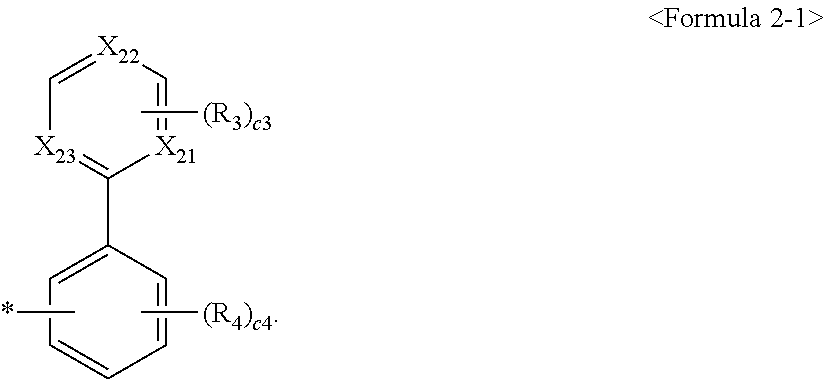
C00014
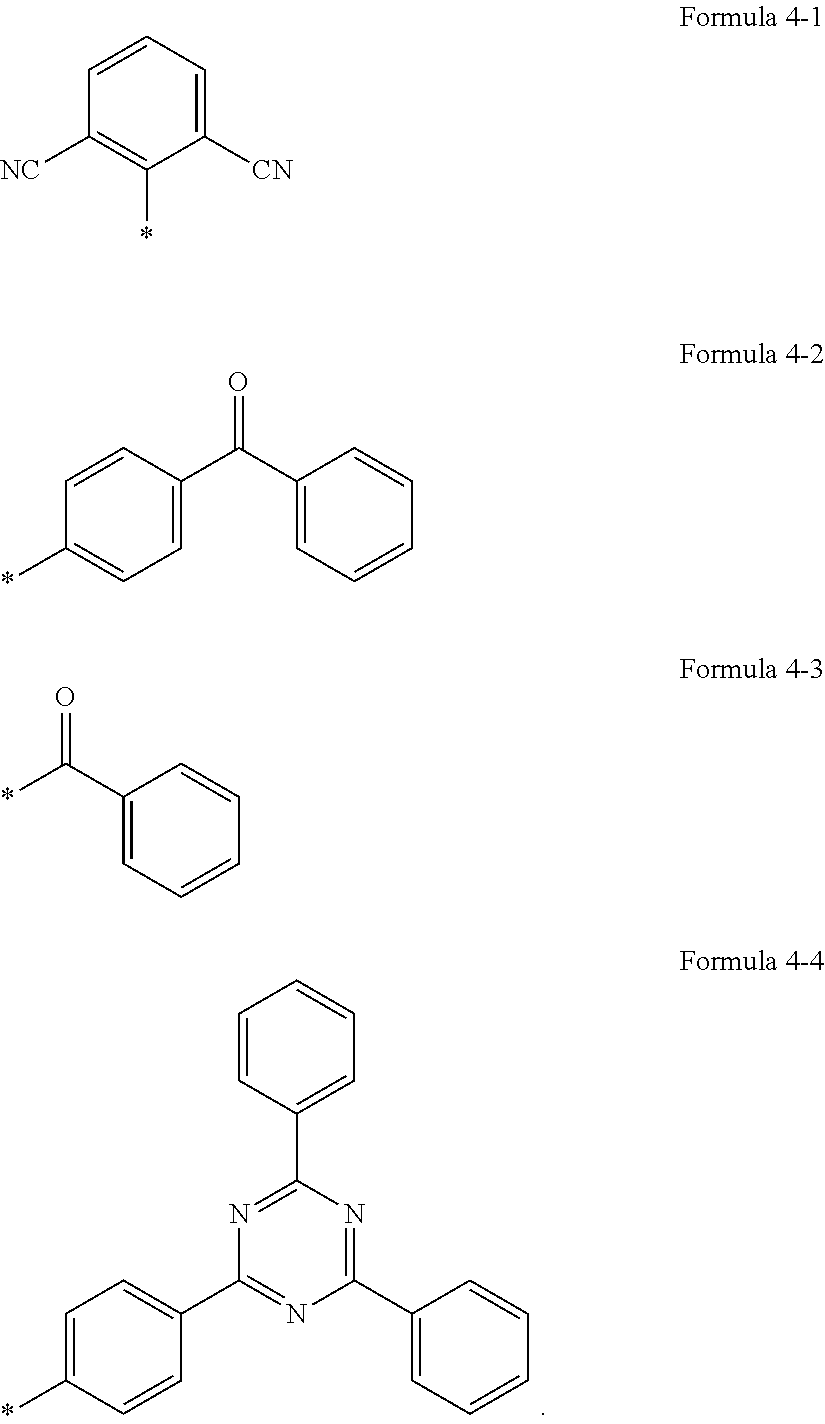
C00015

C00016
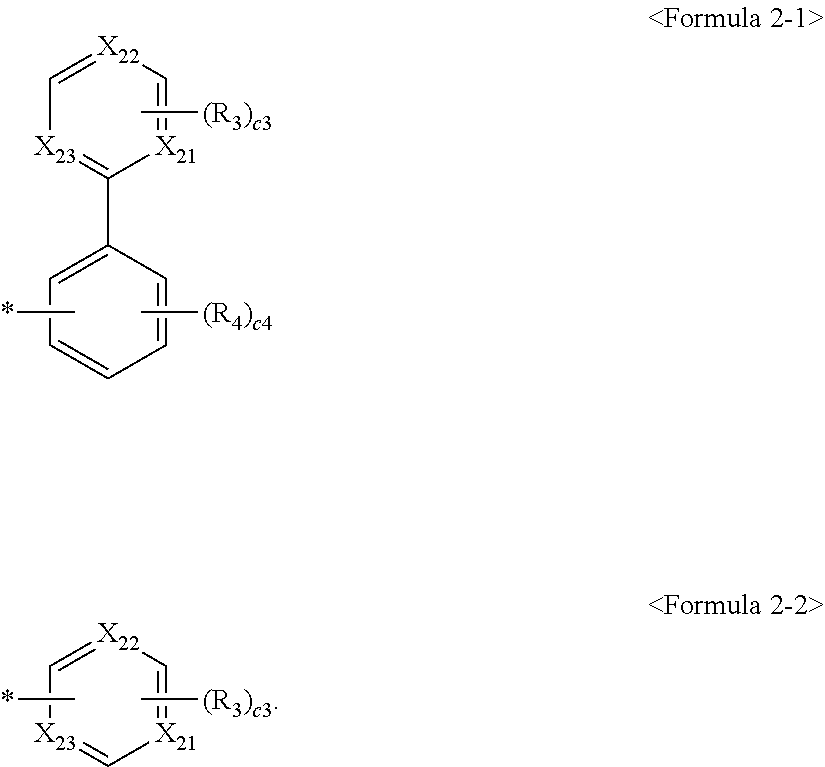
C00017

C00018
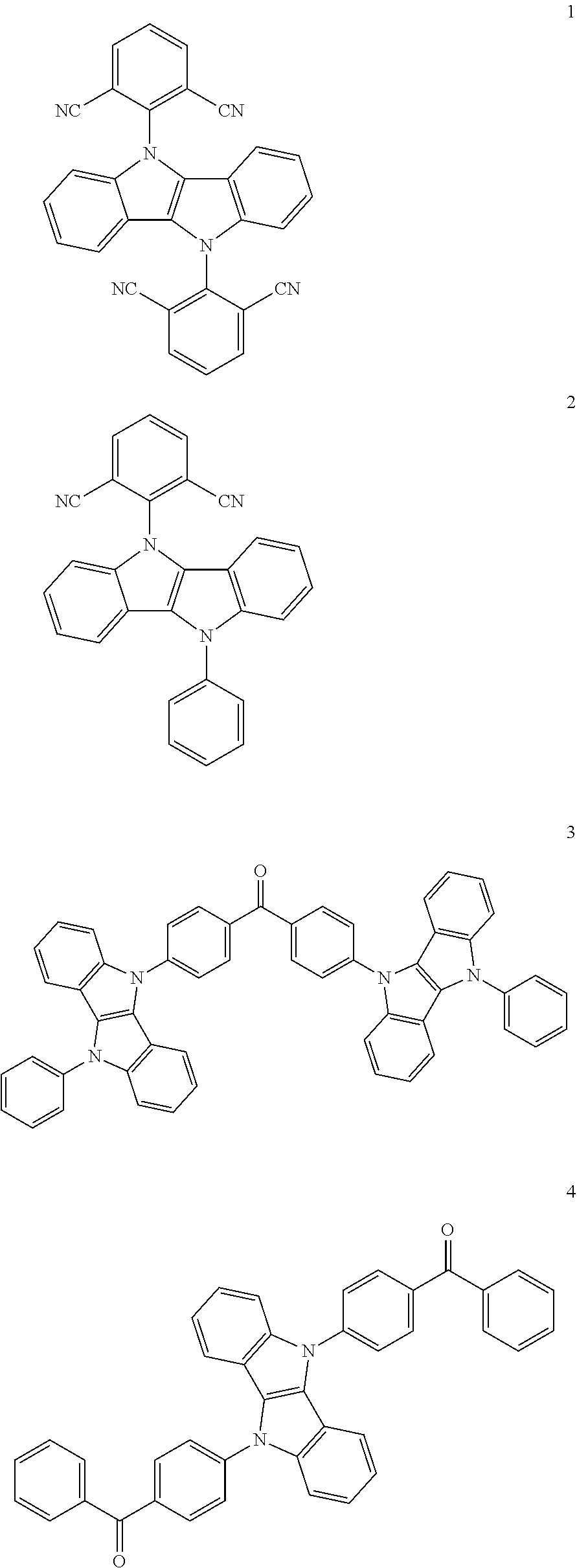
C00019
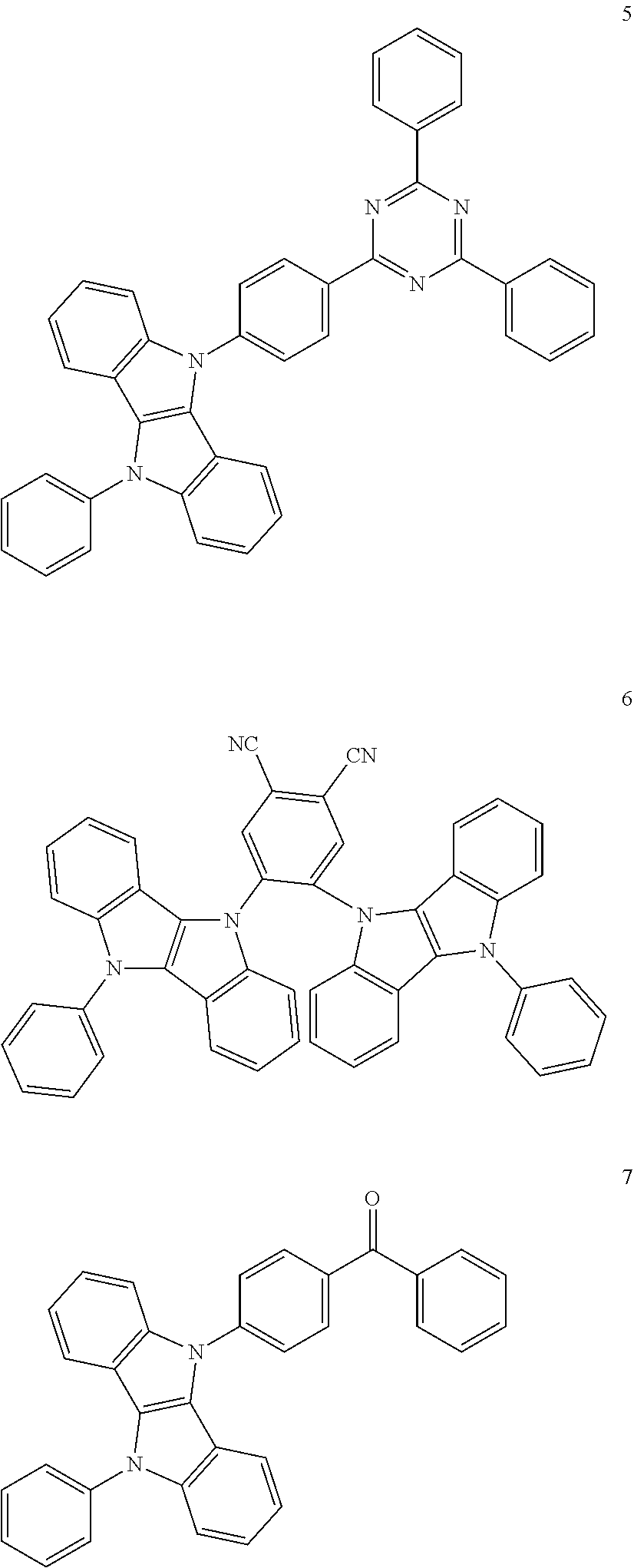
C00020
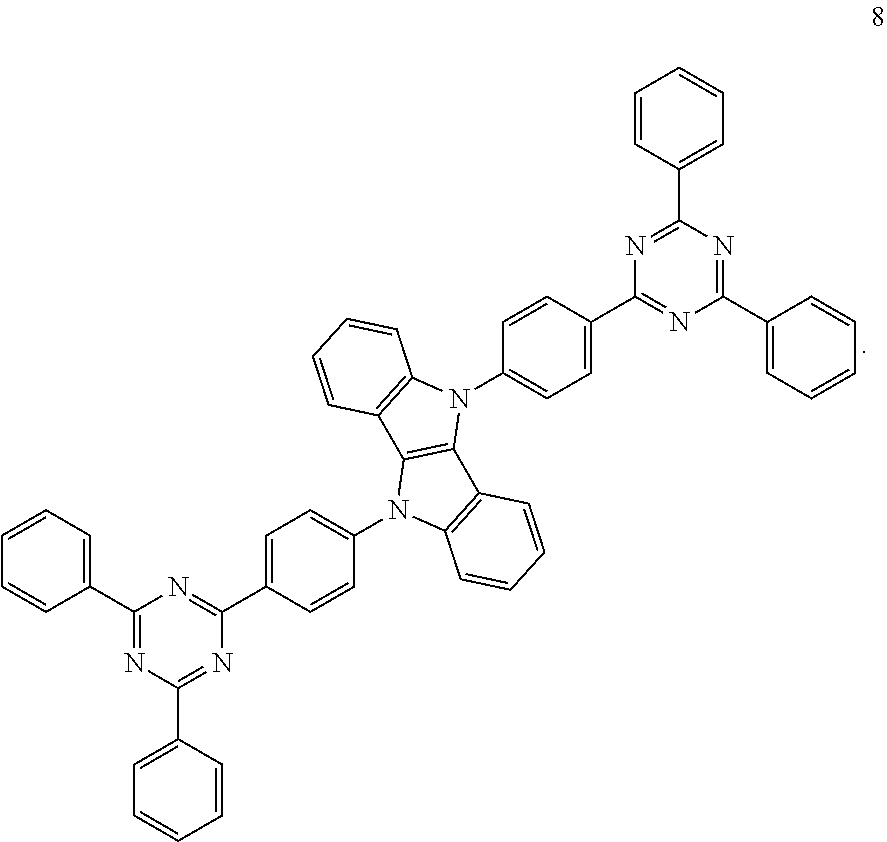
C00021

C00022

C00023

C00024
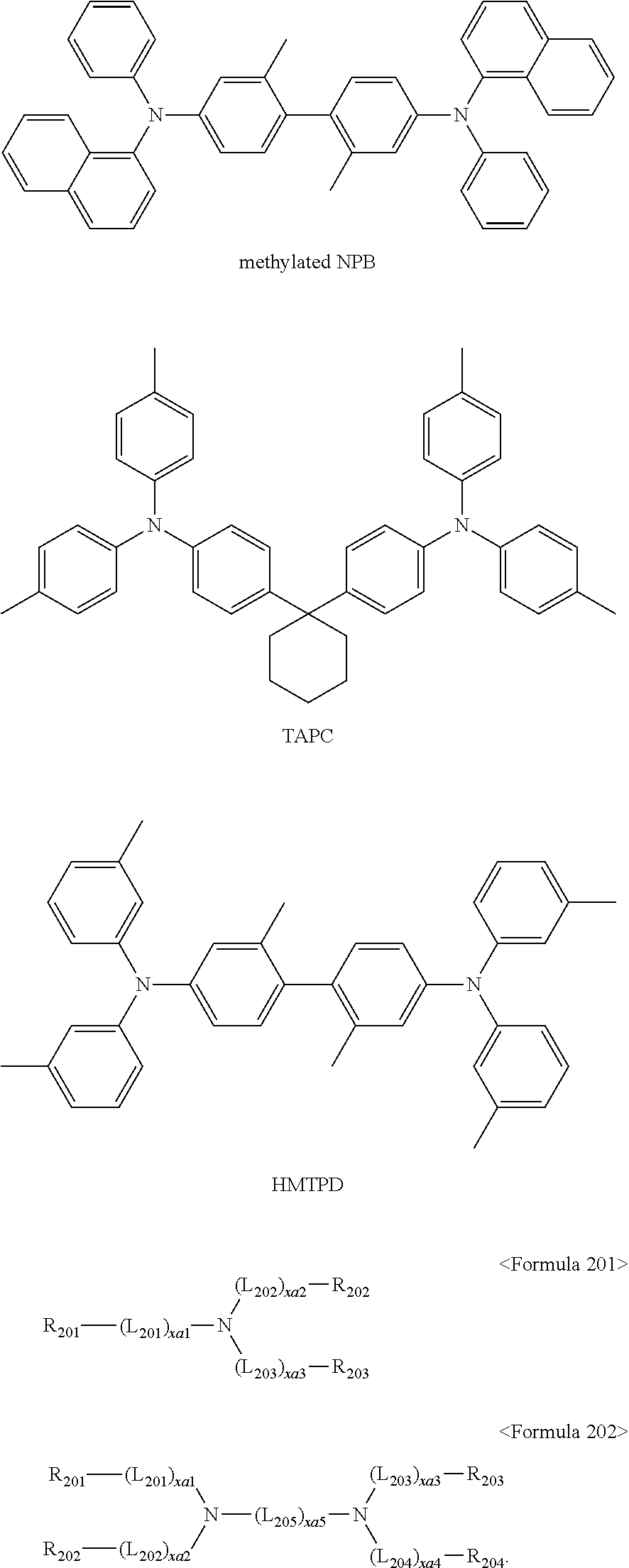
C00025
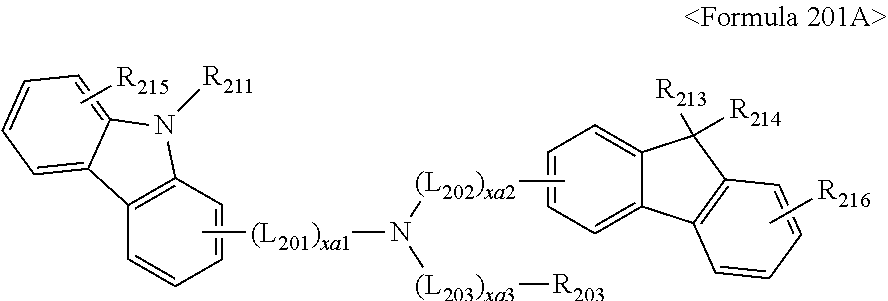
C00026

C00027
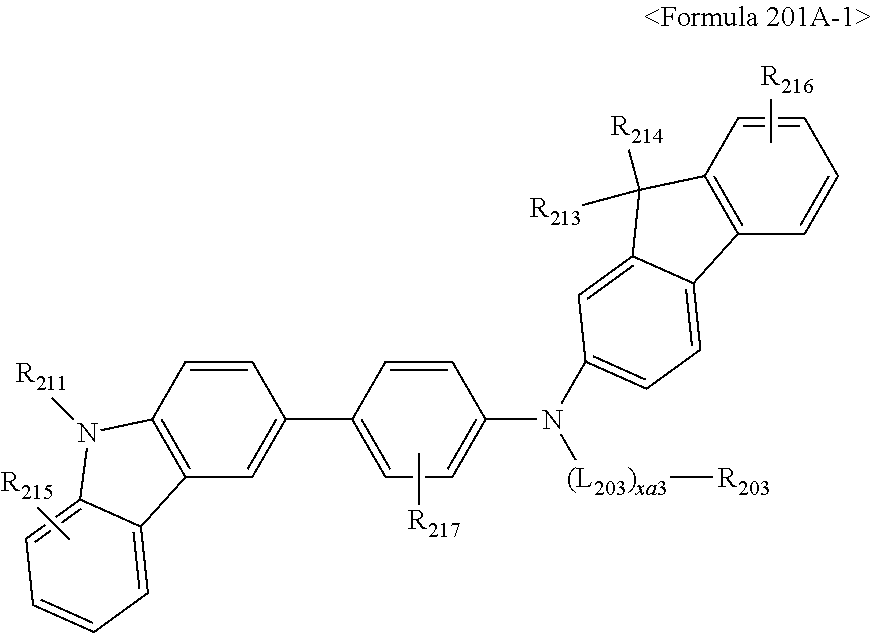
C00028
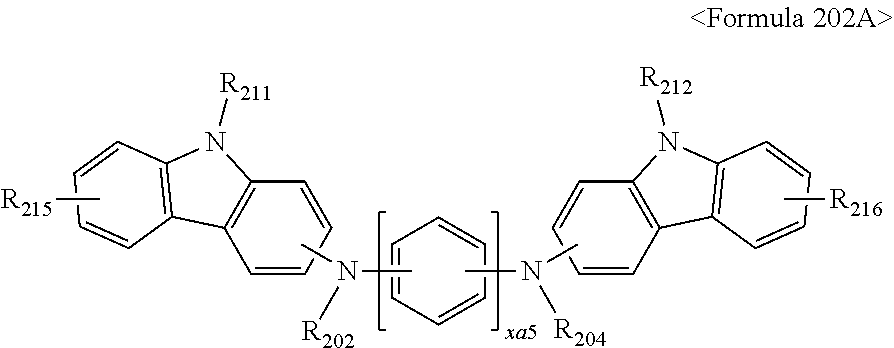
C00029

C00030
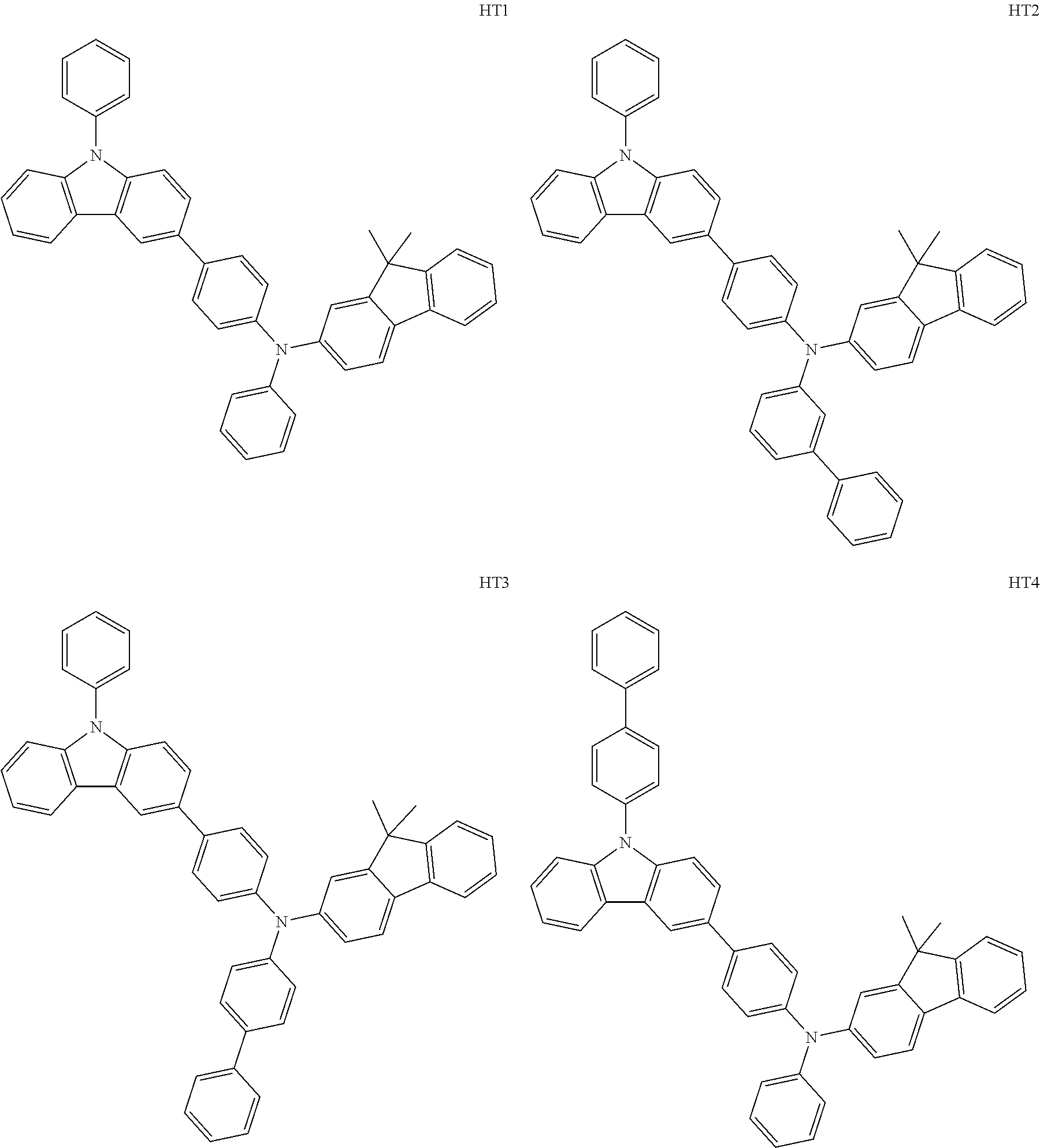
C00031
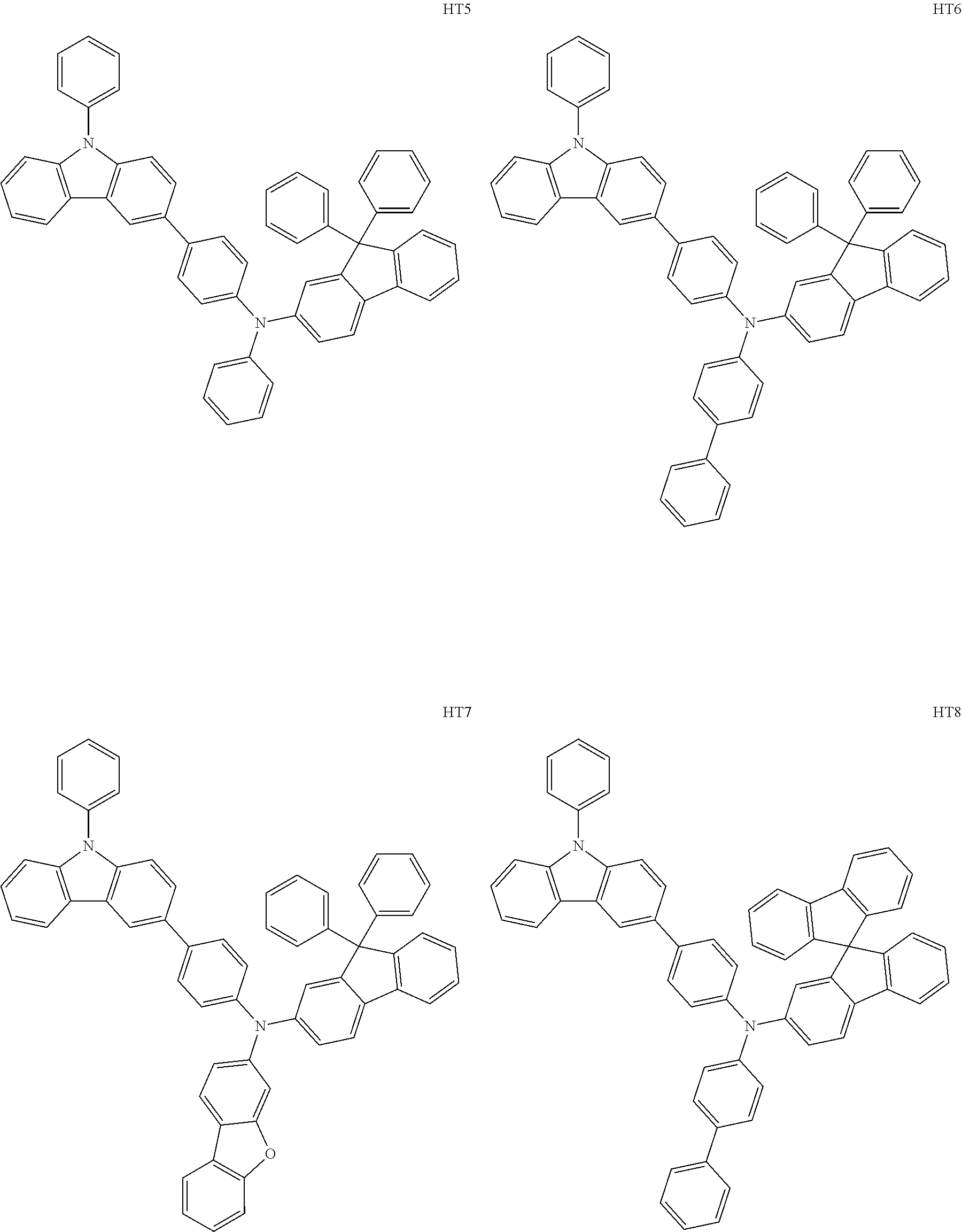
C00032

C00033

C00034

C00035
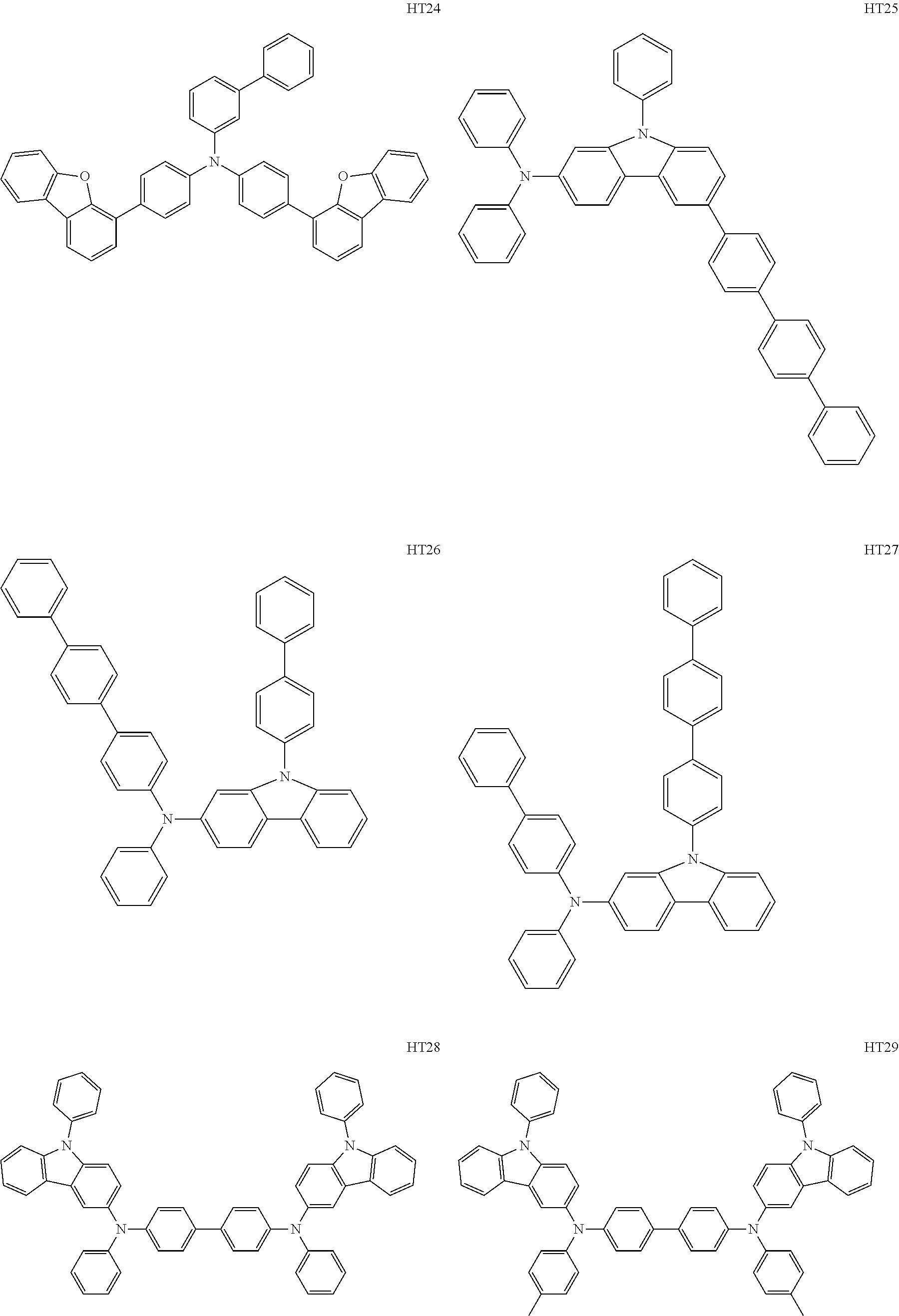
C00036
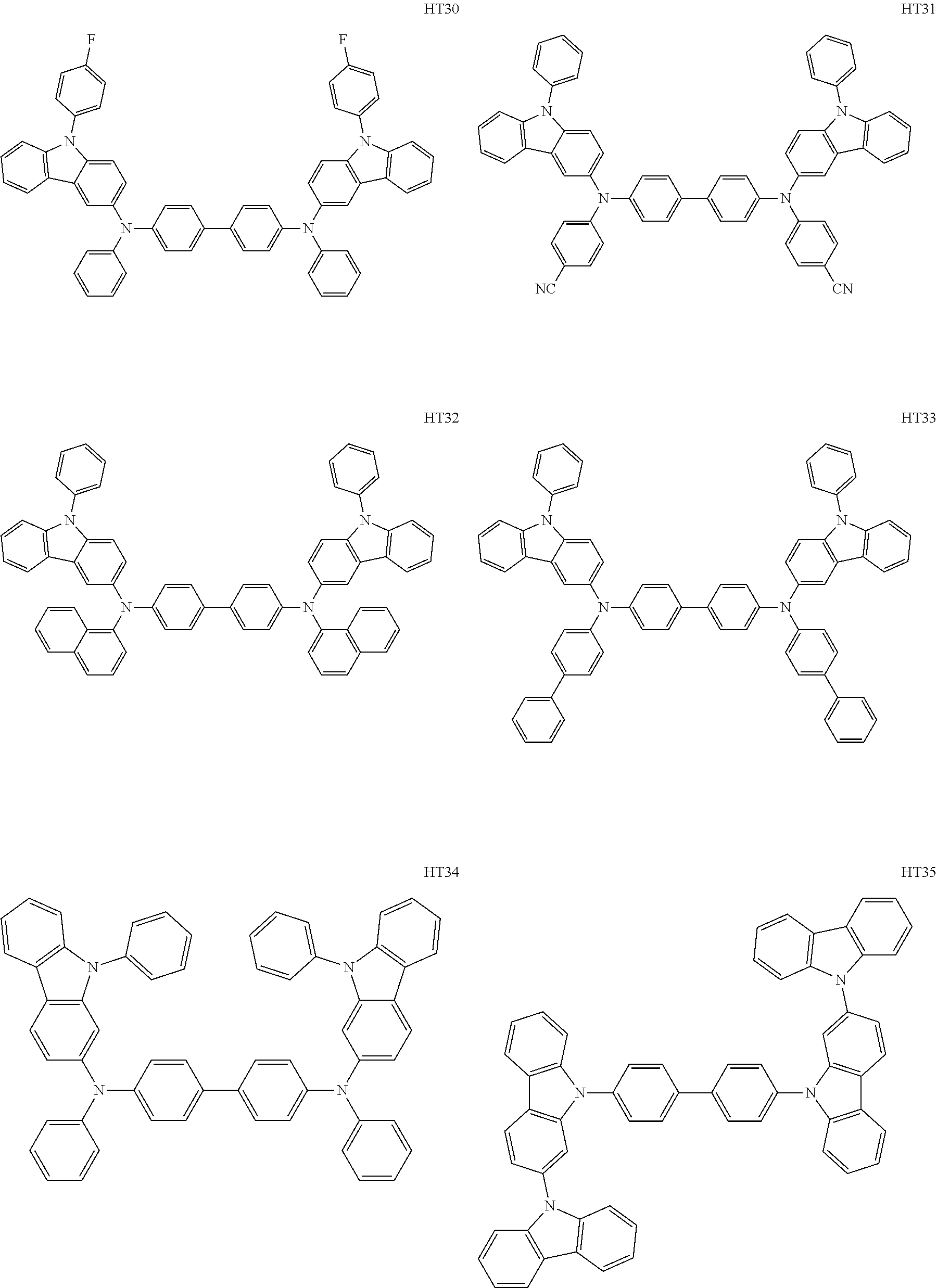
C00037
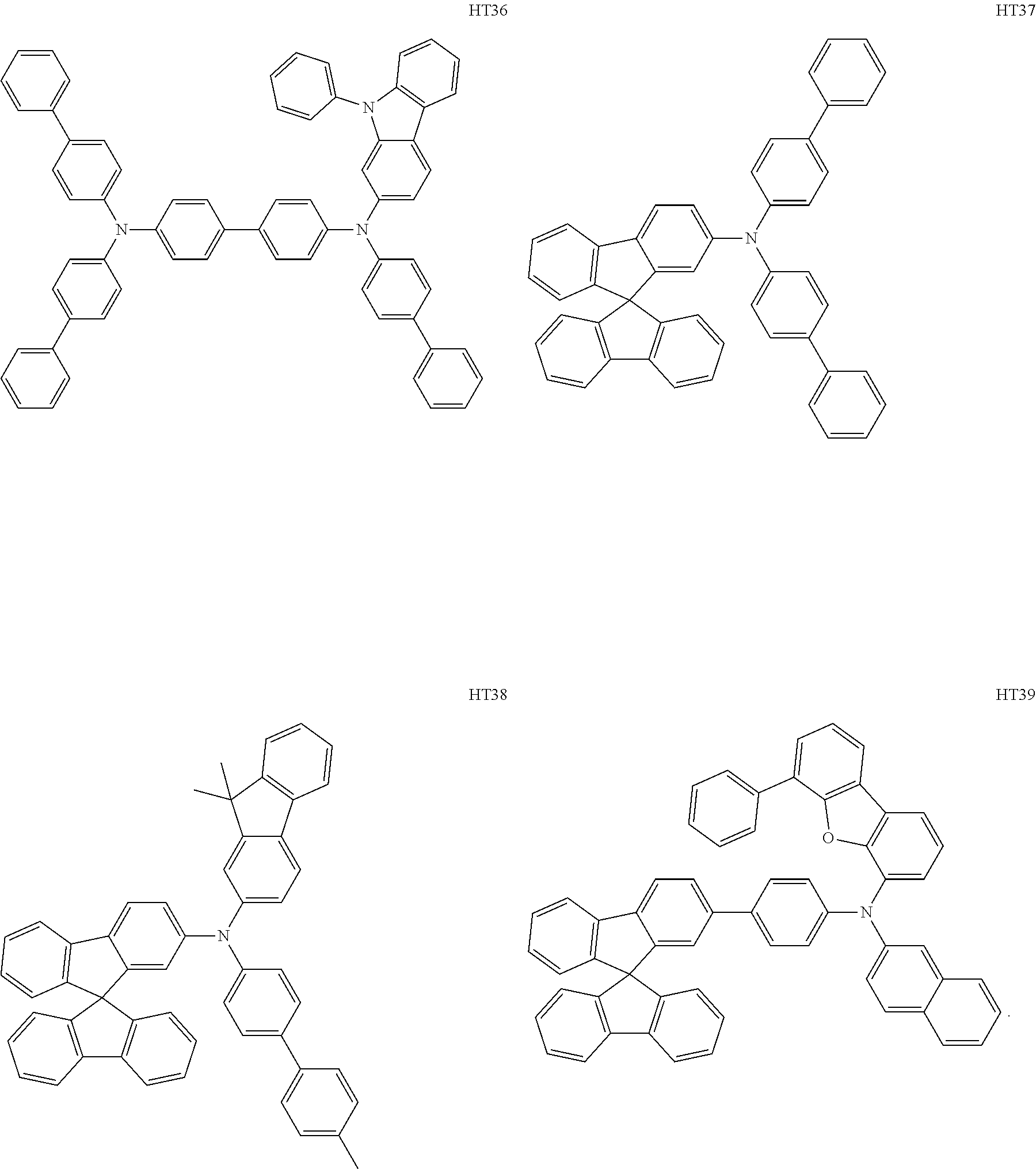
C00038
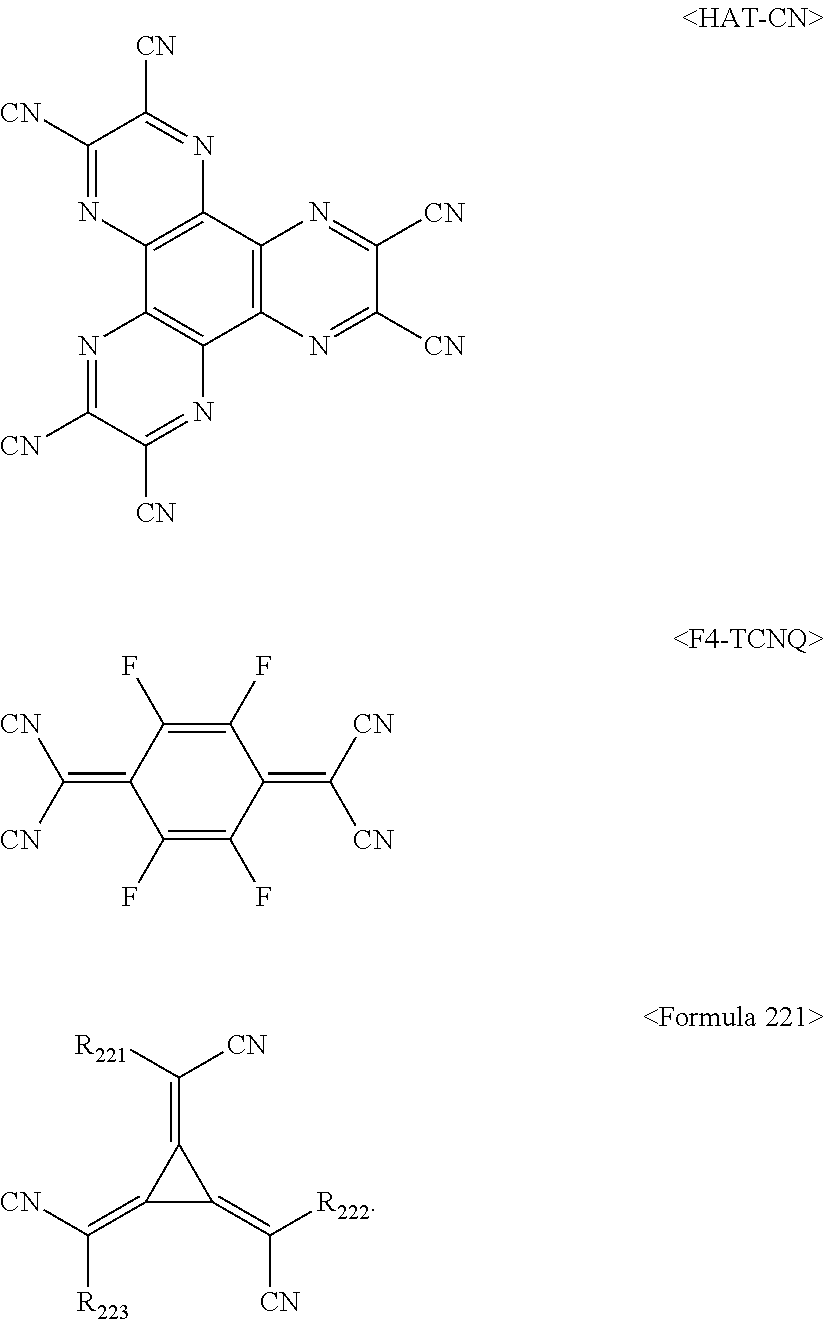
C00039

C00040
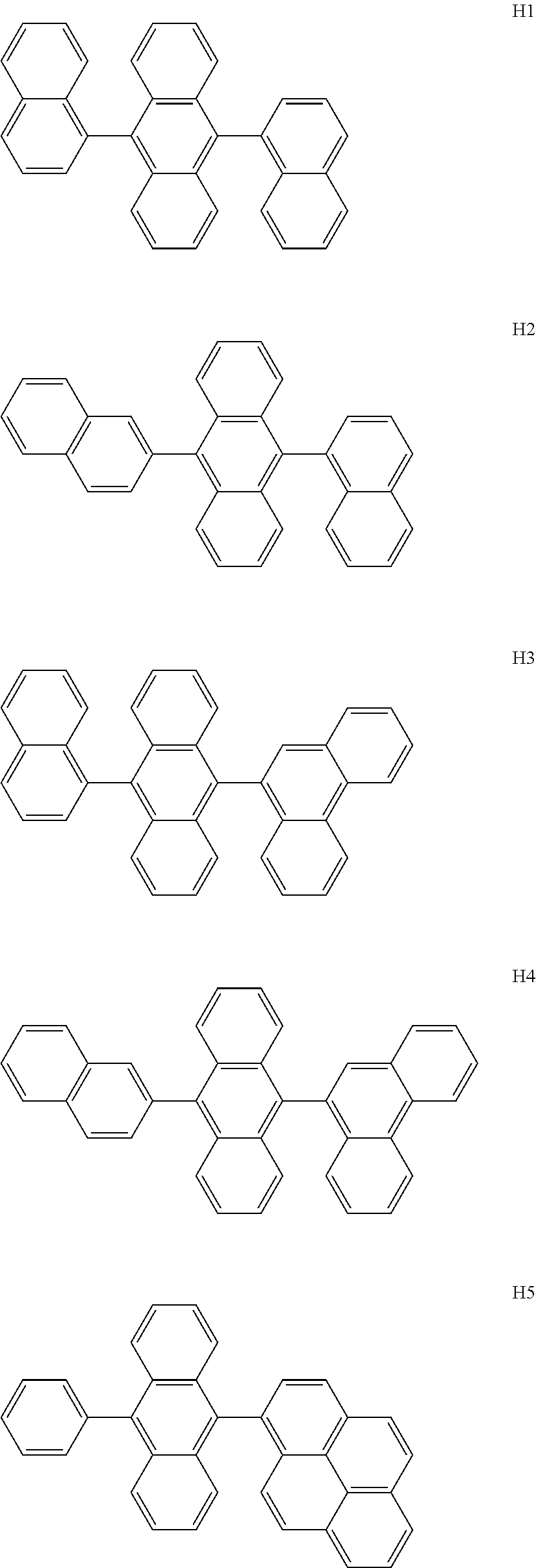
C00041

C00042

C00043

C00044
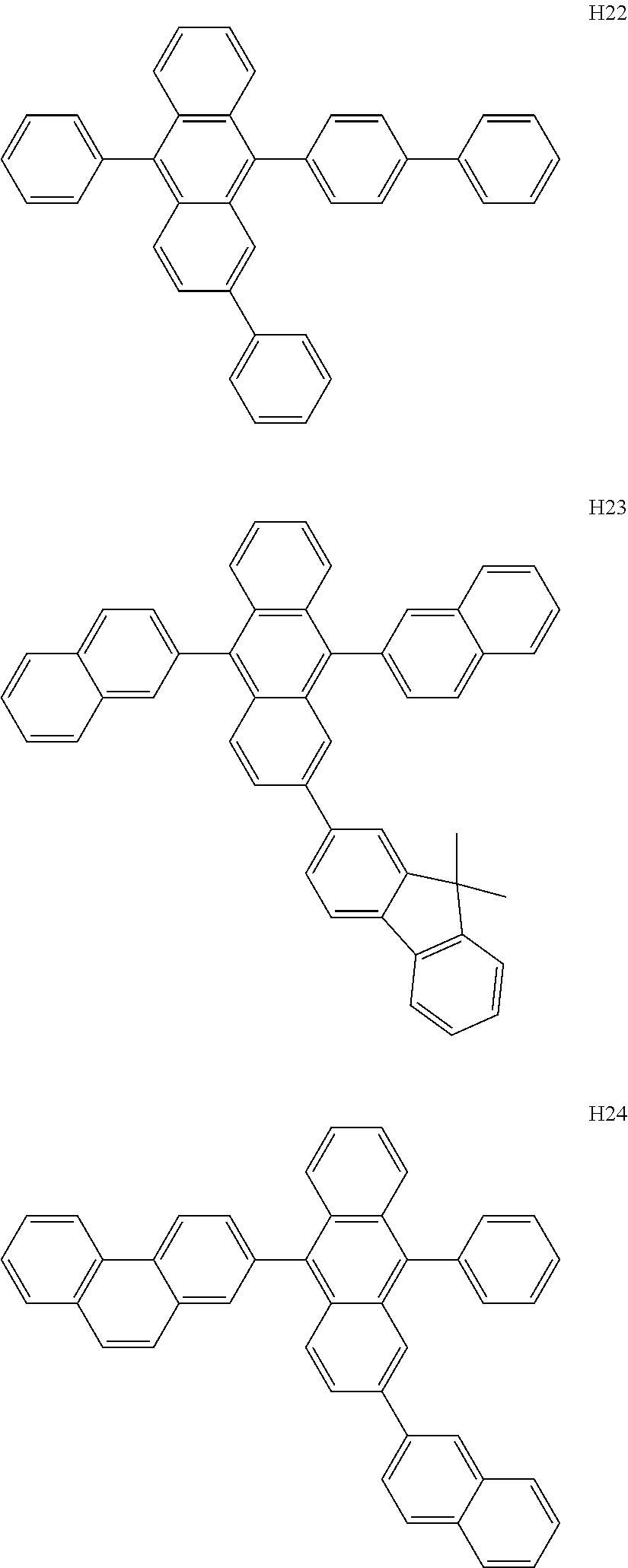
C00045

C00046

C00047

C00048

C00049

C00050

C00051

C00052
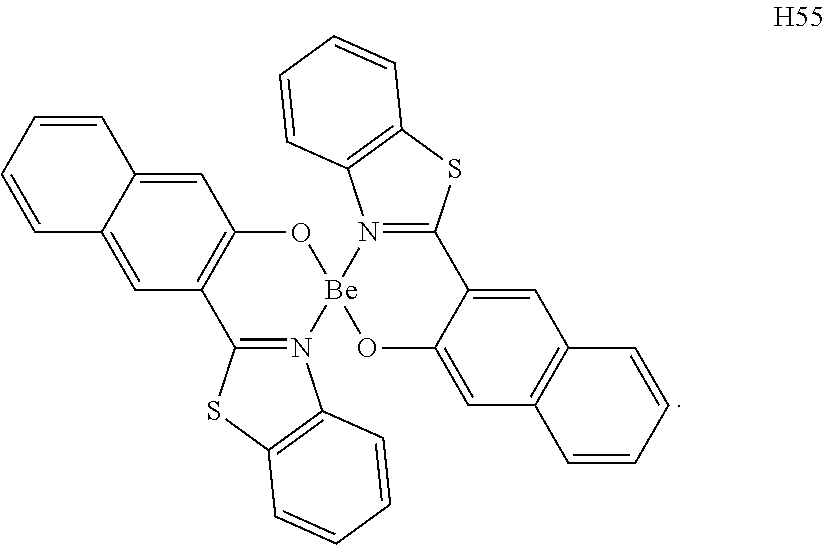
C00053
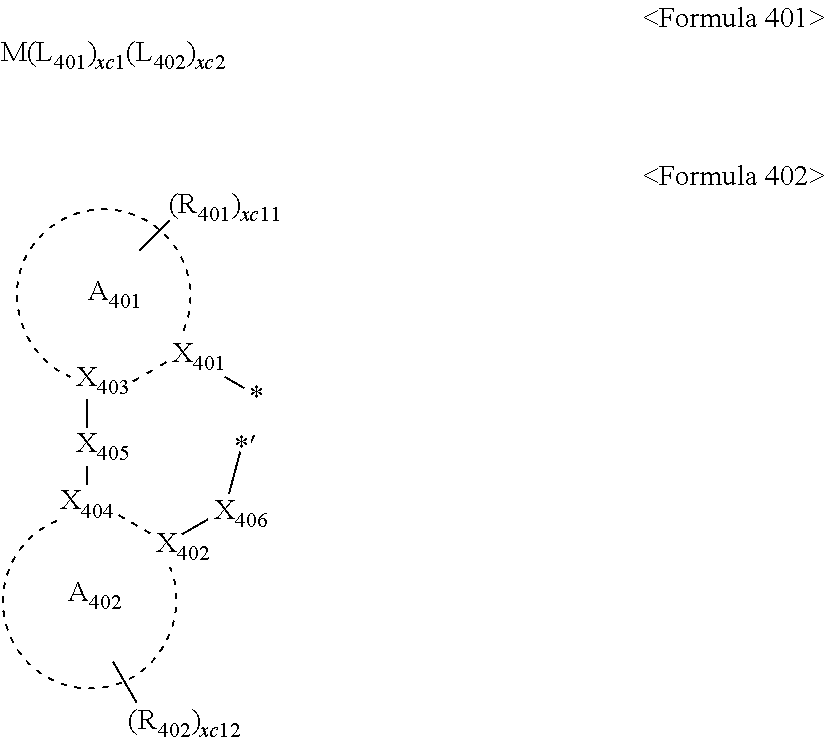
C00054

C00055

C00056

C00057

C00058

C00059

C00060

C00061

C00062

C00063

C00064

C00065

C00066
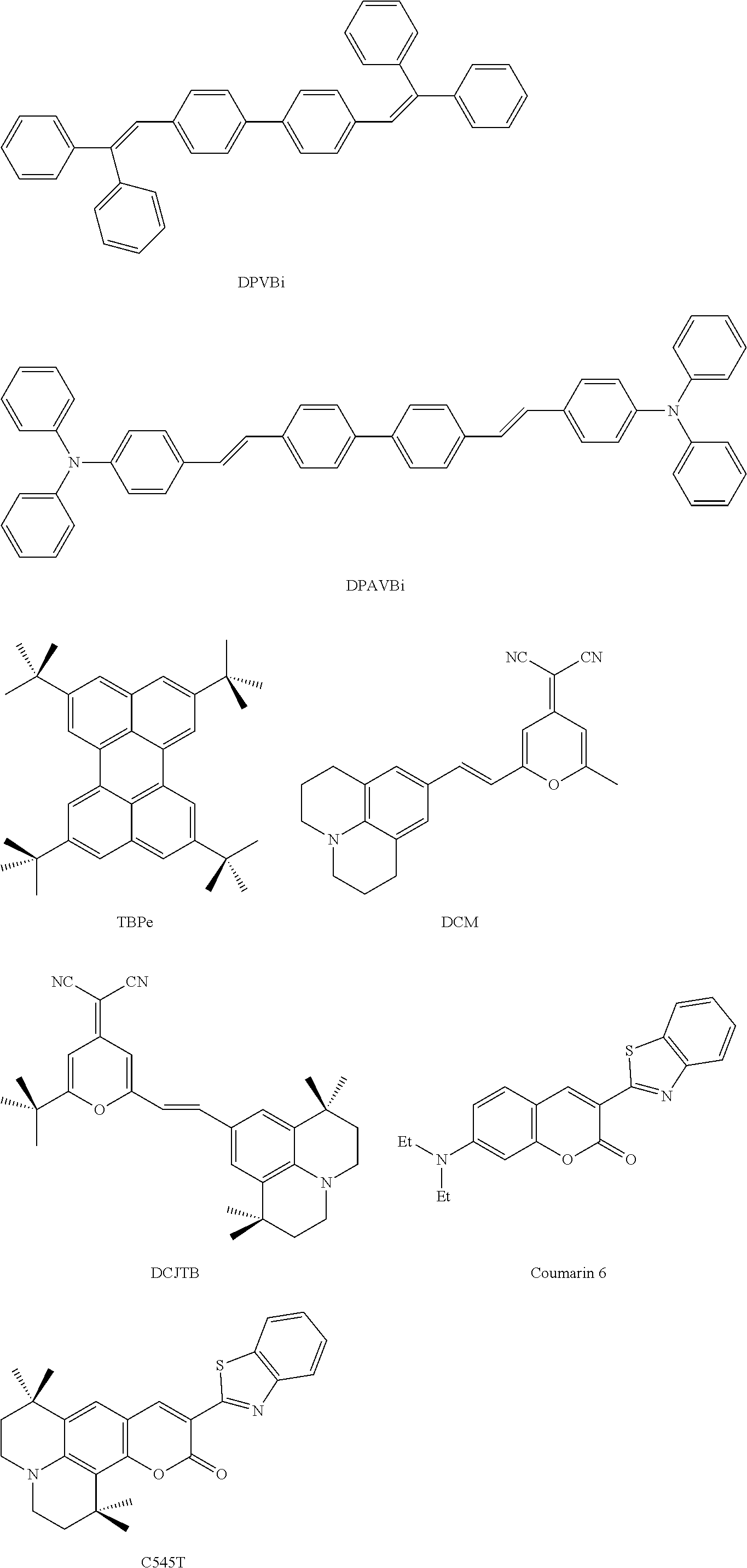
C00067
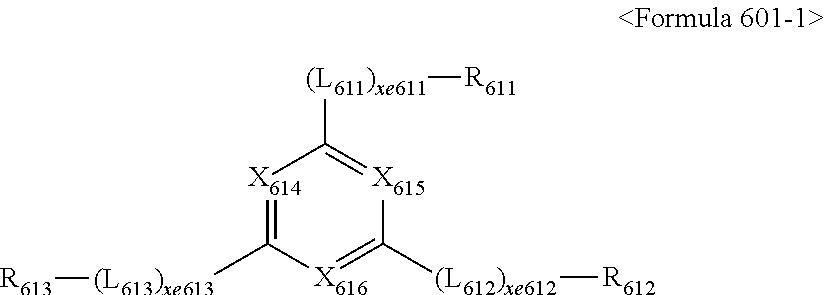
C00068

C00069

C00070

C00071

C00072

C00073

C00074
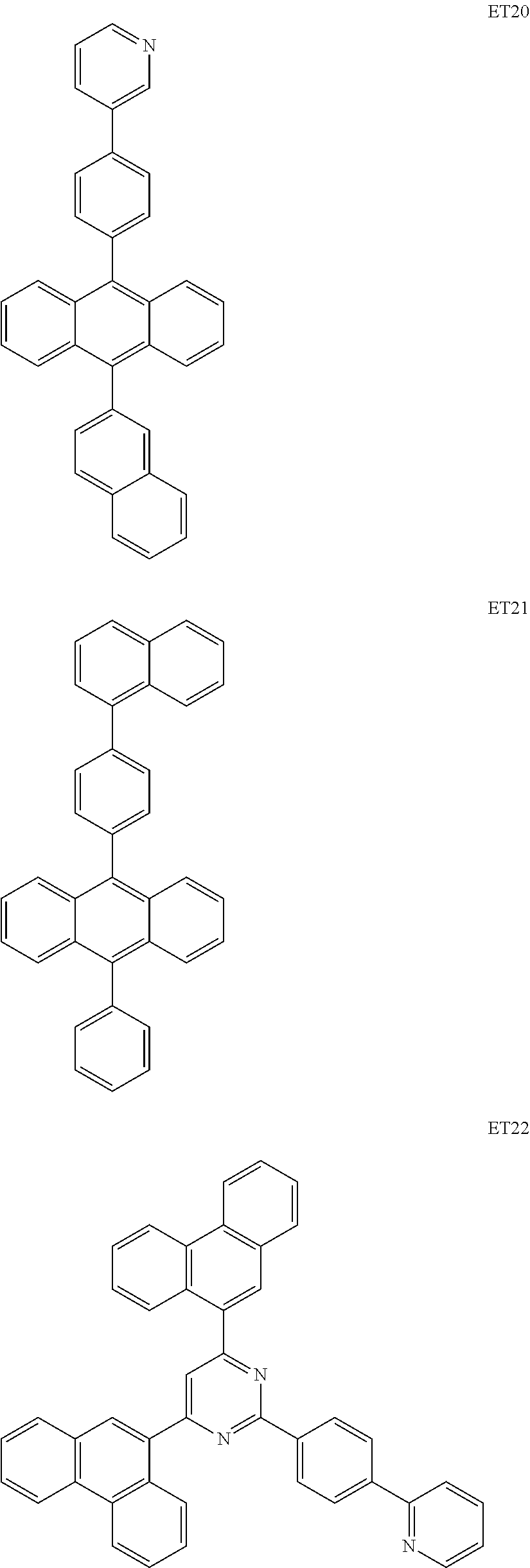
C00075

C00076
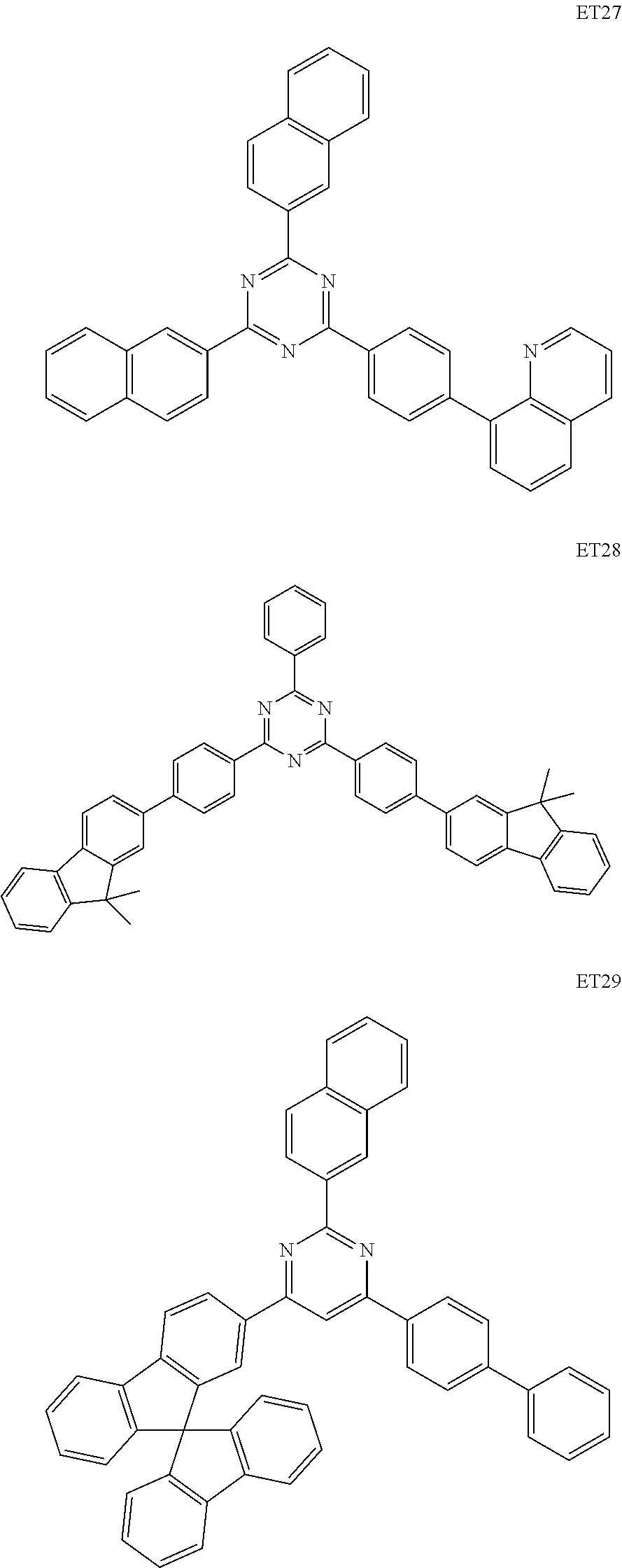
C00077
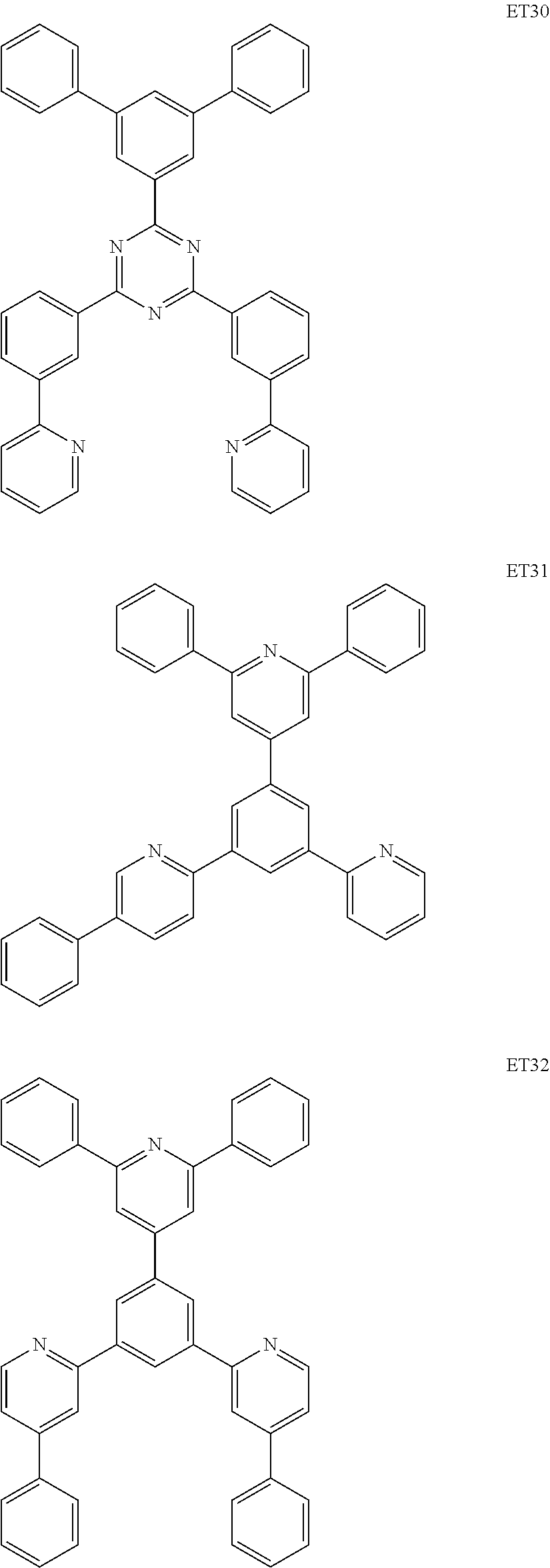
C00078

C00079
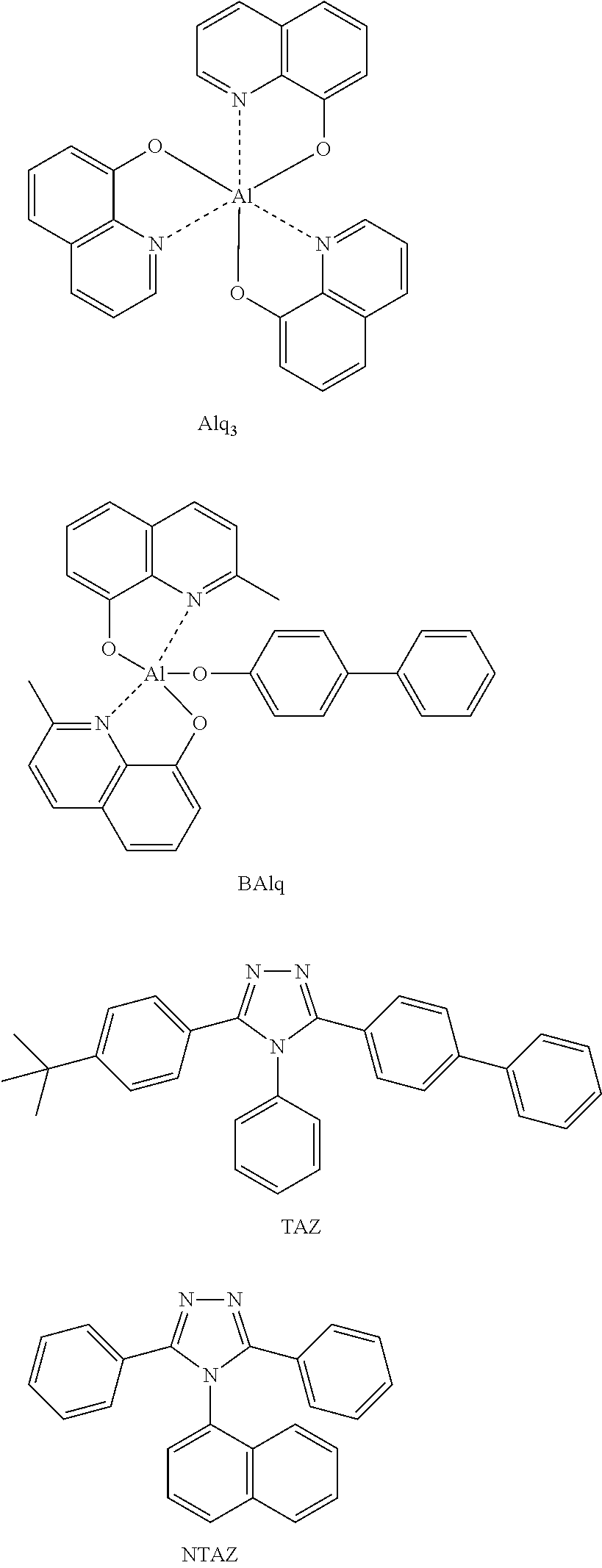
C00080

C00081

C00082

C00083

C00084
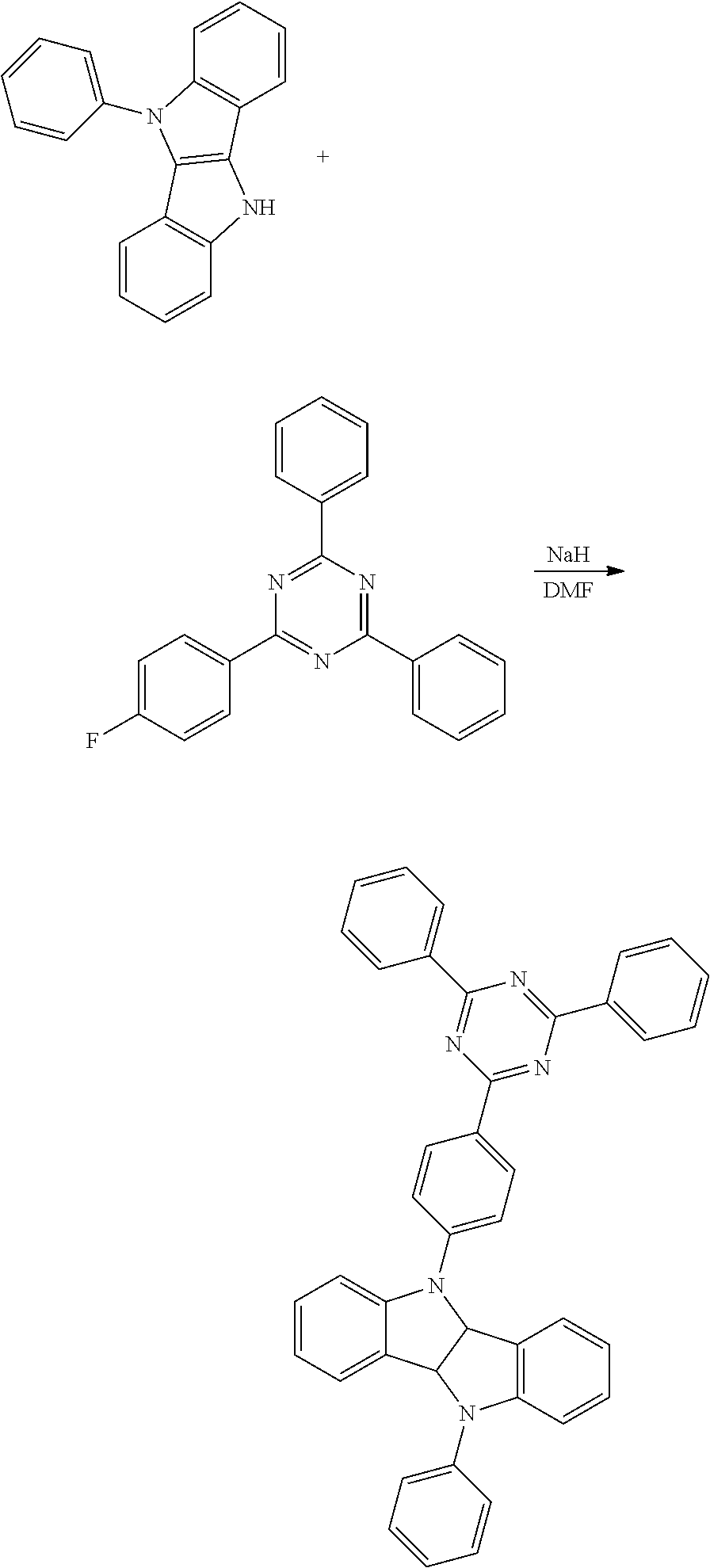
C00085
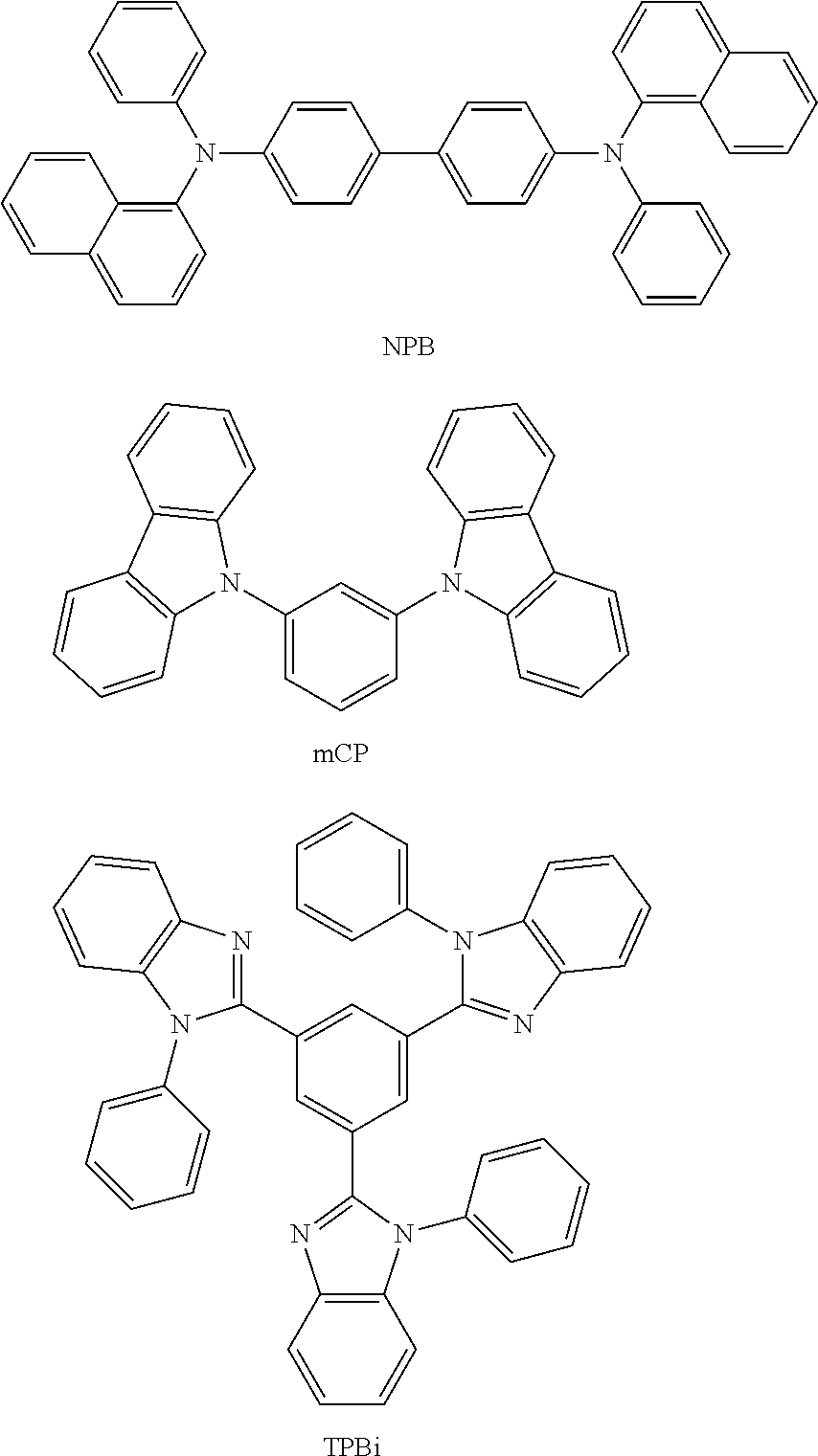
C00086
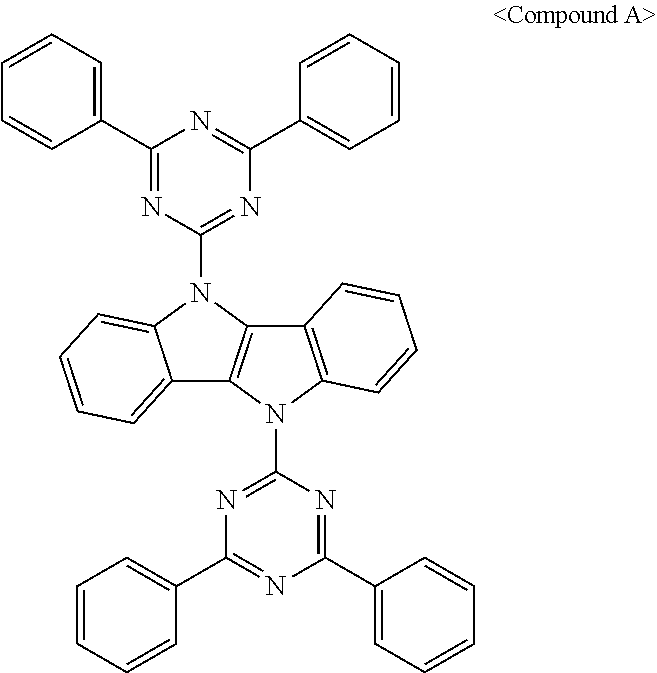
C00087

C00088
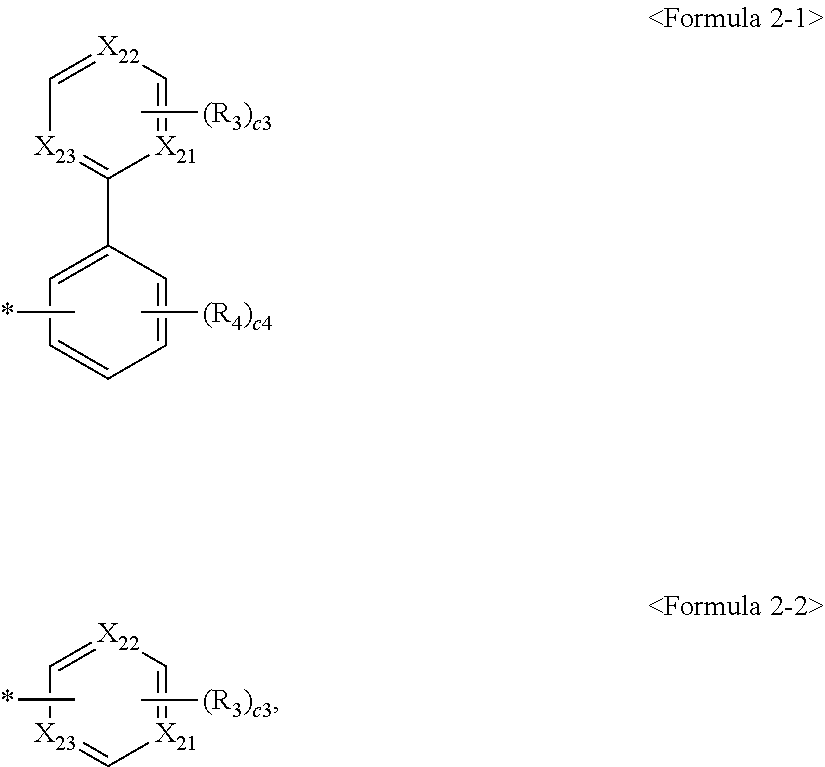
C00089

C00090

C00091

C00092
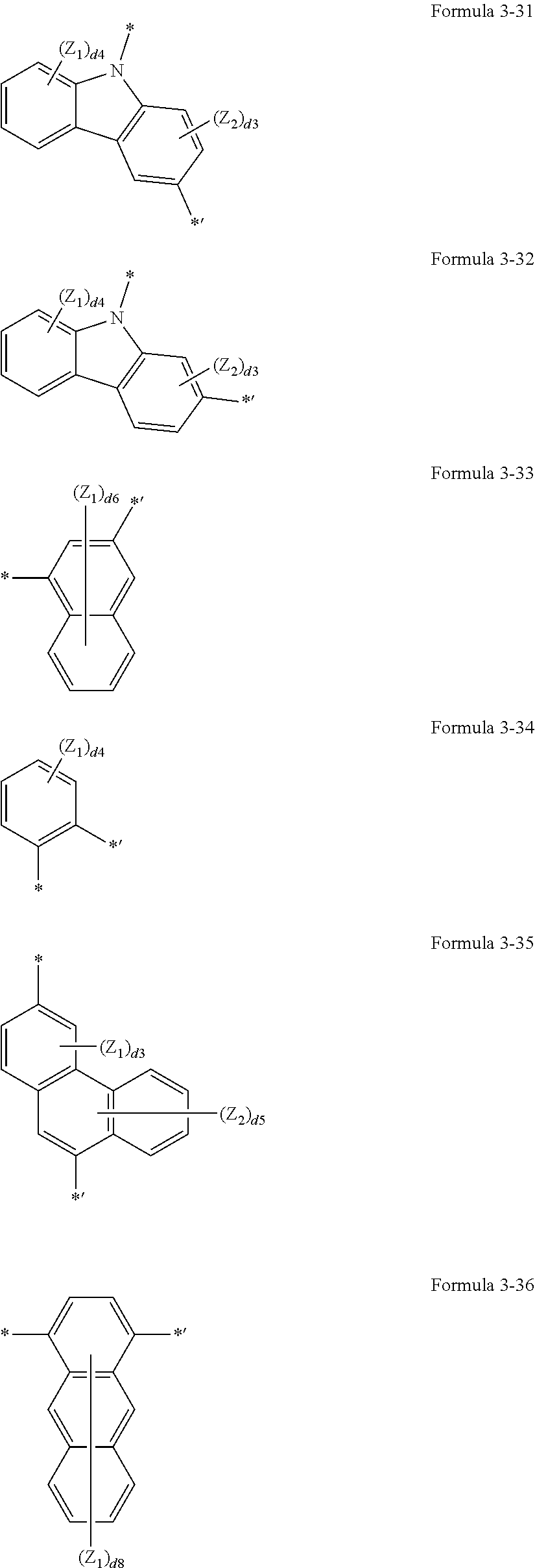
C00093

C00094
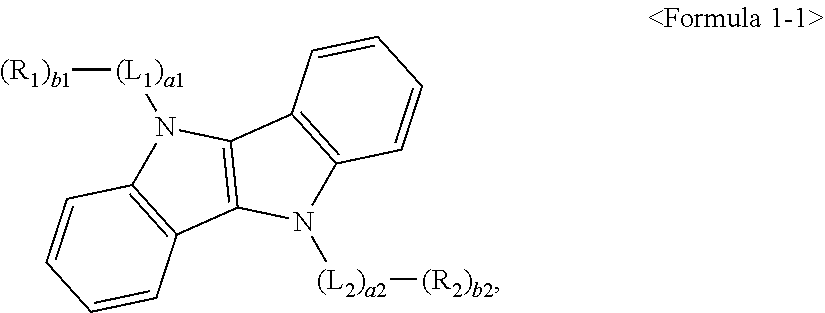
C00095
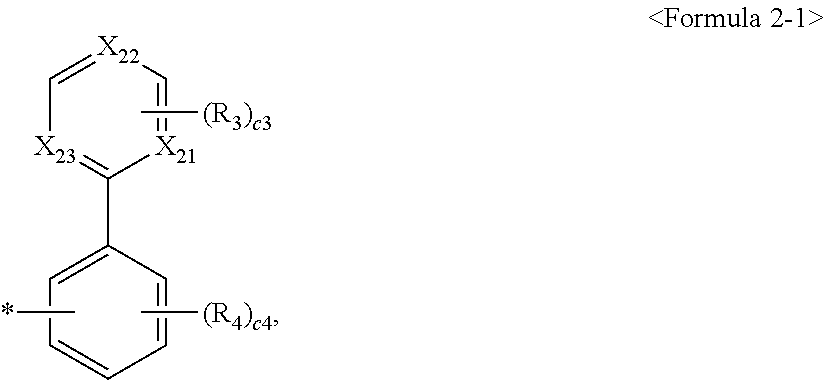
C00096

C00097

C00098
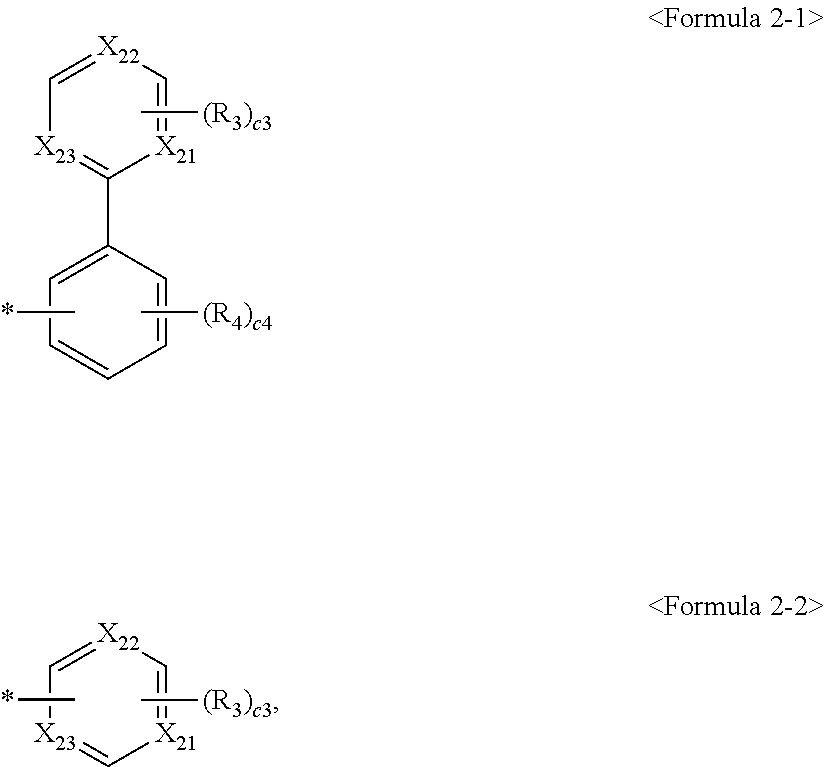
C00099
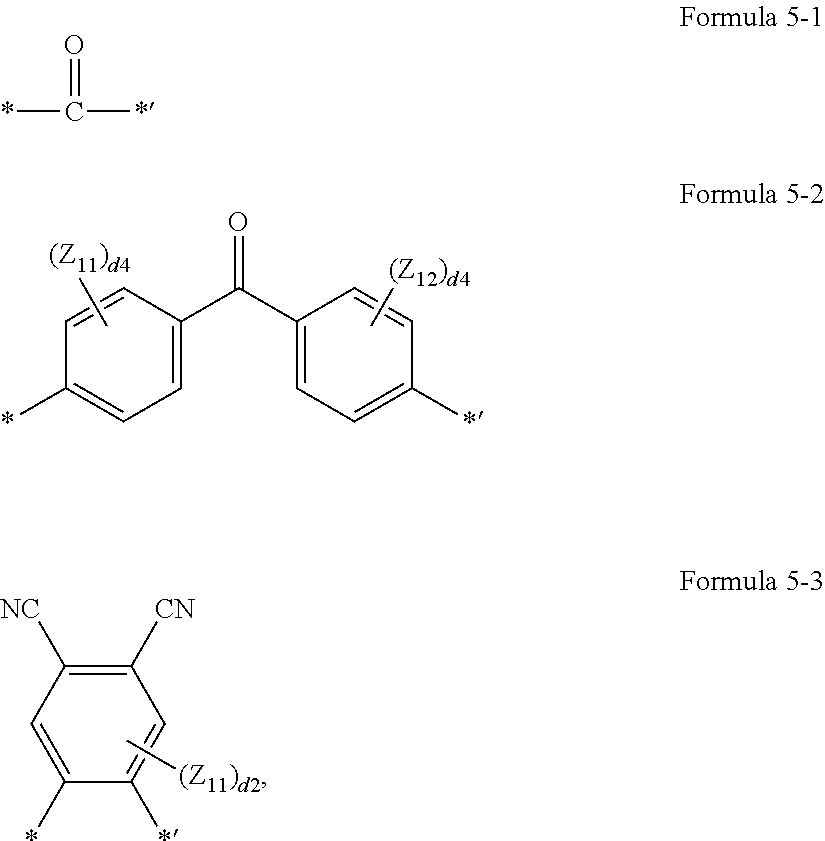
C00100
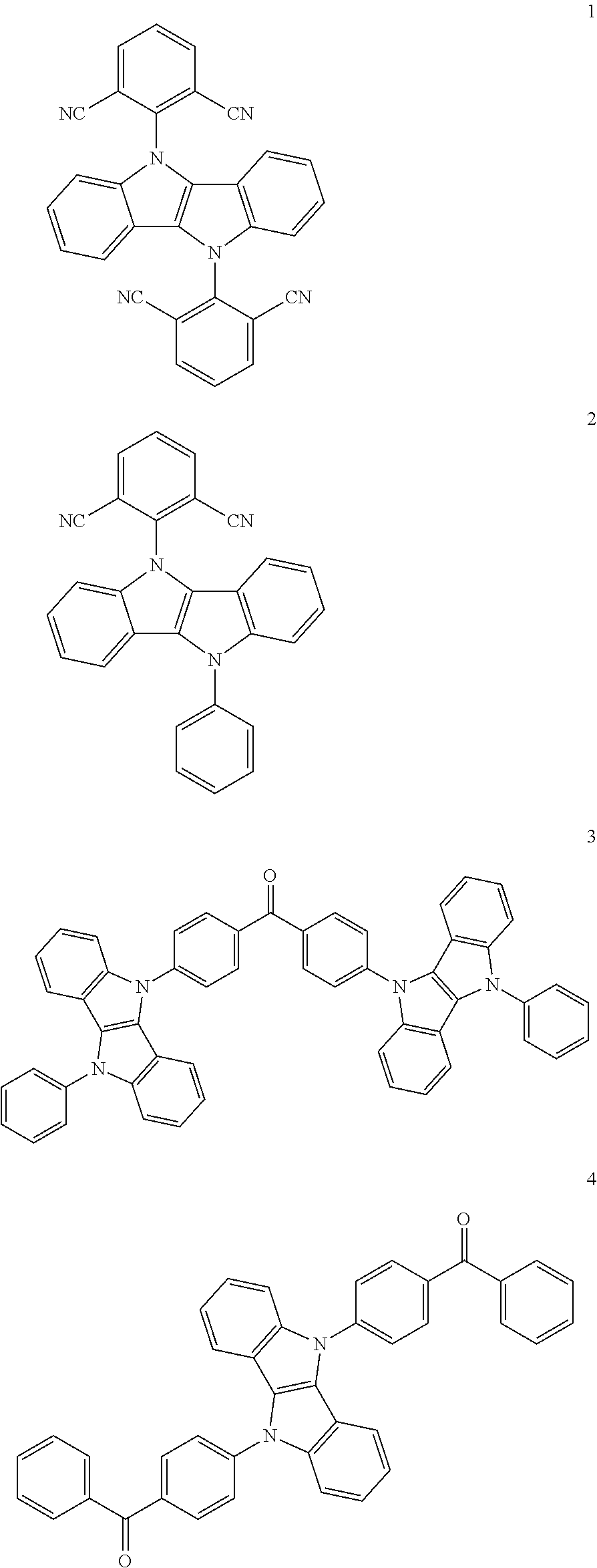
C00101

D00000

D00001

D00002

D00003
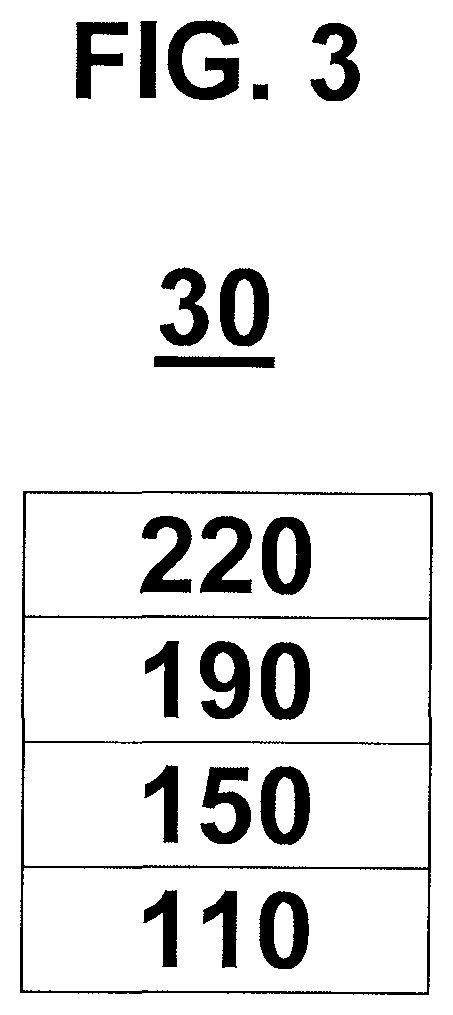
D00004
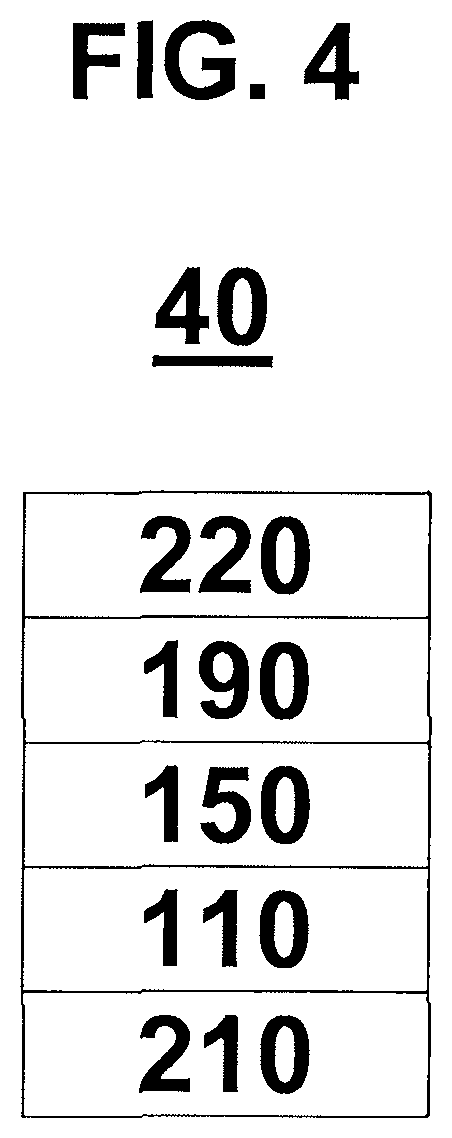
XML
uspto.report is an independent third-party trademark research tool that is not affiliated, endorsed, or sponsored by the United States Patent and Trademark Office (USPTO) or any other governmental organization. The information provided by uspto.report is based on publicly available data at the time of writing and is intended for informational purposes only.
While we strive to provide accurate and up-to-date information, we do not guarantee the accuracy, completeness, reliability, or suitability of the information displayed on this site. The use of this site is at your own risk. Any reliance you place on such information is therefore strictly at your own risk.
All official trademark data, including owner information, should be verified by visiting the official USPTO website at www.uspto.gov. This site is not intended to replace professional legal advice and should not be used as a substitute for consulting with a legal professional who is knowledgeable about trademark law.